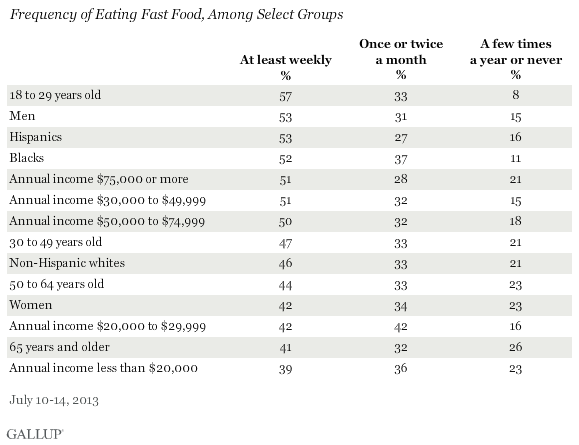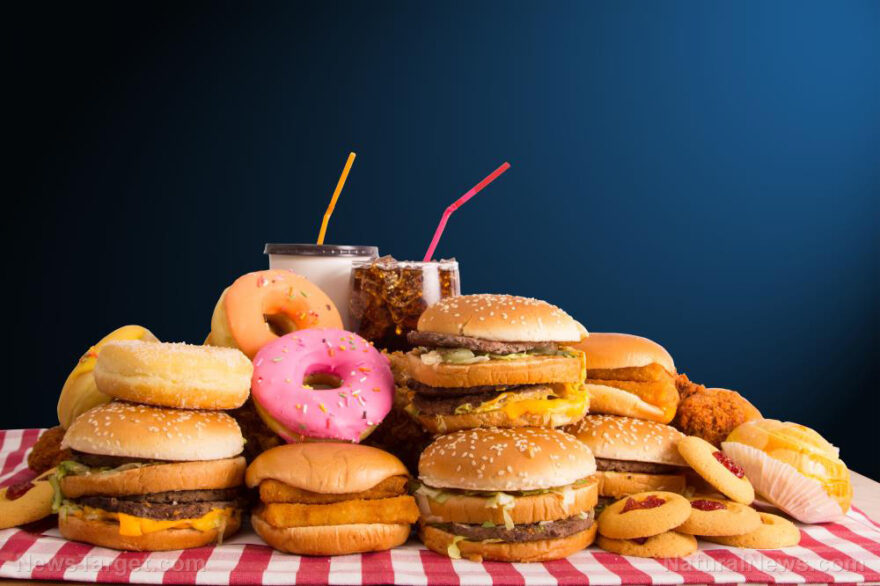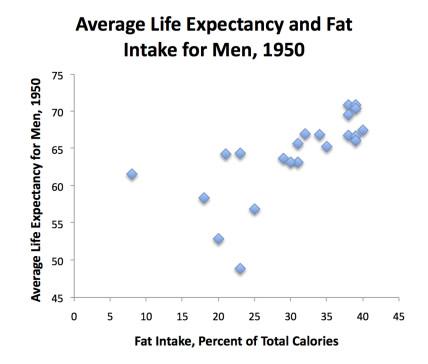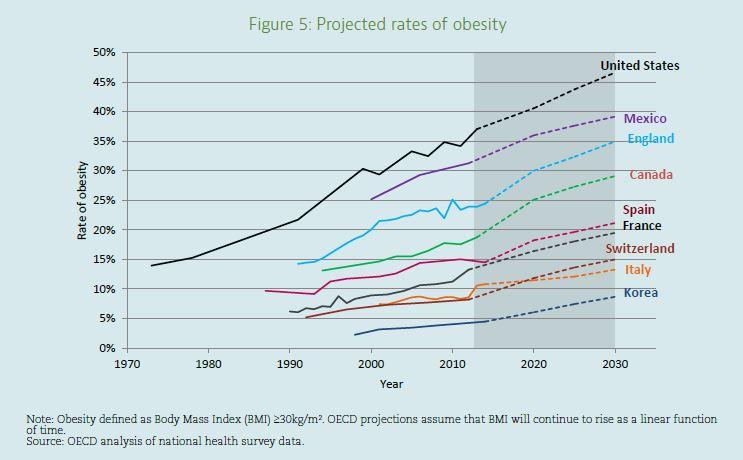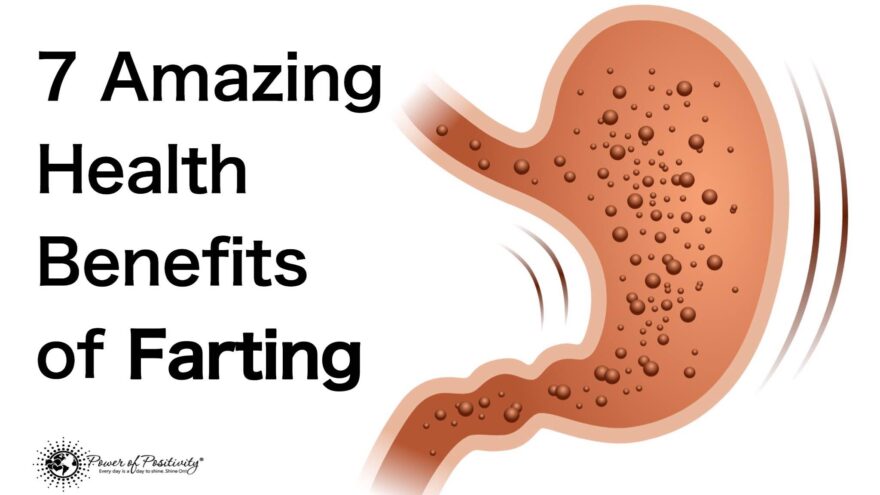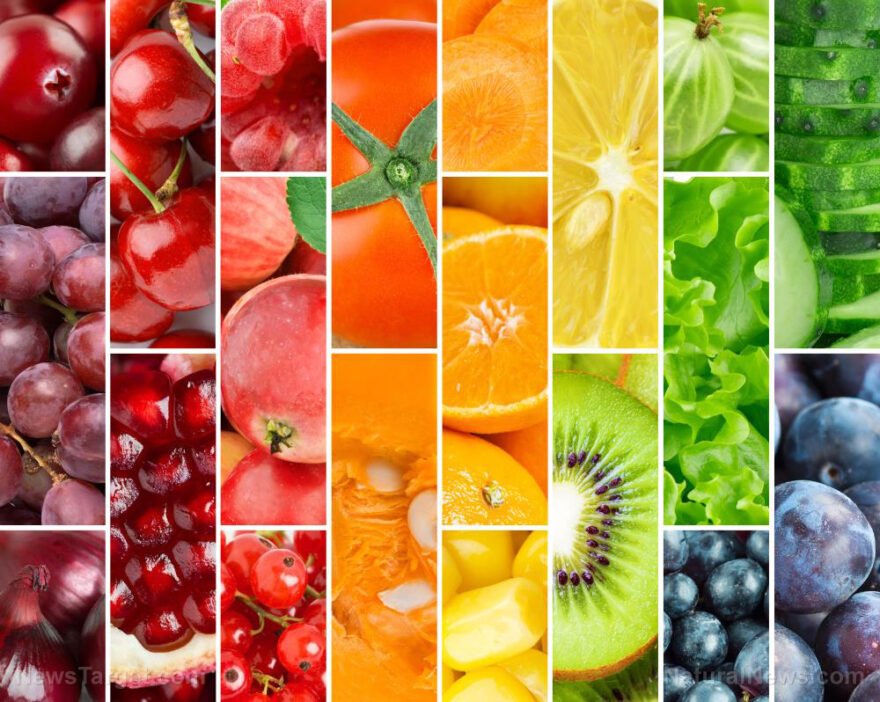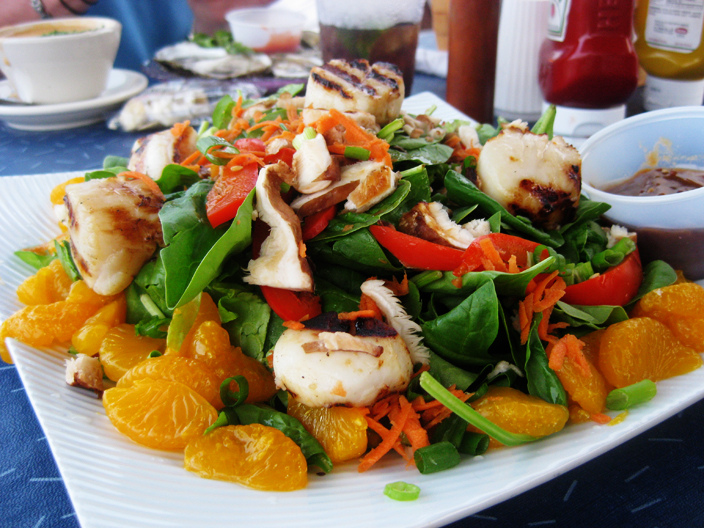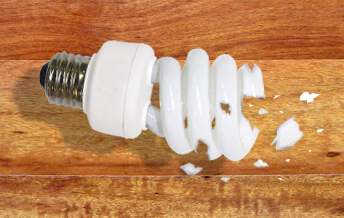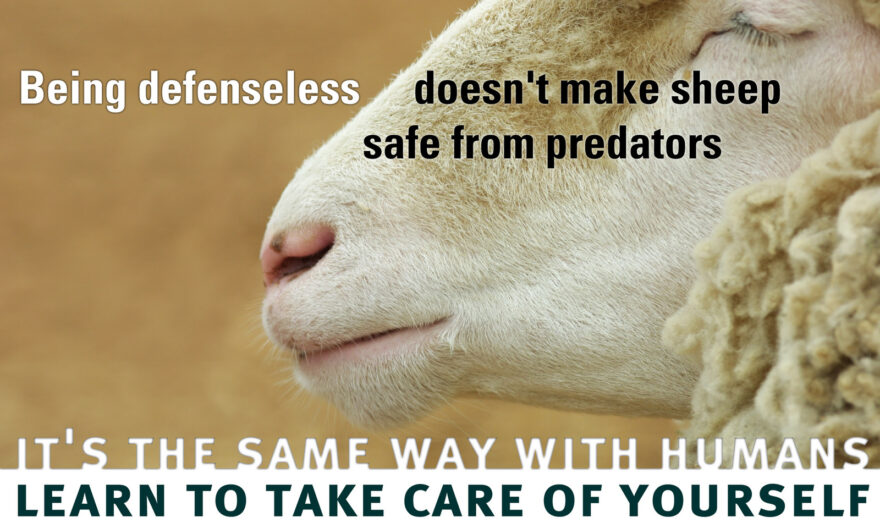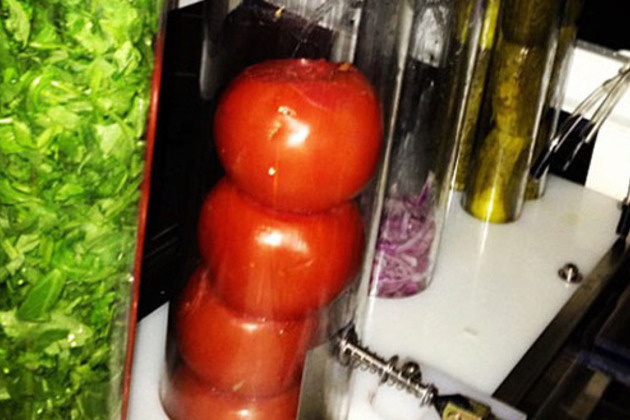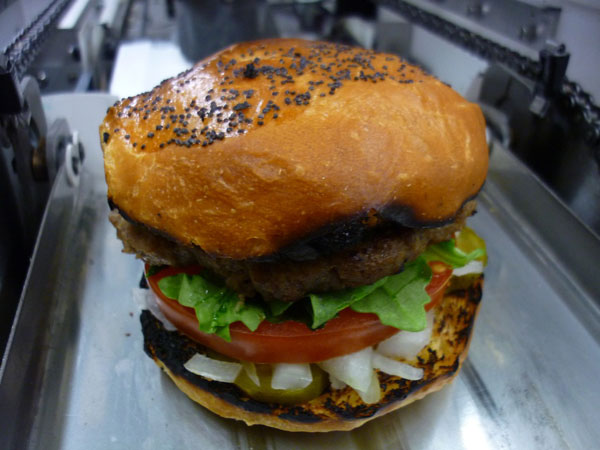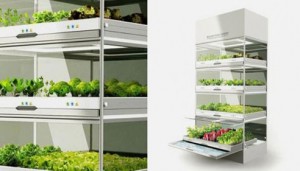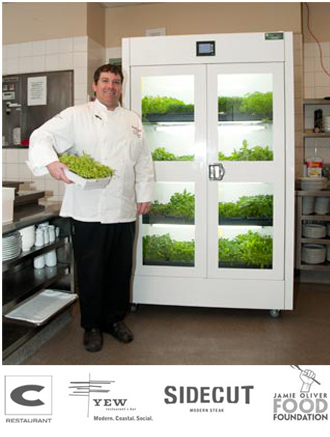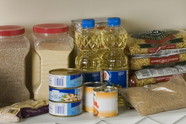
The Narrow BridgeBy: Rabbi Avraham Greenbaum Publish date: 11/3/2009 https://www.breslev.co.il/articles/breslev/rebbe_nachmans_wisdom/the_narrow_bridge.aspx?id=14257&language=english Translated by Rabbi Avraham Greenbaumnarrow-bridge
When a person makes a start and tries to bring himself closer to God, he usually experiences a feeling of rejection. It is as if forces beyond his control are trying to prevent him from entering God’s service. Yet in actual fact this apparent rejection is nothing but a way of bringing him closer. But it takes tremendous determination not to become discouraged when you see that the days and years are passing and in spite of all your efforts to draw closer, you are still far away.
You may feel you have not even begun to enter the gates of holiness. You may see yourself as still being coarsely materialistic and feel that your mind is confused. No matter what you try to do to serve God, it seems as if the evil forces will not allow you to succeed. You may start thinking that God is paying no attention whatever, as if He has no interest in your devotions. You keep calling out to Him, pleading with Him to help you. Yet you feel as far away as ever.
It takes tremendous determination to overcome all this. The key is to ignore all the discouragement. The truth is that all this apparent rejection has no other purpose than to bring you closer. All the Tzaddikim have had to endure this, as we know from their personal testimony. They too felt that God had no interest in them, because they saw how long they had been searching, putting in hard work and effort, yet they were still far away. If they had not determinedly ignored these feelings, they would have remained where they were in the first place and would never have achieved what they did.
My dear friend and brother: the basic rule is to keep firm and be strong. Try with all your strength to be persistent in your devotions. Pay no attention to all these discouraging thoughts. And if you are very far from God and you feel that your every movement must be a blemish in God’s eyes, you should know that on the contrary, if someone is all that coarse and materialistic, even the slightest motion he makes to try to detach himself from his physicality and turn towards God is very great and precious. If he moves no more than a hairsbreadth in his efforts to purify himself and come closer, that hairsbreadth makes him run thousands and thousands of miles in the worlds above. (See below, p. 354, “The Sad Tzaddik”, for further explanation.) If you think about this, it will make you very happy. Indeed you should make a great effort always to be happy, because depression can cause tremendous damage. You should know that as soon as a person wants to start serving God, it is a very grave sin for him to be depressed. Depression comes from the Other Side, which God hates.
In order to serve God, you must be obstinate. On no account should you give up and abandon the practices you have begun. Don’t give up in any way, no matter what happens. Remember this well, because you will be in great need of it when you start serving God. You must be very obstinate indeed, holding yourself strong and firm in your place each time the evil forces try to throw you down. This will happen very often. Your task is to continue as best as you can without allowing yourself to fall completely, God forbid.<
Inevitably you must encounter all kinds of difficulties and setbacks. You will fall down many times before you can enter the gates of holiness. Even the greatest Tzaddikim have gone through all this. There are cases when a person is already at the gate of holiness, only to slide back because of these difficulties. When a person is close to the gate, the forces of evil try to prevent him from entering. This pushes some people into retreat. That is the way of the Evil One: when he sees a person literally at the gates, he attacks more powerfully than ever. That is why you need to be so strong.
If you want to enter God’s service, remember all this very well. Strengthen yourself in every possible way and do what you can to continue with your devotions. Eventually, with God’s help, you will surely succeed in entering through the gate. God is overflowing with love and very much wants your devotions. Know that every single effort you make is important. All your attempts to detach yourself even slightly from the material world and draw closer to the spiritual are added together. They will all come to your aid when you really need it, when you are under pressure or in trouble, God forbid.
And know that in life a person has to pass over a very narrow bridge. The main thing is not to be afraid. (Likutey Moharan II, 48)
***
Rabbi Avraham Greenbaum is the director of Azamra. “The Essential Rebbe Nachman” is available for purchase online here.
|
|||||||||||||||||||||||||||||||||||||||
|
Person in the Parsha An Ounce of PreventionI couldn’t believe it. One of my trusted old reference books failed me for the first time.
You see, I am an old-fashioned guy and I still use books for reference rather than resorting to the electronic high-tech alternatives. Therefore, on the shelf next to my writing desk, I have three reliable works: Webster’s College Dictionary, Roget’s Thesaurus, and Bartlett’s Book of Familiar Quotations. It was the latter that disappointed me as I prepared to write this week’s Person in the Parsha.
This week’s Torah portion is Beshalach (Exodus 13:17-17:16). It contains the following verse: “If thou wilt diligently hearken to the voice of the Lord thy God, and wilt do that which is right in His eyes… I will put none of the diseases upon thee, which I have put upon the Egyptians; for I am the Lord that healeth thee.” (Exodus 15:26)
That is how Rabbi J. H. Hertz, late chief Rabbi of the British Empire, phrases it in the translation which accompanies his excellent commentary to the Pentateuch. However, Rashi’s commentary suggests a different translation.
This is what Rashi says: “Simply put, I am the Lord your physician, who teaches you Torah and mitzvot so that you will be spared illness, much as a physician would instruct his patient not to eat certain things because they may lead to his getting sick…” Thus, For Rashi, the more accurate translation of the end of our first is not “I am the Lord that healeth thee…,” But rather, “I am the Lord thy physician.”
At this point, you must be asking yourself, “What’s the big deal? Is there any difference between “I heal you” and “I am your doctor”?
Rashi would respond, “Yes, there is a great difference between the two. ‘I heal you’ means that you are sick and I make you better, whereas ‘I am your doctor’ means that I have the ability to prevent you from getting sick in the first place.”
For Rashi, this is fundamental. The Almighty has the power to prescribe for us a lifestyle that will protect us from illness; from spiritual illness certainly, but arguably from physical suffering as well.
Rashi, of course, never knew the great physician who was Maimonides. But Rashi’s conception of a good physician as one who does not merely heal the sick, but who counsels those who are well about how to avoid disease, is identical to Maimonides’ definition of a good doctor.
Maimonides was the court physician for the Sultan Saladin in medieval Egypt. The Sultan was never ill and once called Maimonides on the carpet, as it were, and demanded of him proof that he was a good doctor. “I am never ill,” said Saladin, “so how am I to know whether you in fact deserve the reputation that you have for being a great physician?”
Reportedly, Maimonides answered: “The greatest of all physicians is the Lord, of Whom it is said ‘I am the Lord thy physician’. As proof of this, it is written ‘I will not place upon you the illnesses which I have placed upon ancient Egypt’. Who is truly the good doctor? Not the person who heals the sick from their diseases, but rather the one who helps the person from becoming sick and sees to it that he maintains his health.”
As Maimonides writes in one of his medical works, Essay on Human Conduct, “Most of the illnesses which befall man are his own fault, resulting from his ignorance of how to preserve his health – like a blind man who stumbles and hurts himself and even injures others in the process due to not having of a sense of vision.”
As I was contemplating the merits of the translation suggested by both Rashi and Maimonides, I couldn’t help but think of the old adage, “An ounce of prevention is worth a pound of cure.” My memory told me that this was another wise saying of crafty old Benjamin Franklin. But these days, I have grown increasingly distrustful of my memory and so decided to confirm the origin of those words.
Here is where the reference books with which I opened this column came into play. I reached for my trusty and well-worn Bartlett’s Familiar Quotations. I searched under “prevention,” “cure,” and even “ounce,” but to no avail. Then I looked up “Franklin, Benjamin,” and found all sorts of words of wisdom but nothing about “an ounce of prevention.”
Google was my next resort. And there I indeed confirmed that it was Benjamin Franklin who echoed an important Jewish teaching when he said, “An ounce of prevention is worth a pound of cure.”
But there is more to be learned from the verse in this week’s Torah portion which we have been pondering: That the Almighty describes Himself as a healer or physician is more than just a lesson in the importance of living the kind of life that avoids the very real physical suffering that is often the consequence of an immoral life.
The metaphor of “physician” also makes a strong statement about the nature of the relationship between the Almighty and us, his “patients.”
If the verse would read, “If thou wilt diligently hearken to the voice of the Lord… for I am the Lord thy Master,” that would suggest that He demands our obedience in order to assert His own authority. But by urging us to “hearken to His voice” because He is “our physician,” we gain an entirely different view of why we should be obedient. As Malbim, a 19th century rabbinic commentator, puts it, “A physician, like a master, demands obedience, but only for the purpose of securing the patient’s welfare.” Thus, the divine commandments are to be seen as being for our own benefit, for our own ultimate well-being.
The image of a divine healer is one of the special gems to be found in Parshat Beshalach, which is a rich treasury of such images. How helpful it is for the Jew to experience a life of Torah and mitzvot as a gift given to him by a divine being who is concerned with his benefit, and how meaningful it is to know that the observant life is designed to avoid every manner of illness and to promote spiritual health and material wellness. |
|||||||||||||||||||||||||||||||||||||||
The Coalition of GogWhat we do every moment determines where we reside – with Hashem or with Gog. In this tumultuous time, we have two powerful weapons to protect ourselves.By: David Ben Horin Update date: 26October2021, 15:36 https://www.breslev.co.il/articles/foundations_of_judaism/holiness_for_men_and_women/the_coalition_of_gog.aspx?id=37771&language=english
In 2002, Google went from being a business to being a verb.
Since then, trillions of dollars have poured into the coffers of the high-tech elite.
The value of Apple, Microsoft, Google, Amazon, and Facebook eclipses $9 trillion. That’s equal to 10% of the global economy and 7% of all the wealth in America.
These companies are funded and run by a handful of people. In some cases, like Google and Facebook, they don’t like one another. In other cases, like Microsoft and Google, many of the big investors are one and the same.
In all cases, they are liberal. They are “progressive.” They stand for Sodomy, lust to the extreme, atheism, heresy, and globalism – trying to erase any identification with a nation so we can all be part of a single world that they control.
The trend began with Google. They are the creators of the internet as we know it.
It wasn’t until Google started ranking web pages by specific key terms that the internet took off.
Once they made that revolutionary switch, every other company rode the wave of the new internet Google created to amass more money, resources, and influence than has ever been generated in the history of mankind.
In 2002, Microsoft was worth $250 billion. Today, it is worth over $2 trillion. In 2002, Apple was worth $5 billion. Today it is worth $2.5 trillion. Even the “old school” tech companies that started long before Google didn’t explode until Google made everything online easily accessible.
We are living in the age of Gog and Magog: Google and every massive high-tech company that made its trillions from Google. How they Took OverWhen you have more money than you could ever need, the next thing you want is power. The only way to satiate the appetite of those ambitious enough to amass wealth on a global scale is for them to convert it into power on a global scale.
We see it in recent elections and the behavior of the internet fueled media.
The election of 2020 was obvious.
Polls showing President Donald J. Trump up 700,000 votes in Pennsylvania when the election precincts mysteriously closed. Despite losing 200 more counties than Barrack Obama 8 years prior, Joe Biden won 9 million more votes than him.
In the entire election, more votes were cast than voters were registered.
How did it happen?
The 477 counties Joe Biden won represents 71% of America’s wealth. The 2,496 counties President Trump won represents 29% of American wealth.
This wealth buys congressmen, senators, judges, city councilman, election officials, journalists, and just about anyone they need to control everything.
They know that unless you talk about the things they want to hear: Sodomy, victimhood, communism, atheism, heresy – they can cancel you.
This is half of Gog: The financial and political power to force you into Satan’s arms. The Other Side of the Coalition of GogThey also control our minds with drugs.
All. Of. Us.
They do it in the most devious and subtle manner possible. They use drugs from our own bodies to subdue us.
When engaging in the act of reproduction, our bodies create oxytocin, dopamine, and testosterone.
Hashem creates His world for Mitzvot. When we engage in these acts with our spouse inside the bonds of marriage, these drugs bond us to our soul mate. Along with being spiritually connected to our soulmate, our children, and to Hashem – we are chemically addicted to our mate.
Thank G-d, it is an added measure of superglue to bind a family together forever and enable everyone on earth to fulfill the commandment “Do not commit adultery.”
When we misuse these chemicals, we become addicted to what caused our bodies to create them. If we misuse the bodies G-d gives us through pornography, we become chemically addicted. It becomes harder to stop.
It turns our minds upside down.
With each new graphic experience, we seek something more extreme. Slowly, things that we would normally find repulsive and sick, we delude ourselves into seeing as not so bad.
A pervert becomes a transgender. A Sodomite becomes part of the LGBTQ community.
They are conquering our world from without and destroying our life from within. This is the dreaded war of Gog and Magog – the alliance of Hedonists, Heretics, and Homosexuals trying to take down the foundations of Heaven and Earth. They Won’t Win but They Will Take PrisonersG-d will win.
He will decide when the Satan’s time is up and in the blink of an eye all of this will be overthrown.
What will we be when this happens?
Will we be slaves to our Sadism or champions of our Spirit? Will they have taken us prisoner, or will we be free when Hashem dispatches Eliyahu HaNavi and Mashiach Ben David to re-establish G-d’s Kingdom on earth?
What we do now determines how soon Gog and Magog will fall.
What we do every moment determines where we reside, with G-d – or with Gog. Our Nuclear OptionThe only way to win is to take on the commandments of Shmirat HaBrit – guarding the eyes and holiness.
To do that renders us immune to their attacks. They can no longer subdue our perception with sex. They can no longer blind our soul’s eyes to the Truth.
Shmirat HaBrit is the shield against the forces of Gog and Magog.
Emuna is the spear.
As long as they have you convinced that the world is ruled by the Internet and G-d doesn’t have Wi-Fi, we will accept their mantra that there are no consequences to life because G-d isn’t watching.
The moment we remember that everything in this world comes directly from our Creator: He created, creates, will create and personally manages every aspect in life from the movement of the trillions of stars in the galaxies to what an earthworm had for lunch to everything going on in our lives, we know that it all has meaning.
Our actions matter.
The world we live in is just one big test.
Evil will burn itself out.
This is why we must be diligent at every moment to hold our emuna and personal holiness. No matter how much money, power, influence, and deception they yield – they can never take away from us what’s really important if we don’t let them.
Emuna and Shmirat HaBrit are the keys to their downfall, our survival, and the hastening to the world we are all praying for. *** David Ben Horin lives in Afula with his wife and children. Since moving to Israel in 2002, David has discovered Torah, writing hi-tech, hiking, coding ReactJS Apps, and hearing stories about the Land of Israel from anyone excited to tell them. Check him out on Highway 60 or email him your favorite Israel story at: david.ben.horin@spreadyourenthusiasm.com.
|
|||||||||||||||||||||||||||||||||||||||
ThePatriotNurse: Why You should Stay OUT of the Hospital System: Wave Goodbye to Your Rights!4 Reasons To Shun The Conventional Health Care System
For a better part of the past century, we have come to rely on the conventional healthcare model as the premiere method of treating disease. It certainly has its strengths, primarily in the acute and emergency care services, but in recent years more light has been shed on the vulnerabilities the system contains and how that translates to the population’s health.
Changing ones mindset around health care can be intimidating, especially when you have been taught that it is the superior system. However, when presented with some clear facts and obvious holes, I hope you will be able to make a more accurate assessment of the conventional healthcare model, and why you should turn your back on it when it comes to disease management and improving your overall health. Poor track record with chronic diseaseThe numbers speak for themselves when it comes to the results of the conventional healthcare model, and they’re not only poor, they’re downright frightening. Consider the following, from 5 Ways Hospitals Have Dropped The Ball On Healthcare And What they Need To Do To Improve It:
“The system is at its worst in the U.S., which has the most expensive health care in the world and also ranks dead last in quality of care among industrialized countries.
If that is not proof enough that the current system is flawed, consider recent research that revealed 210,000 lives are lost each year by preventable hospital errors. If you choose to include diagnostic errors, failure to follow proper guidelines, and omission errors, the number climbs to 440,000 preventable deaths each year! Turns out that these errors are the third leading cause of death in the U.S., immediately after heart disease and cancer.”
Also, despite spending billions of dollars of people’s hard earned charitable donations, the conventional health care model is no closer to eradicating any major disease, and in fact, the numbers continue to rise with many chronic diseases like cancer and alarming conditions like autism. This raises serious concerns about how this model is addressing chronic disease, why it can’t find a remedy, and where it is looking for the answers. This is punctuated by the fact that many alternative healthcare models centred in nutrition and detoxification are having impressive results, despite receiving next to no funds from the public sector or government.
Maybe the remedy has been here all along, and the conventional healthcare model has just failed to recognize it due to egos, lobbyists, poor education, and financial interests. Closed-minded authoritarianismWhen it comes to overcoming a health concern, the patient’s voice matters. In many cases the doctor takes a very belittling and authoritative stance, often dismissing the concerns of the patient and even chalking up their symptoms to being “all in their head”. This from a trusted and presumably caring human being, who works for the patient, not the other way around.
Further to that, any mention of alternative options by the patient is often met with a scoff and illegitimate claims that there is no proof that any methods outside of the conventional healthcare model can work. This kind of closed minded behaviour may be the prime example we need to consider on why conventional healthcare is so poor when it comes to successful treatment of their patients – that is, their eyes and ears are glued shut.
Any successful health journey requires understanding, open communication, collaboration, and an education on all available facets of healthcare. Unfortunately, many medical professionals fall short of the mark on all these facets, due to their close-minded authoritarianism. Lack of education, coaching, or mentorshipWhen dealing with someone who is chronically ill, it’s reasonable to think that this individual doesn’t understand or is not motivated to change the habits that are causing or exacerbating the disease. So what does the conventional health care model do? They keep the patient in the dark, on drugs, and with no other advice but to accept their fate as a pill popper for the rest of their life.
The primary way for someone to become healthy and stay that way is to get properly educated, empowered, and motivated so they can take on the concern with all the right tools. These traits are completely absent in the conventional health care model, and what’s worse, this model will rarely if ever refer their patients to someone who can provide these characteristics. For a continuum of healthcare to work there must be acknowledgement of the strengths of each niche, with a referral process that helps get the patient healthier. Unfortunately, the close-mindedness and reward system in place in conventional healthcare negates that as a reasonable option at this time.
This is where a program like THRIVE shines and creates as many healing testimonials as it does, because it is based primarily on education, coaching, and mentorship. They operate off a drug based, repeat customer modelAnyone who has done any reasonable amount of research or had any kind of experience with taking prescription drugs, knows there are always side effects and that they don’t actually fix the problem. Using prescription drugs to heal a chronic disease condition is akin to putting a bandaid on the engine light of your car and hoping the problem will just go away. As a result, the patient never improves, but it is exceptionally rewarding financially for the industry when the patient refills their pill containers every month for decades.
This sets up a model that is not very well incentivized by actually healing the patient. In fact, in order to even have a job in this industry this model has to exist, because if they recommended appropriate lifestyle changes and healing protocols, their customer base would dramatically dwindle in numbers and frequency, crippling the infrastructure. This is why the system is more the problem than the people in it.
As long as this model remains in effect, you can count on being treated like another drug user and will be expected to fill your prescription on a regular basis, even though it doesn’t solve the source of the issue. The livelihood of the medical profession, and the drug industry, depends on it. It’s also why many of them are so handsomely compensated, because that kind of repeat customer base provides the revenue to reward these professionals financially. I personally have no issue with a professional being rewarded, for helping generate the RESULTS their clients want. However, when they don’t do that and are still rewarded exceptionally, I take issue with their lack of conscience.
This is why I endorse the naturally based, low repeat model of healthcare. One that addresses the issue source, has little to no side effects, and eventually enables the client to manage their health in a way that results in little to no repeat visits. It’s the way it should be, if you are doing the job right.
This is why I stand behind my THRIVE Academy, because it creates the results lacking in the health industry, and empowers people to be their own caretakers of their vitality. I can assure you, no one cries about improved health, less hospital visits, and fewer doctors appointments. They do cry however, about being hooked on prescriptions, feeling generally ill, and suffering from side effects that they often don’t see coming.
That’s not healthcare, that’s inhumane. It’s time to put a stop to it. |
|||||||||||||||||||||||||||||||||||||||
A Cure for Cancer Rabbi Shalom Arush – breslev.co.il from joie2vivre.org on Vimeo. Rav Shalom Arush: A Cure for Cancer |
|||||||||||||||||||||||||||||||||||||||
How to Win the War on Cancer |
|||||||||||||||||||||||||||||||||||||||
Dr. Michael Greger Explains How We Are Controlled by the Food Industry |
|||||||||||||||||||||||||||||||||||||||
Celeste Bishop Solum – “Ultimate Food Control” – Patrons Update 10/16/19 |
|||||||||||||||||||||||||||||||||||||||
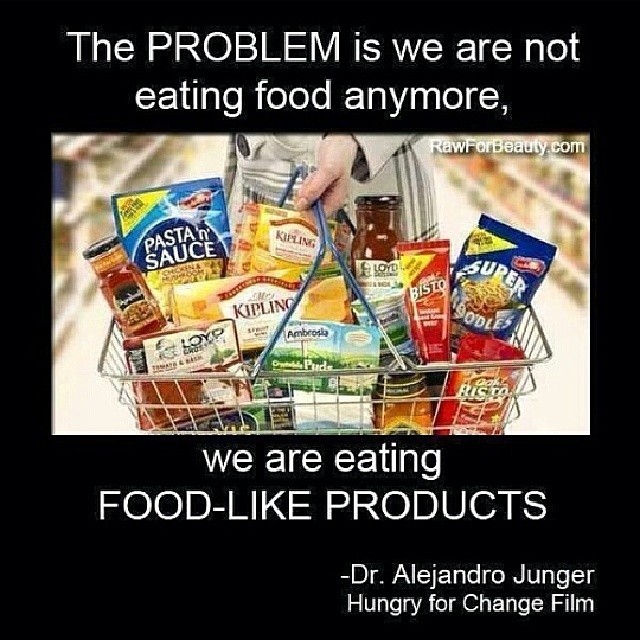 The PROBLEM is we are not eating food anymore, we are eating FOOD LIKE PRODUCTS – Dr. Alejandor Junger The Great American Grocery HoaxDaisy Luther – Resist April 9th, 2014 https://web.archive.org/web/20140415151848/www.nutritionalanarchy.com/2014/04/09/great-american-grocery-hoax/ There is a big secret out there in the grocery store aisles that no one wants you to know. There is a hoax of monumental proportions that is being perpetrated on the American public.
Before I tell you what it is, let me remind you of some things that you already know.
It’s no secret at all that the American economy is in dire straits. Unemployment has skyrocketed and today’s dollars buy a lot less than the dollars of just a few years ago. Even the most thrifty shopper will pay substantially more for a cart full of groceries. To make matters worse, our country’s main food-producing areas have been devastated by droughts, and you can expect that prices will only go up from here.
So people work for slave wages, if they can find work at all, then go to the grocery store and buy what they can afford. And that is where the secret comes in.
The secret is: The stuff sold there is not actually food.Nutritional Anarchy has posted a couple of videos recently about the massive number of ingredients in inexpensive processed food items. You can learn about what is contained in a Hungry Man Homestyle Dinner HERE and about the gastronomical delights that 48 cents will buy you HERE.
If you’ve ever been broke, you can easily see how a “meal” for a couple of dollars or less would be an appealing addition to a grocery cart.
But here is the scary epiphany: The stuff sold there is not actually food.I guess this depends on one’s definition of the word “food”.
Dictionary.com says “food” is:
Merriam-Webster says “food” is:
The Oxford Dictionary says “food” is:
Traditionally…and by traditionally I mean ever since there were humans on the planet eating stuff…food came from one of these sources: plants or animals. It has been hunted, gathered, foraged, cultivated, and farmed.
But now these substances are being created in a lab environment. From purely synthetic ingredients, compounds are formed. Sometimes a bit of the original food is present, perhaps a small bit of meat or vegetable or grain, and that item is stretched with chemicals to turn it into a food-like substance. The substance is shaped to look like food. It is artificially colored and molded into forms like some kind of semi-edible play-dough. Then scents and flavors, also artificial, are added. This makes the substances resemble food even more because now it tastes and smells like food.
Because it isn’t immediately lethal to ingest, those noble guardians at the FDA slap a label on it that the substance is GRAS – Generally Recognized As Safe.
Then the substance is placed into little plastic trays, foil, bags, or cellophane. That is placed inside a box with an illustration on the outside. The illustration looks like the food that the substance inside all of the packaging is supposed to taste like. Perhaps it is a juicy roast beef dinner with mashed potatoes, savory gravy, and carrots. Your brain processes this visual stimuli and expects that the substance contained within is indeed “food.”
But it isn’t.
It’s a scam. People go to the store to buy food, but they are sold something else, something that only pretends to be food. The stuff sold there is not actually food.Only a tiny fraction of the contents of that box is actually food. Your ancestors would not recognize this as food at all. If you dare to eat this, you are consuming a food substitute that is being passed off to you because there is no food left for the likes of us. Most of what is being sold in the grocery store is NOT ACTUALLY FOOD. It is food-like substances. It is a pile of chemicals masquerading as food to satiate hunger and deceive those who consume it into believing that they are eating food and ingesting nutrients.
Did you ever see the movie Soylent Green? In the movie, the futuristic over-populated world no longer can provide food for the population. Instead processed food-like substances are rationed out to keep people alive. Initially, there was Soylent Yellow and Soylent Red, but then, a new product, Soylent Green, became available in limited quantities. The actual source of Soylent Green is a closely guarded secret: no one is allowed to know what is actually in it. Consumers are deceived with some scientific sounding descriptions until the awful truth comes out.
Does this sound familiar? While Soylent Green was actually made from ground up humans (sorry, spoiler), the origins of what is being sold in our groceries stores today are no less mysterious or closely guarded. Soylent Green was so delectable to the unknowing public that they would commit heinous crimes to get more. The food-like substances in the grocery stores are loaded with processed white sugar (which actually has addictive properties similar to heroin), high fructose corn syrup, and MSG, which stimulates the production of hunger hormones, giving a whole new meaning to that fun slogan, “Bet you can’t eat just one.”
If you eat this stuff,you will be hooked because they want you to be hooked. You will be perfectly content feeding your addiction instead of nourishing your body. You won’t even MISS actual food. The next generation may not even know what actual food IS at the rate these processed concoctions are filling pantries and refrigerators in homes across the country. Those with lower incomes are particularly targeted by this, because unless you are making good money, it’s nearly impossible to purchase nourishing, whole foods.
I’ll give you a hint: if it is sold in a box and it has more ingredients than you have fingers, it probably isn’t food by any accepted definition.
It might keep you alive, but it will not keep you nourished and healthy.
Big Food doesn’t really care if you die from eating this stuff, as long as you don’t keel over immediately – then they’d be liable. They don’t care if you develop cancer or if you are malnourished. That actually just helps out their buddies at Big Pharma. Then they can go play golf together on the proceeds.
There is a conspiracy afoot and you can find evidence of the massive deception as close as your nearest grocery store, fast food establishment, or corner store. They are selling poisonous artificial food, and people are happily paying them for it. Commit Nutritional Anarchy.Rebel. Just say no to food-like substances. Declare war on Big Food.
|
|||||||||||||||||||||||||||||||||||||||
80 Percent of Americans Eat a Lot of Fast Food. But What Counts as “Fast”?Written by Nicole McDermott on August 8, 2013 https://greatist.com/health/fast-food-stats-poll-080813#1
Two all-beef patties, special sauce, lettuce, cheese, pickles, and onions on a sesame seed bun may not sound like your idea of a “wholesome dinner,” but isn’t stopping peple from eating it. In a recently released Gallup poll, eight in 10 Americans reported eating at a fast-food restaurant at least once a month. Only four percent of respondents said they never, ever eat fast-food fare. But here’s the catch: the main survey question didn’t define what counts as “fast-food” — so what do these results really tell us? Why it MattersThis year’s annual Consumption poll, conducted July 10-14, suggests our country is still dependent on (or at least has frequent hankerings for) fast-food. Of the 2,027 adults surveyed, 88 percent reported eating at a fast-food restaurant — including drive-thru, take-out, and sit-down meals — at least once or twice a month. Even though fast-food consumption has declined slightly since the same poll was conducted in 2006, Americans continue to pull up to the drive-through window. But while some news outlets may have readers shaking in their boots over Gallup’s findings, much of the recent coverage fails to mention that the respondents were not given a clear-cut definition of what counts as “fast-food” when answering the survey. So what about that morning coffee from Starbucks, or the Subway footlong you ate for lunch last Tuesday? Do those count as fast-food? The answer is sort of unsatisfying. The report itself doesn’t mention a definition, so we contacted Gallup to clarify. What restaurants constitute as fast-food was entirely up to the respondent. Some individuals may consider Starbucks or Panera fast-food, but others may only consider greasy-burger-selling, milk shake-serving joints part of the category. Is it LegitYes and no. Even without an obvious definition of fast-food, the results of this poll demonstrate that a large percentage of Americans are frequently eating outside the home and choosing convenience foods from coffee and salads to the naughty stuff that shall not be named. Fast-food consumption has been linked to weight gain and insulin resistance, two major risk factors for type 2 diabetes [1] [2]. Eating away from home has been linked to diets higher in calories and lower in micronutrients such as iron, calcium, and vitamin C [3] [4]. While occasional fast-food meals or snacks on-the-go likely won’t kill you, it’s important we recognize the potential downfalls and not make it a habit. Are you a fast-food afficionado? Do you consider a daily coffee-run fast? Weigh in below and let us know if Chipotle and Starbucks count. |
|||||||||||||||||||||||||||||||||||||||
 WELLBEING AUGUST 6, 2013 WELLBEING AUGUST 6, 2013
Fast Food Still Major Part of U.S. DietMost Americans believe fast food is not “good for you”BY ANDREW DUGAN https://news.gallup.com/poll/163868/fast-food-major-part-diet.aspx
WASHINGTON, D.C. — Eight in 10 Americans report eating at fast-food restaurants at least monthly, with almost half saying they eat fast food at least weekly. Only 4% say they never eat at fast-food restaurants. But slightly fewer Americans eat fast food weekly now than did so in 2006, when Gallup last asked about it. 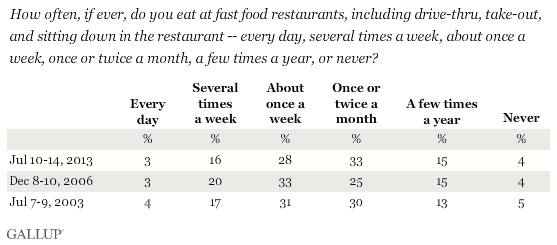 Gallup-2013.8.6-Trend: How often, if ever, do you eat at fast food restaurants, including drive-thru, take-out, and sitting down in the restaurant — every day, several times a week, about once a week, once or twice a month, a few times a year, or never?
These findings come from Gallup’s annual Consumption poll, conducted July 10-14, 2013, and seem to suggest that many Americans are reducing, but not totally eliminating, their fast-food intake.
Fast food has long been a staple of many Americans’ diets, but widespread concerns related to the nutritional value of the food linger. On that point, 76% in the U.S. think the food served in fast-food restaurants is “not too good” or “not good at all for you,” the same percentage who said so in 2003.
Twenty-eight percent say the food is “not good at all for you.” Fewer, 20%, believe food purchased at fast-food restaurants is “fairly good for you,” while 2% say it is “very good for you.”  Gallup-2013.8.6-Trend: Overall, do you think that most of the food served in fast food restaurants is very good for you, fairly good for you, not too good for you, or not good at all for you?
Young Eat Fast Food Most Often; Low-Income Individuals, the Least
Young adults — those aged 18 to 29 — eat fast food most often, with 57% saying they do so at least weekly. Fast-food consumption declines with age; the percentage who say they eat it at least weekly drops to 47% for those aged 30 to 49, 44% for those aged 50 to 64, and 41% among those aged 65 and older.
Men are more likely than women to eat fast food at least weekly — 53% vs. 42%. Men aged 18 to 49 in particular eat fast food at least weekly, at 57%.
Across racial and ethnic groups, blacks and Hispanics eat fast food most often, with 52% and 53%, respectively, eating it at least weekly. Less than half of non-Hispanic whites (46%) by comparison dine on fast food at least weekly.
Fast food is typically low in cost, which is part of its appeal to many Americans. But fast food is hardly the province solely of those with lower incomes; in fact, wealthier Americans — those earning $75,000 a year or more — are more likely to eat it at least weekly (51%) than are lower-income groups. Those earning the least actually are the least likely to eat fast food weekly — 39% of Americans earning less than $20,000 a year do so.
Most Weekly Fast-Food Eaters Believe the Food Is Not Good for YouMore than seven in 10 of those who eat fast food weekly or more frequently believe it is not “good for you.” The 25% of this group who believe fast food has some degree of health value is about the same as the 22% of the overall population who believe this.
However, those who eat fast food infrequently are much less likely to say it is “good for you.” Nineteen percent of those who eat fast food once or twice a month say it is fairly or very good for you, as do 15% of those who eat it a few times a year or never.
Implications
Undoubtedly, fast-food restaurants still represent a major part of the American dining experience, with almost all Americans eating fast food at least occasionally — though the percentage who do so frequently is down slightly from seven years ago.
A large swath of the public believes food served at fast-food restaurants is not good for them, and even about three-quarters of weekly fast-food consumers believe this. Nonetheless, a huge share of Americans continue to visit fast-food drive-throughs or dining rooms, suggesting that the appeal of the product — be it the relatively low cost, the taste, or the convenience — outweighs the health concerns. |
|||||||||||||||||||||||||||||||||||||||

Fast Foodhttps://nutritionfacts.org/topics/fast-food/
The fast food industry, so embedded in our culture that preschoolers favor the taste of foods and drinks if they’re told the foods are from McDonald’s, may be considered a major threat to public health. The famous, almost exclusively plant-based, Okinawan diet in Japan that led to long and healthy lives may have been eroded by fast food restaurants, and now the islands’ inhabitants have gone from the leanest Japanese to some of the fattest, with serious health issues. What’s wrong with fast food?A study of hamburgers from eight different fast food restaurants found that the actual meat content in the hamburgers ranged from 2% to 14.8%. An analysis of two chains’ chicken nuggets revealed that 50% or less was chicken meat. A study of the levels of heterocyclic amines in chicken samples from seven fast food restaurants revealed high levels of the carcinogen, leading the researchers to recommend that people reduce or avoid grilled chicken products in restaurants. Fast food was shown to be the second-highest risk factor for abdominal aortic aneurysms. Fast Food AlliancesNearly one in three children’s hospitals have a fast food restaurant inside, reminiscent of the time when cigarettes were sold in hospitals. Many have questioned the alliances of health organizations with fast food companies like Pepsi and McDonald’s. In one medical journal, several cardiologists envisioned giving away packets of statins alongside fast food meals to help reduce the health risk.
The information on this page has been compiled from the research presented in the videos listed. Sources for each video can be found by going to the video’s page and clicking on the Sources Cited tab. Ultra-Processed Junk Food Put to the Testhttps://nutritionfacts.org/video/ultra-processed-junk-food-put-to-the-test/ DOCTOR’S NOTEIt’s no surprise processed foods are wreaking havoc with our health. Learn about The Role of Processed Foods in the Obesity Epidemic. Is there a solution? Yes. Cut the Calorie-Rich-And-Processed Foods.
This is the third video in a series on junk food. If you missed the first two, check out Do Healthy Fast Food Options Lead to Healthier Choices? and How We Won the Fight to Ban Trans Fat.
I mentioned my traffic light system for choosing the healthiest foods. Learn all about it in Dining by Traffic Light: Green Is for Go, Red Is for Stop.
If you haven’t yet, you can subscribe to my videos for free by clicking here. |
|||||||||||||||||||||||||||||||||||||||

Here’s How Fast Food Can Affect Your BodyFrom your mood to your heart and your gut28January2021 / Nutrition  Junk Food-Poor eating habits kill more people than drinking or smoking, says an alarming study published in the journal The Lancet. When 5 p.m. rolls around and you haven’t given a single thought to what’s for dinner, the glowing sign in front of the burger joint down the street might be calling your name.
A quick swing through the drive-thru can seem like a great option, but there’s a definite downside. In order to serve up food so quickly, cheaply and consistently, many fast food restaurants focus on process and efficiency instead of on serving quality, nutritious foods.
An occasional fast food meal isn’t anything to fret about, says dietitian Nancy Geib, RD, LDN. Sometimes, it might be your only option.
“If you do your research and you look for the best options, you can definitely still go to a fast food restaurant if that’s all you have,” she says.
But if burgers, French fries and greasy breakfast sandwiches become centerpieces of your diet, they could take a serious toll on your health. Unhealthy diets increase your chances of developing depression, cancer, type 2 diabetes, heart disease and other chronic conditions. What is considered fast food?The history of fast food dates back almost a century, but the concept — and some of America’s most well-known fast food eateries — really took off during the 1940s and 50s. Today, it’s become such a staple of culture that as many as one in three Americans eat fast food every day.
You know fast food when you see it: It’s highly processed, mass-produced food that’s prepared quickly — usually on a grill, in a fryer or in a microwave. Fast food restaurants follow very specific preparation methods to make sure you get the crispy, greasy fries you expect every time. Why is fast food bad for you?Different foods can affect everyone in different ways, but here are just some of the things that frequently eating fast food might do to your body: Raise your blood pressureMany fast food items are packed with sodium, which acts as a preservative and enhances taste. “Everything that’s processed, packaged or boxed is going to have sodium,” Geib says.
The problem is, high-sodium diets are known to increase blood pressure, which puts stress on your cardiovascular system. Over time, high blood pressure can stiffen or narrow your blood vessels, becoming a major risk factor for heart attack, stroke and heart failure.
Ideally, most adults should try to keep their salt intake under 1,500 milligrams per day, according to the American Heart Association — though its current recommendations allow for up to 2,300 milligrams daily. Because sodium is so prevalent in our diets, it can add up quickly.
For example, one bacon cheeseburger alone can get you pretty close to the daily recommended 1,500 milligrams of sodium. So can a large piece of fried chicken breast with mashed potatoes and gravy. Even seemingly healthier options, like an Italian-style sub sandwich, can contribute more than 1,000 milligrams to your daily intake. Leave you bloatedEating meals that are high in sodium, high in fat or heavy with refined carbohydrates (such as bread, buns or breading) can all leave you feeling bloated. And, if you add a soda to your meal, the carbonation could make it worse. Bloating should only be temporary, but it could cramp your style if you’re wearing pants that are tighter in the waist or if you’re trying to get rings on or off your fingers. Drive up your cholesterolFood that’s fried in oil is high in fat — and that includes saturated fat. Eating too much saturated fat can drive up your LDL, or “bad,” cholesterol, which puts you at risk for heart disease. The American Heart Association recommends that no more than 6% of your daily calories come from saturated fat. If you eat 2,000 calories a day, that’s about 13 grams, or the amount that’s in one bacon, egg and cheese breakfast sandwich. Contribute to digestive problemsBagels, muffins and anything breaded might be delicious, but they’re all processed carbohydrates that lack fiber. Eating adequate amounts of fiber (25 to 35 grams a day) helps keep things moving in your digestive tract. It lowers your risk for diverticulitis and other conditions associated with straining or constipation, such as hemorrhoids and hernias.
Dietary fiber also helps your good gut bacteria flourish and keeps you feeling full. If you rely heavily on fast food, you’ll struggle to get the recommended amount. For example, a coffee-shop blueberry muffin will give you nearly 20% of your daily carbohydrate needs but only a gram or two of fiber. Lead to weight gainIf you go to the drive-thru and grab a value meal for dinner, chances are you’ll end up eating a bigger portion (and higher-calorie foods) than you would if you were cooking at home. If that becomes a regular thing, all those extra calories can add up to extra pounds. And when those calories are mostly from highly process carbohydrates, you might end up feeling hungry again within a few hours, which can lead to — you guessed it — even more extra calories.
Then there’s the sugar factor. Sugar is a major culprit in the obesity epidemic. It hides in a lot of foods, including drinks and sauces. Guess how much sugar is in your morning café mocha? Upwards of 25 grams. Or in that vanilla milkshake? More than 80 grams, if you make it a large. That’s nearly 20 teaspoons! Drain your energyA quick hit of refined carbohydrates and sugar causes a spike in your blood sugar, which prompts your body to produce a surge of insulin to quickly bring it down. This spike-and-crash cycle can leave you feeling tired and cranky.
Meanwhile, a balanced meal with protein, healthy fats and fiber-rich carbohydrates takes longer for your body to digest and absorb. This slows the release of sugar into your bloodstream, so you get sustained energy without a crash. Affect your moodWhen you eat a diet that’s high in saturated fat, sodium, sugar and refined carbs, you’re not only getting too much of those things, but you’re also missing out on a lot of other important nutrients. Fruits and vegetables — beyond the iceberg lettuce and tomato slices that come on fast food sandwiches — are rich with vitamins, minerals and antioxidants that nourish your body and improve your mood.
Eating a lot of processed foods may even increase your risk for depression. Five of the most unhealthy fast food options
Making healthier fast food choicesIt actually is possible to eat fast food without sabotaging your healthy diet, but it requires a little legwork.
Look for meals with lean proteins, veggies and fiber, and avoid anything supersized.
“You can make an informed choice by doing research to find out the nutritional content of a particular fast food item,” Geib says. “All of the major restaurants should have that information online or be able to hand it to you in the restaurant, if you ask.” |
|||||||||||||||||||||||||||||||||||||||

Consuming too much fast food can cause irreversible brain damage, warn health experts17October2022 by: Zoey Sky https://www.naturalnews.com/2022-10-17-eating-fast-food-linked-irreversible-brain-damage.html This article may contain statements that reflect the opinion of the author (Natural News) Fast food consumption is often linked to weight gain and elevated glucose levels, which can increase your risk of getting Type 2 diabetes. According to a study, consuming too much junk food can also cause irreversible brain damage. Researchers from the Australian National University (ANU) said brain damage may occur by the time you reach middle age, especially if you have a sedentary lifestyle and eat a lot of fast food. Fortunately, it’s not too late to improve your eating habits and boost your overall well-being. Fast food consumption linked to greater risk of Type 2 diabetesAccording to a review by scientists, people today are consuming about 650 kilocalories more daily than they were in the 1970s. This is equivalent to a fast-food meal that includes a burger, fries and soda. A kilocalorie (kcal) is equal to one Calorie, with a capital “C,” while 1,000 calories with a lowercase “c” is equal to one kilocalorie. This amount is about one-quarter of the recommended daily food energy needs for men and less than one-third for women. Nicolas Cherbuin, the lead author of the study and a professor at ANU, said that the extra amount of energy that people consume daily compared to 50 years ago suggests that many people follow an unhealthy diet. Now, people consume too much of the wrong kind of food, such as fast food. Cherbuin warned that not making changes to your eating habits can increase overweight and obesity risk, along with more cases of serious diseases. The review was conducted to find out “how normal, but elevated blood glucose levels in individuals without Type 2 diabetes contribute to neurodegenerative processes, and how the main risk factors for Type 2 diabetes, including obesity, lack of physical activity and poor diet, modulate these effects.”
In most cases, “high normal” blood sugar levels progress to impaired fasting glucose. In time, this progresses into Type 2 diabetes. Impaired glucose metabolism is linked to neurodegeneration, which impairs cognitive function. Additionally, these factors don’t begin at old age but much earlier, so following a healthy lifestyle in young adulthood may offer protective benefits against cognitive decline as you age. Study findings suggest that the idea that Type 2 diabetes is linked to neurodegeneration, cognitive impairment, dementia and mortality is not new. But these associations are often considered to be most relevant in old age, even though data suggests “that the pathological processes at play are initiated in mid-adulthood or before.” The researchers advised that the pathological cascade leading to higher FBG (fasting blood glucose) and ultimately Type 2 diabetes often begins “decades before and starts impacting cerebral health and cognition from its onset.” (Related: High-sugar diet increases pregnant women’s diabetes and liver disease risk.) Having poor eating habits may shrink your brainData shows that over 39 percent of the world population is overweight and 13 percent is obese. These shocking figures are triple what it was in 1975, but this percentage is even higher in developed areas like Europe and America, where prevalence is 50 to 60 percent. According to the study, both diet and physical activity are the main determinants of adiposity or being overweight or obese. In turn, obesity was linked to negative changes in the brain. The researchers noted that persistently elevated FBG is linked to “brain shrinkage, progressive loss of function across several cognitive domains, the development of dementia and ultimately, premature death.” Type 2 diabetes main risk factors contribute in a major way to these effects and the condition represents the greatest risk to brain health. Both diabetes and higher fasting glucose levels are also linked to lower total brain volume. According to a study published in the journal Radiology, obesity may lead to alterations in brain structure and can shrink certain regions. In men, a higher total body fat percentage was linked to lower brain gray matter volume. Particularly, a 5.5 percent greater total body fat percentage was linked to 3,162 mm3 lower gray matter volume. Gray matter is the outer layer of your brain linked to high-level brain functions like language, memory, problem-solving, personality, planning and judgment. Obesity has also been linked to changes in white matter microstructure, which may be related to cognitive function. Researchers at Loughborough University in England explained that carrying excess weight around your midsection may affect brain health. It can also cause a decline in brain volume. For this study, researchers worked with 9,652 participants with an average age of 55.4, plus or minus 7.5 years The participants received scores for both body mass index (BMI), a flawed formula that divides your weight by the square of your height and waist-to-hip ratio (WHR). Those with a BMI and WHR in a healthy range had an average gray matter brain volume of 798 cubic centimeters. However, this decreased to 786 cubic centimeters in people with a high BMI and high WHR. It’s never too late to improve your eating habitsIf you eat too much junk food, but want to boost your brain health and overall well-being, you can start improving your eating habits now. Start by eating more whole, unprocessed foods. The study authors warned that you may begin to lose neurons and neuron function early in life if you eat poorly. Unfortunately, these changes may be difficult or even impossible to counteract once the damage is done. Cherbuin warned that it may be too late for you once you reach your 60s. Those who have dementia and other signs of cognitive dysfunction, like brain shrinkage, have increased their risk by consuming too much bad food and not exercising enough. Cherbuin advised people to follow a balanced diet and exercise regularly as early as possible, preferably in childhood, but even doing so by early adulthood will offer health benefits. Tips for eating well and improving your brain healthThe study shows that eating a lot of processed fast foods can damage your brain, but you can boost your brain health by eating nutrient-dense whole foods. A balanced diet is also key to your mental health and the increased consumption of processed food increases the risk of anxiety and depression. Follow the tips below to reduce your intake of bad foods and improve your eating habits: Don’t go cold turkey If you eat a lot of junk food, take things slow. Instead of eating fast food every day, treat yourself to a burger only two days a week. The rest of the week, eat meals cooked at home and made with whole foods. Once you get used to cooking balanced meals, stop eating fast food. Focus on saving money Eating less junk food and fast food can also help you save money. After all, buying lunch at work every day adds up, while you can save money if you prepare lunch at home and bring it to work instead. Not sure how much you’ve spent on fast food? Track your expenses with an app. You can also save more money by taking advantage of store sales and using coupons when buying groceries. Make lower-calorie versions of your favorite dishes If you’re eating out, choose a healthier version of your favorite dish. You can also try making a vegan version at home or make low-calorie ingredient swaps. Order the smallest serving on the menu While dining out, stick to smaller servings. If you’re worried about a small meal not being enough, get a large size of a healthy main dish like a salad, with only a small size of the fattening order, such as French fries. Drink water instead of soda If you skip sugary beverages like soda, you can enjoy your cheat day treat. When you’re eating, drink water instead. Plan ahead If you eat a lot of fast food because you don’t have enough time to cook at home, make time by planning ahead. Making meals at home ahead of time will ensure you’re not tempted to eat fast food and waste money. During weekends, double or triple a recipe you’re making and freeze the food in single-serve containers. This ensures that when you’re craving something, you can reheat the food and enjoy a healthy meal. Boost your brain health and overall well-being by following a balanced diet and avoiding junk food. Watch the video below for a healthy vegan pumpkin pancake recipe.
Healthy Recipe – pumpkin Pancake Recipe – Vegan + Gluten FreeThis video is from the CookingIna channel on Brighteon.com. More related stories:Cut the junk: Eating junk food can give you food allergies. Sources include: |
|||||||||||||||||||||||||||||||||||||||
How Cooking Can Change Your Life – Michael Pollan |
|||||||||||||||||||||||||||||||||||||||
Why Prevention is Worth a Ton of Cure |
|||||||||||||||||||||||||||||||||||||||

What Can We Learn From How Grandma and Grandpa Used To Eat?October 25, 2013 by NATASHA LONGO https://preventdisease.com/news/13/102513_What-Can-We-Learn-From-How-Grandma-and-Grandpa-Used-To-Eat.shtml
Every successive generation seems to be getting sicker, with more illness and disability. This despite government claims that the science of diet has mostly improved from just 50 years ago. These claims are far from the reality the modern world and its population experiences. Our grandparents used to make their own butter, cook with lard, fry their foods, drink full cream milk and they still looked so healthy while living so heartily. How did they do it? For starters they ate less, but their food was also healthier. Today we cut carbs, remove fat, cook less, eat more, consume genetically modified, artificially sweetened, processed foods and spend most of our time sitting. See the difference? The trend becomes unmistakable once fat intake increases for a population. Once that number passes 30%: countries with higher average fat intake have the longest life expectancies. Fat intake has been transformed in modern day to low fat or no fat, high sugar and processed carbohydrates.
Grandfather-of-12 John Golding, who runs a family farm outside Grafton in northern New South Wales, says food was scarce when he was growing up.
“We ate less for sure because the food had to go around a big family. There were seven or nine kids in every family so you didn’t eat much at all. There were no ‘seconds’,” he said.
“We didn’t overeat and you’d restrict your bread intake because otherwise you’d run out.
“It was all healthy food. We always had a huge vegetable garden so we had cauliflowers growing in the winter time.”
In Unhappy Meals, a piece for The New York Times Magazine, best-selling author Michael Pollan says we can all cut back. Science Says Calorie Restriction Increases Life Span“The scientific case for eating a lot less than we currently do is compelling. ‘Calorie restriction’ has repeatedly been shown to slow aging in animals, and many researchers (including Walter Willett, the Harvard epidemiologist) believe it offers the single strongest link between diet and cancer prevention,” he said.
“Once one of the longest-lived people on earth, the Okinawans practices a principle they called ‘Hara Hachi Bu’: eat until you are 80 percent full.”
Organisms from yeast to rodents to humans all benefit from cutting calories. In less complex organisms, restricting calories can double or even triple lifespan. In studies, animals on calorie restriction diets die at an advanced age without any diseases normally related to aging. In contrast, among animals on a standard diet, the great majority (94 percent) develop and die of one or more chronic diseases such as cancer or heart disease.
According to the results of two previous studies, reducing calories activates the silenced information regulator genes, which prolongs cell life. Processed Foods A CulpritJohn says he and his wife Ollie, who does most of the cooking, rarely ate processed food.
“We didn’t have any packaged stuff at all,” he said. “When Dad bought this farm after the war, we’d milk two or three cows so you’d make your butter and custards.
“We were reared also on fried scones. We loved fried scones. Instead of baking the scones, we’d fry ’em. They were beautiful just with butter.
In Six Rules For Eating Wisely, a piece for TIME magazine, Pollan says we shouldn’t eat anything our great-great-great grandmother wouldn’t recognize as food.
“Imagine how baffled your ancestors would be in a modern supermarket … (most items) aren’t foods – quite – they’re food products,” he said.
“History suggests you might want to wait a few decades or so before adding such novelties to your diet, the substitution of margarine for butter being the classic case in point.
Their promise was that margarine would prevent disease. People around the globe questioned this advice, especially those who have valued butter for its life-sustaining properties for millennia. Today we know that butter is light years healthier than margarine ever could be.
“My mother used to predict ‘they’ would eventually discover that butter was better for you. She was right: the trans-fatty margarine is killing us. Eat food, not food products.”
John, 79, eats everything but grew up on staples of rice, rolled oats and potatoes.
“When mum was rearing the five of us while dad was at the war she fed us on a lot of rice because that was cheap. I loved boiled rice with a bit of sugar on it, but now I don’t have sugar,” he said.
Pollan says the western diet has shifted radically from whole to refined foods, complex to simple carbohydrates, leaves to seeds and from food culture to food science. Food Culture Is Not What It Used To BeGovernments here and abroad have been cautioning the public for decades on the dangers of high fat diets. Their claims based on “their science” concluded that it was best to avoid fat because of its extra calories – and saturated fats raise the risk of heart disease. This low-fat mantra has been questioned for years by clinicians and nutritional scientists – not least because it has failed to halt the obesity epidemic. The fact is, high-fat diets lower blood sugar, improve blood lipids, and reduce obesity.
“The sheer novelty and glamour of the Western diet, with its 17,000 new food products introduced every year, and the marketing muscle used to sell these products, has overwhelmed the force of tradition,” he said.
“Nutritionism, which arose to help us better deal with the problems of the Western diet, has largely been co-opted by it, used by the industry to sell more food and to undermine the authority of traditional ways of eating.
“You would not have read this far into this article if your food culture were intact and healthy; you would simply eat the way your parents and grandparents and great-grandparents taught you to eat.”
Our grandparents also didn’t spend all day stuck at a desk or hours at night on the couch. They performed manual jobs and rode their horses everywhere at full gallop.
Food intolerances were unheard of back then and no-one, least of all John, feared carbs.
They also didn’t deprive themselves.
Despite becoming a fast food nation, John says his diet has improved with age.
“Our diet’s changed a little bit. We don’t eat fat or drippin’,” he said.
“The problem these days is fast food. Bloody McDonald’s.
“If people are getting big and fat, I don’t know why they keep eating. I can stand behind people (in line for meals) on a cruise and know what they’re going to order – greasy fish and chips.
“If you want to give up something, I think it’s easy. Well it’s easy for me – it’s just determination.”
Here’s to that. Pollan’s nine principles of healthy eating:1. Eat food… Don’t eat anything your great-great-grandmother wouldn’t recognize as food. 2. Avoid even those food products that come bearing health claims. Don’t forget that margarine, one of the first industrial foods to claim that it was healthier than the traditional food it replaced, turned out to give people heart attacks. 3. Especially avoid food products containing ingredients that are a) unfamiliar, b) unpronounceable c) more than five in number – or that contain high-fructose corn syrup. None of these characteristics are necessarily harmful in and of themselves, but all of them are reliable markers for foods that have been highly processed. 4. Get out of the supermarket whenever possible. You won’t find any high-fructose corn syrup at the farmer’s market; you also won’t find food harvested long ago and far away. What you will find are fresh whole foods picked at the peak of nutritional quality. Precisely the kind of food your great-great-grandmother would have recognized as food. 5. Pay more, eat less. There’s no escaping the fact that better food – measured by taste or nutritional quality (which often correspond) – costs more, because it has been grown or raised less intensively and with more care. 6. Eat mostly plants, especially leaves … By eating a plant-based diet, you’ll be consuming far fewer calories, since plant foods (except seeds) are typically less” energy dense” than the other things you might eat. 7. Eat more like the French. Or the Japanese. Or the Italians. Or the Greeks. Confounding factors aside, people who eat according to the rules of a traditional food culture are generally healthier than we are. Any traditional diet will do: if it weren’t a healthy diet, the people who follow it wouldn’t still be around. 8. Cook. And if you can, plant a garden. The culture of the kitchen, as embodied in those enduring traditions we call cuisines, contains more wisdom about diet and health than you are apt to find in any nutrition journal. Plus, the food you grow yourself contributes to your health long before you sit down to eat it. 9. Eat like an omnivore. Try to add new species, not just new foods, to your diet. The greater the diversity of species you eat, the more likely you are to cover all your nutritional bases. Natasha Longo has a master’s degree in nutrition and is a certified fitness and nutritional counselor. She has consulted on public health policy and procurement in Canada, Australia, Spain, Ireland, England and Germany. |
|||||||||||||||||||||||||||||||||||||||

How Fast Food Providers Beat Inflation – Add Wood Pulp To Burgers
Submitted by Tyler Durden on 03July2014 http://www.zerohedge.com/news/2014-07-03/how-fast-food-providers-beat-inflation-add-wood-pulp-burgers
On Monday, Quartz published an article by Devin Cohen titled, There is a Secret Ingredient in Your Burgers: Wood Pulp. Given the headline and people’s already present suspicion regarding all of the shady and potentially dangerous ingredients hidden in food items, the article gained a lot of traction. In subsequent days, most journalists and bloggers have focused on the dangers of this additive (unclear) and whether or not it is pervasive throughout the food chain as opposed to just fast food (it appears to be).
The one angle that has not been explored as much is the overall trend. Let’s go ahead and assume that wood pulp is a safe thing to consume, it certainly seems to have no nutritional value whatsoever. So why are companies inserting it into food items? To mask inflation and earn more profits most likely. This was a major theme I focused on last year in a series of pieces on stealth inflation and food fraud, a couple of which can be read below:
New Study Shows 59% of “Tuna” Sold in the U.S. Isn’t Tuna New Study Shows: Food Fraud Soared 60% Last Year The Quartz article notes that:
This is the part that really interests me. When did these companies first introduce this substance into their products and what is the growth trend? My guess is that as food costs have risen, the proportion of non-nutritonal fillers has increased substantially. That said, I’d like to see some data and I haven’t yet.
My big takeaway here is the same as last year’s when I first started writing about the trend. As the cost of food continues to rise, the cost of not paying attention to what you are eating rises exponentially. Companies will continue to try to mask inflation by shrinking package sizes, and when that is no longer possible, increasingly inserting empty fillers (or worse) into their products.
Meanwhile, the following video is a telling spoof on the ingredients in McDonald’s Chicken McNuggets. What A McDonald’s Commercial SHOULD Look LikeOn a related note, if you haven’t read my recent post on BPA, definitely take the time: National Geographic Reports – Chemicals Causing Infertility in Pigs are Present Throughout Human Consumer Goods. Bon Appé !@#$%^&*. |
|||||||||||||||||||||||||||||||||||||||

Nobody wants to eat fake Beyond Meat burgers, McDonald’s discoversAugust 11, 2022 by: Ethan Huff https://www.naturalnews.com/2022-08-11-nobody-wants-fake-beyond-meat-burgers-mcdonalds.html This article may contain statements that reflect the opinion of the author
(Natural News) You will no longer find artificial meat patties at McDonald’s now that the fast-food chain has scrapped a pilot program involving Beyond Meat.
It turns out that Americans still prefer to eat ‘all beef patties’ of real meat from animals as opposed to the lab-concocted abomination known as Beyond Meat, a company in which billionaire eugenicist Bill Gates is heavily invested.
A trial of the “plant-based” patties at some McDonald’s restaurants failed miserably we are told. Nobody ordered the so-called McPlant burger, which is apparently even more disgusting than the fast-food chain’s regular burgers.
McDonald’s had signed a three-year global distribution deal with Beyond Meat back in 2021. It appears as though that deal was cut short because customers simply do not want to eat synthetic meat made from genetically modified organisms (GMOs) and other toxic chemicals.
According to Ken Goldman, an analyst at JPMorgan Chase & Co., “the product did not sell well enough” to keep it going. The financial news site The Fly joked that Beyond Meat is “McDone” as far as McDonald’s is concerned. Taco Bell, KFC, Pizza Hut have all discontinued Beyond Meat products as wellMcDonald’s is not the only company that adopted Beyond Meat only to later abandon it. The full gamut of Yum! Brands companies, including KFC, Taco Bell and Pizza Hut, have all thrown Beyond Meat out the window after failed trials at its stores.
Panda Express did the same thing, as did Dunkin’, Hardee’s (Carl’s Jr.), and A&W, reports indicate.
“You’re not going to change cultural tastes overnight,” said John Baumgartner, an analyst for the Japanese bank Mizuho, suggesting that with enough propaganda and goading, people might eventually accept fake meat.
“Recruiting your next phase of consumers requires more innovation and better-tasting products.”
In the meantime, Beyond Meat has had to massively scale back its workforce as nobody wants the company’s products. Some 40 jobs have been cut from the company, which is slated to burn through all of its remaining cash in the coming months.
In 2022 alone, Beyond Meat’s stock price has fallen by about 50 percent – and this was after it fell by roughly the same amount in 2021.
“Beyond Meat has failed to generate any positive free cash flow since going public in 2019,” said David Trainer of the investment research firm New Constructs.
Layoffs could help, Trainer says, but “the proof is yet to be seen until we can see how much they can slow the burn.”
Our own readers are well aware of the fact that Beyond Meat, no matter how it is dressed up and modified to taste like real meat, will never be a healthy alternative to the real thing.
“Gates owns a lot of land and still has plenty of money,” wrote one of them about the dark and sinister nature of what is going on behind the scenes to try to force people away from eating real meat.
“Now that the pipeline has been scrapped, all those small towns that had people move there to work on the pipeline will become ghost towns. I wonder if Gates (and others) will snap up that real estate for pennies on the dollar.”
“He’s right. We should eat synthetic meat, starting with him, Soros, Biden, Harris, Pelosi, Schumer, Waters, AOC and McConnell,” joked another about comments made by Gates about the “need” for global humanity to eat his Beyond Meat products rather than real meat.
“Their meat will be tough and gamey, though.”
Others echoed that sentiment, questioning what might be hidden inside Beyond Meat patties that Gates intends for people to die from. Certainly he is not eating the stuff himself.
More stories about artificial meat can be found at Frankenfood.news. Sources for this article include: |
|||||||||||||||||||||||||||||||||||||||

Cut down on processed food intake with these simple steps27August2021 by: Ramon Tomey https://www.naturalnews.com/2021-08-27-how-to-cut-down-on-processed-food.html (Natural News) Processed foods refer to foods that have been altered from their original state through preparation or preservation. Not all processed foods are bad, as some only undergo minimal processing and retain most of their nutrients. However, heavily processed foods can contribute very little in terms of nutrition; if anything, they’re actually full of harmful chemicals.
Unfortunately, heavily processed foods often make up a huge portion of people’s diets. The nutrients they lose during processing are replaced by manufacturers with salt, sugar and fat, making them unhealthy. Furthermore, these processed foods contain chemical additives and preservatives to enhance their taste and extend their shelf life.
Some people may find it difficult to reduce their consumption of processed foods due to limited access to fresh produce. Here are some realistic steps to follow so you can cut back on unhealthy, overly processed foods. Choose whole grain products instead of refined grainsGrains are typically comprised of three components – the bran, endosperm and germ. The hard, outer bran contains fiber, minerals and antioxidants while the inner germ contains vitamins, minerals, protein and plant compounds. Refined grains remove the bran and germ when processing, leaving the carbohydrate-rich endosperm behind.
The refining process unfortunately removes the nutritious parts of the grain. Whole grain products contain higher amounts of vitamins, minerals and antioxidants because they retain the bran and germ. The higher fiber content of whole grain products helps in digestion and satiety. These also lower the risk of certain conditions such as stroke, heart disease and type 2 diabetes.
Brown rice acts as a more filling replacement for white rice. Whole wheat breads, pasta and tortillas can also pave the way for healthier eating. Drop sugary drinks in favor of waterSodas, powdered drink mixes, energy drinks and sports drink contain little nutrition – and substantial amounts of sugar and calories. These are often sweetened using high-fructose corn syrup, sucrose, fruit juice concentrates and more. Excessive consumption of these drinks can contribute to weight gain and a higher risk of chronic illnesses such as type 2 diabetes and heart disease.
Energy drinks contain as much sugar as regular soft drinks, plus enough caffeine to increase one’s blood pressure. On the other hand, sports drinks are designed for athletes doing high-intensity workouts that last one hour or longer. Thus, regular people drinking these beverages only increase their sugar and calorie intake as a result. (Related: Energy drinks found to be shockingly toxic to the human heart.)
At the end of the day, good old water is still the best way to quench thirst. Infusing regular water with fruits and herbs can help brighten it and promote increased water intake. Bulk up meals by adding fresh fruits and vegetablesSome vegetables and fruits can be added to dishes to “bulk” them up. These serve a two-fold purpose by adding extra nutrition and minimizing the need for heavily processed foods. Bulkier vegetables such as carrots, broccoli and cauliflower can be added to casseroles or taco filling.
Meanwhile, nutrient-packed spinach can be added into eggs or breakfast potatoes for a healthy, filling meal. Other greens such as kale, chard or bok choy can be prepared as a quick side dish or incorporated into main dishes. These can simply be tossed into the pot after a quick chop to imbue dishes with extra nutrition.
Fresh fruit also pairs well with oatmeal. Sliced bananas, strawberries or blueberries can be mixed in with breakfast oats for that extra shot of nutrition and natural sweetness. Read the labels and compare ingredientsTaking time to read the labels on store-bought foods plays a key role in making healthier dietary choices. The first three ingredients indicated on a product’s label serve as a clue to what it is mostly made of. Sugar usually goes by various names such as high-fructose corn syrup, malt syrup, maltose, corn sweetener and dextran – so it’s best to be wary of these.
Hydrogenated oils – commonly called trans fats – are also something to look out for. Trans fats raise “bad” cholesterol levels while lowering “good” cholesterol levels, increasing the risk for certain chronic illnesses. These are often found in cookies and baked products, packaged frozen meals and microwave popcorn. (Related: Study: Trans fats linked to poor brain health and greater risk of dementia and Alzheimer’s.)
It is best to compare different products and scrutinize ingredients before putting them in the shopping cart. It instills better food choices and helps wean away from heavily processed food. CleanFoodWatch.com has more articles about the dangers of eating processed foods. Sources include: |
|||||||||||||||||||||||||||||||||||||||

Do you need to clean your lungs? Natural ways to improve your respiratory healthSunday, June 23, 2019 by: Tracey Watson https://www.naturalnews.com/2019-06-23-natural-ways-to-improve-your-respiratory-health.html (Natural News) The global population is booming, cities are expanding at a rapid pace, and there is no end in sight to the trend of urbanization. One of the results of all this growth and development is air pollution, where chemicals and other pollutants build up in the air and pose a serious danger to human health. Lung diseases and impaired lung capacity can often result from exposure to this type of pollution.
There are also large segments of the population who deal with other issues that impair their lung capacity, including chronic asthma, cystic fibrosis and chronic obstructive pulmonary disease (COPD).
And then there are the smokers who willingly choose to damage their own lungs and those of the people who live in close proximity to them.
When all these factors are considered, there is certainly good reason for the majority of us to consider ways to cleanse our lungs and protect our long-term health. (Related: The depressing connection between air pollution and happiness.) The best natural ways to cleanse the lungsFortunately, the lungs are self-cleaning organs that will quickly repair themselves once a source of pollution stops, for example when someone stops smoking or moves to an area with cleaner air.
Unfortunately, we are not always able to completely remove ourselves from sources of pollution, and for people with asthma, COPD and other lung diseases, the battle to clear the lungs of mucus and other irritants is a continuous one.
As noted by Medical News Today, there are several natural methods that can be employed to clear the lungs and in doing so, improve overall health.
Lifestyle changesWhat you put into your body and what you do with your body, referred to as your lifestyle, impacts your overall health as well as your lung health. ExerciseAlthough it may initially be difficult for someone with impaired lung capacity to start exercising, the benefits can be immense.
Medical News Today reported:
Exercise forces the muscles to work harder, which increases the body’s breathing rate, resulting in a greater supply of oxygen to the muscles. It also improves circulation, making the body more efficient in removing the excess carbon dioxide that the body produces when exercising.
The body will start to adapt to meet the demands of regular exercise. The muscles will learn to use oxygen more efficiently and produce less carbon dioxide. Green teaStudies have found that green tea contains several antioxidants which can help reduce inflammation in the lungs. A study conducted by Korean researchers found that participants who drank two or more cups of green tea each day had better lung function than those who drank none. Anti-inflammatory foodsSince inflammation in the airways creates difficulty breathing, it is essential to reduce inflammation. One of the ways to do this is to eat more anti-inflammatory foods like leafy greens, cherries, blueberries, walnuts, turmeric, beans, olives and lentils. Lung cleansing techniquesIn addition to lifestyle changes, there are specific lung cleansing techniques that can be adopted to help clear the lungs of mucus and make breathing easier. Steam therapySteam therapy, which involves inhaling water vapor, opens the airways and temporarily helps to drain mucus. Controlled coughingSince coughing is the body’s natural way of clearing the airways of mucus, controlled, purposeful coughing can assist the lungs with this process. Medical News Today outlines exactly how to do this at this link. Mucus draining positionsThere are several different postures that can be adopted to defy gravity and help get mucus out of the lungs. Medical News Today explains these positions in more detail here. Chest percussionA doctor or respiratory therapist can use a special technique called chest percussion to dislodge trapped mucus and remove it from the lungs.
It is important to recognize that, even though we may not be aware of it, our lungs are under constant attack from environmental toxins, pollution, cigarette smoke and other factors. These can be mitigated, however, by making the lifestyle changes noted above and, when necessary, utilizing special lung cleansing techniques.
Learn more about the dangers of air pollution at Environ.news. Sources include: |
|||||||||||||||||||||||||||||||||||||||

How lack of sleep affects every part of your bodyFriday, September 28, 2018 by: Michelle Simmons https://www.naturalnews.com/2018-09-28-how-lack-of-sleep-affects-every-part-of-your-body.html (Natural News) Lack of sleep not only makes you grumpy in the morning, it can also affect your health in the long run. Getting good quality sleep is important for the body to function well. Listed below are several ways lack of sleep affects overall health. (h/t to HoustonMethodist.org.)
There are certain times when you just find it difficult to fall asleep. Here are some tips you can follow to help you sleep better and longer:
Read more news stories and studies on how lack of sleep affects the body by going to MindBodyScience.news. Sources include: |
|||||||||||||||||||||||||||||||||||||||

US Life Expectancy Decreases Yet Again But There Could Be One Big Reason Whyby Tyler Durden Wed, 26September2018 https://www.zerohedge.com/news/2018-09-26/life-expectancy-decreases-yet-again-there-could-be-one-big-reason-why Authored by Mac Slavo via SHTFplan.com, Life expectancy in the United States has decreased yet again, but it isn’t due to a lack of healthcare as leftists would have everyone believe. There are far more important factors at play when it comes to how long a person will live, and personal responsibility is taking the front seat. No one should have to be told that obesity is a risk factor for an early death. Yet it seems to be almost offensive to say so. The problem in the United States with life expectancy is responsibility, not a lack of government handouts in the form of inadequate medical care. In fact, the government’s relationship with Big Pharma is taking a good chunk of the blame as well.
Opioids and the constant pressure doctors feel to prescribe them thanks to protections from the US government are another cause of a decrease in life expectancy, according to WebMD. Opioids are highly addictive and overdose is now a leading cause of death in the United States.
But what many refuse to acknowledge is that first, the government is elbow deep in the opioid epidemic, and second obesity (a preventable disease) is considered “ok” or “not that bad” when in reality, an obese person can expect to live ten years less than a person of a healthy weight.
As obesity rates have exploded in the United States in recent years, so has life expectancy decreased.
When personal responsibility for one’s own life is put first, people tend to live longer. People should take care of themselves and make the decision on which foods to consume and which drugs they should take. But this responsibility for one’s own life seems to be constantly pushed off onto others.
And this isn’t solely a problem in the United States. Great Britain is facing a decline in life expectancy as well, and the nation has “universal healthcare.” This all but proves is that government intervention cannot save people, people must save themselves through action and responsibility.
Leftists would have us believe that universal healthcare will solve this problem, yet the UK is still experiencing a stagnant life expectancy along with the US.
Perhaps instead of placing one’s life in the hands of a government (ruling class master), one should take responsibility for what they eat and consume. Perhaps more questions should be asked before accepting a prescription for a highly addictive opioid. Perhaps more personal responsibility and less blame would help everyone live a longer an happier life. |
|||||||||||||||||||||||||||||||||||||||
|
|||||||||||||||||||||||||||||||||||||||
The Five to One Fiber Rule |
|||||||||||||||||||||||||||||||||||||||

7 Amazing Health Benefits of Farting
Society today is rapt with acceptable and unacceptable social behaviors. Most people will not point and stare at someone, for example, as it is considered rude. Same goes for spitting, littering, yelling or otherwise acting uncouth in public.
Then, there is flatulence, what is most commonly referred to as farting. The majority of society views farting as gross – which it can be, and an absolute social no-no. Pretty much everyone that has ever cut an audible fart in the company of others will testify that its perhaps one of the most embarrassing moments of their life.
But, passing gas is a completely natural bodily function. Furthermore, it is absolutely necessary for a number of health reasons. Farting is a vital part of digestion, specifically when the gut needs to break down foods and eliminate certain by-products. Here, we discuss 7 important health benefits of farting.We’ll try to keep the cackles to a minimum.
“Although hydrogen sulfide is well known as a pungent, foul-smelling gas in rotten eggs and flatulence, it is naturally produced by the body and could in fact be in a healthcare hero with significant implications for future therapies for a variety of reasons.” – Dr. Mark Wood, Professor and Researcher at University of Exeter (UK) Medical School 1. It’s Good For The Colon“Holding” any type of natural bodily reaction is not good for health; whether it’s urine, bowel movement, or gas.
In social situations, there likely isn’t much harm to holding in an embarrassing toot. Those with digestive issues, however, should know that holding in the body’s attempt to release byproducts of the gastrointestinal system is potentially dangerous. 2. It Helps BloatingThe feeling of being bloated is genuinely uncomfortable. This symptom is often experienced shortly after eating a meal, particularly a large one. It can lead to some uncomfortable stomach aches and pains, too.
Bloating may also indicate a buildup of gas that needs to be released. While the buildup of such gas isn’t usually harmful or dangerous, it can bring about much discomfort. This is where passing gas can immediately lessen any bloating and any associated symptoms. 3. The Smell Is Actually HealthyAlright, so this one is kind of uncomfortable to explain…it’s actually kind of gross. But, again, it’s a natural, healthy benefit of passing gas.
Here’s why. When we pass gas, we release a small amount of a substance called hydrogen sulfide, which may be beneficial in thwarting off future illnesses. Studies suggest that the element may also prevent cell damage, and even prevent heart attack or stroke. 4. It Means Both A Healthy Gut and Bacteria CompositionAccording to Purna Kashyap, a doctor of gastroenterology at the Mayo Clinic in Rochester, Minnesota, “Eating foods that cause gas is the only way for the microbes in the gut to get nutrients. If we didn’t feed them carbohydrates, it would be harder for them to live in our gut.”
The foods that Dr. Kashyap is referring to include those rich in fiber, such as beans and lentils, broccoli, cabbage, and kale. These foods improve our digestive functions, and also produce more gas. 5. It Can Help With A Balanced DietYes, the gas that we pass may indicate the type of foods our stomach needs. Conversely, it may also indicate foods that we may be overeating.
For example, when we don’t consume enough fiber, we rarely pass gas. When overindulging on meat, our gas may give off a very unpleasant odor, indicating that we need to cut back a little. 6. It Can Serve As A Health AlarmThis is one of the more important benefits of farting. Interestingly, the characteristics of farts can actually help predict health issues in some cases.
Unhealthy characteristics of farts include: extreme odors, pains when passing gas, and an increasing frequency. These symptoms may help diagnose anything from food intolerance to colon cancer. 7. It’s Instant ReliefOkay, so this one isn’t all too groundbreaking…but it’s true, isn’t it?!
Gas buildup, bloating, and stomach pains can all be alleviated or reduced simply by letting out a fart. It may be embarrassing if we alert the coworker next to us, granted.
So, the next time you feel an extreme need to let one loose, go on ahead! Please, just don’t do it around me… References: |
|||||||||||||||||||||||||||||||||||||||
Treating Infant Colic by Changing Mom’s Diet |
|||||||||||||||||||||||||||||||||||||||
How Doctors Responded to Being Named a Leading Killer |
|||||||||||||||||||||||||||||||||||||||
Physicians May Be Missing Their Most Important Toolhttps://nutritionfacts.org/video/physicians-may-be-missing-their-most-important-tool/ In 1903, Thomas Edison predicted that the doctor of the future will give no medicine, but instead “instruct his patient in the care of the human frame in diet and in the cause and prevention of disease.” A hundred and one years later, the American College of Lifestyle Medicine was born. Lifestyle docs like myself still prescribe meds when necessary, but, based on the understanding that the leading causes of disability and death in the United States are caused mostly by lifestyle, our emphasis is particularly on what we put in our mouths: food and cigarettes. An “impressive number of studies have shown that lifestyle is the root cause of what ails us.” The good news is that by changing our lifestyle we can dramatically improve our health.
You have the power.
We’ve known for a long time that for most of the leading causes of death our genes account for at most 10 to 20% of risk, given that rates of killers like heart disease and major cancers differ up to a 100-fold among various populations, and that when people migrate from low- to high-risk countries, their disease rates almost always change to those of the new environment. For example, at least 70% of strokes and colon cancer are avoidable, as are over 80% of coronary heart disease and over 90% of type 2 diabetes. So maybe it’s “time we stop blaming our genes and focus on the 70% that is under our control.” That may be the real solution to the health care crisis.
It doesn’t take much. Adhering to just four simple healthy lifestyle factors can have a strong impact on the prevention of chronic diseases: not smoking, not being obese, exercising half an hour a day, and eating healthier (more fruits, veggies, whole grains, less processed foods and meat). Four simple things cut our risk of developing a chronic disease by 78%. 95% of diabetes risk out the window, 80% of heart attack risk, gone. Half of stroke risk, a third of cancer risk, simply gone. Think of what that means in terms of the numbers. As it stands now, each year a million Americans experience their first heart attack or stroke, a million get diabetes, a million get cancer.
Do we actually get to live longer, too? The CDC followed about 8,000 Americans 20 years or older for about six years. They found that three cardinal lifestyle behaviors exerted an enormous impact on mortality. People who do not smoke, consume a healthy diet, and engage in sufficient physical activity can substantially reduce their risk for early death. By “not smoking” they just meant not currently smoking; by “healthy diet” they just meant in the top 40% in terms of complying with the rather wimpy federal dietary guidelines; and by being “physically active” they just meant averaging about 21 minutes a day or more of at least moderate exercise. Those that managed at least one of the three had a 40% lower risk of dying. Those that hit two out of three cut their chances of dying by more than half. Those that scored all three threw 82% of their chances of dying in those six years out the window.
What does that mean in terms of how much longer we get to live? A similar study on health behaviors and survival, highlighted in my video, Turning the Clock Back 14 Years, didn’t just take people’s word for how healthfully they were eating, they measured the level of vitamin C in people’s blood, a biomarker for how many plants they were eating, and the drop in mortality risk in those nailing all healthy behaviors was equivalent to being 14 years younger. |
|||||||||||||||||||||||||||||||||||||||
How to Reduce the Risk of Sudden Death — There is no cure for deadSudden cardiac death. Sudden cardiac death accounts for more than half of all heart disease deaths. Hundreds of thousands of Americans just drop dead every year. Sudden cardiac death is the first manifestation of heart disease for the majority of individuals, particularly among women, meaning they had no idea they even had heart disease until they were literally dying from it. For many, their first indication of the presence of coronary heart disease is their demise. That’s why prevention is the key.
So, does prevention work? Women who don’t smoke, walk a half-hour a day, eat a prudent diet, defined here: for example, as greater than average fruit, vegetable, nut, whole grain, and bean consumption, and who aren’t overweight, had a 92% lower risk of sudden cardiac death. When it comes to sudden death, an ounce of prevention is truly worth more than a pound of cure, because there is no cure for dead. Comment:
Noe Marcial Steve •כ״ז כסלו תשע״ו – 2015/12/09 |
|||||||||||||||||||||||||||||||||||||||
From Rabbi Lazer Brody: The Lubavitcher Rebbe, Abortion and MoshiachFriday, 15 June 2018 http://lazerbrody.typepad.com/lazer_beams/2018/06/doctors_and_mos.html This post is in loving memory of the Lubavitcher Rebbe of blessed and saintly memory, whose 24th yahrtzeit is tomorrow
The Rebbe loved life, loved everyone, and loved every mitzva of the Torah. With this in mind, he was vehemently against abortion.
There’s a well-known story of a childless young couple who came to the Rebbe for a blessing. Several months later, the woman became pregnant. When she was in the advanced stages of pregnancy, a fire broke out in her home. The woman, who was alone at home, inhaled smoke and fainted from the lack of oxygen. The rescue squad and firefighters carried her out of the burning house in a state of clinical death. The doctors resuscitated her for hours before she was out of danger. Then the haed physician decided that the woman’s unborn child had to be aborted, because it was certainly lifeless, and even if it does live, it won’t be more than a vegetable after such prolonged deprivation of oxygen. The doctor asked the husband to sign a release form but the husband refused. He sent an urgent telegram to the Rebbe, saying what the doctors wanted to do.
The Rebbe replied as follows: “Do not agree to an abortion; get a second opinion.” The couple followed his advice, but the second doctor was equally adamant and admonished the husband for not agreeing to the abortion. “Forget about the baby; do you want to lose your wife too? The abortion must be performed immediately.”
The husband sent another urgent telegram; the Rebbe’s answer remained the same: “No abortion under any circumstances. With Hashem’s help, everything will be fine.” Eventually, the mother gave birth to a healthy baby girl, and later to another healthy child.
Wow, that’s the Rebbe…
Why was the Rebbe so against abortion? The Gemara emphatically tells us that abortion delays the coming of Moshiach. Here’s how:
The Talmud in tractate Yevamos (pg. 63b) says, “[Moshiach] Ben David won’t arrive until all the souls are depleted from the body.”
Rashi, our 11th Century sage from Ashkenaz (Germany-France) and the most important Talmudic commentator of all times, explains this very cryptic passage. “Body,” says Rashi, “is the name of a partition that separates the Shechina (Divine presence) from the angels, which serves as the warehouse for all the souls that were created during the six days of creation, and that are destined to be given to bodies that will subsequently be created.”
The above Talmudic passage teaches us that all the souls must assume bodily forms on earth before Moshiach can come. Even though unborn babies all possess divine souls (neshoma, since the unborn learn the entire Torah – oral, written, and esoteric – from an angel while in the mother’s womb), the entire spiritual/soul complex that includes nefesh, ruach, and neshoma [basic vitality, spirit, and divine soul] all come together in the body momentarily before the baby is born (for further reference see Talmud in tractate Nida, pg. 30b; Tanya, first chapter; Eleph Hamagen, commentary on Mateh Efraim, intro. to laws of Rosh Hashonna; Sha’ar Hagilgulim, Seder knisas haneshoma). So, when for some reason the baby is not born, then the soul cannot leave “Body” (or ‘Guf’ in the original Hebrew), the heavenly warehouse for unborn souls. Until Guf is empty, Moshiach is delayed in arriving.
In light of the above Talmudic teachings, any person who performs, supports, assists, or encourages abortions is delaying the arrival of Moshiach with his or her own two hands.
I often wondered why the Talmud is so severe in its condemnation of doctors, when it says (tractate Kiddushin 82a), “the best of doctors are destined to Gehennom (purgatory).” When considering that in Israel alone, doctors perform over 20,000 abortions a year, then it’s easy to understand why Moshiach is not yet being allowed to reveal himself. No, one does not receive a prize for contributing to the delay of Moshiach. Our sages in their infinite wisdom could see far into the future; that’s why they said what they did about doctors.
So, if you’d like to lend a helping hand in bringing Moshiach as fast as possible, do what you can to fight against abortion in every way possible. I pray for your health, but if you ever need a doctor, I strongly suggest that you choose a physician who’s opposed to abortion. A good physician recognizes the sanctity of human life. |
|||||||||||||||||||||||||||||||||||||||

Probiotics can replace vaccines for immune system stimulationProbiotics cure peanut allergies in 80% of children and can replace vaccines for immune system stimulation28January2015 by: L.J. Devon, Staff Writer http://www.naturalnews.com/048670_peanut_allergy_probiotics_immune_system.html
(NaturalNews) Modern medicine has abandoned one of the most important systems of the human body — the commensal bacteria colonies that live symbiotically within the human gut. These various bacteria species aid in digestion and protect the organs and blood from toxins. They also boost the immune system. Here’s how:
The Loyola University Health System in Chicago discovered that certain Bacillus bacteria in the digestive tract form spores during times of stress. When these bacteria spores meet B lymphocytes from the immune system, the molecules bind, activating the B cells to reproduce faster. This action prompts the rapid reproduction of antibodies to help fight against viral and bacterial infections. This science is the future of boosting human immune systems. Probiotics will replace vaccinesOne day, vaccines will be considered junk philosophy altogether, because they do nothing to encourage commensal bacteria to thrive or stimulate the natural production of antibodies for all possible infections. Vaccines are theoretically one-mode immune system stimulants that target only one strain of virus at a time. (This can only encourage viruses to mutate, putting the immune system at greater risk to wild type viruses.)
Just think — modern medicine may one day embrace powerful probiotic supplements to encourage the colonization of helpful bacteria. It’s these probiotics that respond to stress in the body, activating the immune system against all infections. There won’t be a need for dozens of one-mode vaccinations that contain harmful additives. The end of the vaccine era is coming.
If anything, modern medicine is waging war against the human immune system right now, not only suppressing it with vaccine adjuvants and metals but also destroying it at the bacteria level. Antibiotics, which destroy both the bad and commensal bacteria, are waging a war on the human immune system, by ravaging the very bacteria colonies that accelerate the reproduction of antibodies!
This is why probiotics are so important, especially if one is antibiotic-, glyphosate- or vaccine-damaged. These probiotic species are the real brain behind the immune system. If we are constantly wiping these colonies out, then our immune system suffers in the long run. Probiotic strain cures peanut allergies in 80 percent of childrenNow scientists in Australia at the Murdoch Children’s Research Institute are finding out that probiotics are the biggest step toward curing fatal peanut allergies in children. The 30 children involved in this study were allergic to peanuts at the onset. During the 18-month study, the children were given both peanut flour and a probiotic called Lactobacillus rhamnosus. After a year and a half, 80 percent of the children were able to tolerate peanuts. It appears that Lactobacillus rhamnosus is the missing piece of the children’s immune systems. Lead researcher Mimi Tang said the families involved in the study were so impressed with the probiotic treatment that they said it “changed their lives.”
Indeed, understanding the commensal bacteria system in the human body and supplementing with the appropriate bacteria could cure various allergies and protect the body from multiple pathogens.
“These findings provide the vital first step towards developing a cure for peanut allergy and possibly for all food allergies,” Mimi Tang told Melbourne’s Herald Sun. “It will be a major advance for medical science if we can find a treatment that is curative. It will change the lives completely for children and adults who have peanut allergies,” she said.
Lactobacillus rhamnosus is often found in yogurt, but the amount used in the study was highly concentrated and was equivalent to 44 pounds of yogurt. By the end of the 18-month study, the children were able to tolerate up to 14 peanuts per day or four grams of peanut protein. The normal recovery rate during this time period is only 4 percent. The probiotic Lactobacillus rhamnosus boosts recovery from a meager 4 percent to an astounding 80 percent. |
|||||||||||||||||||||||||||||||||||||||

Botulism can kill you — are you sure your preserved foods are safe? 8 signs they aren’tMonday, January 22, 2018 by: Zoey Sky https://www.naturalnews.com/2018-01-22-botulism-can-kill-you-are-you-sure-your-preserved-foods-are-safe.html (Natural News) Knowing how to preserve food is an important skill for a prepper, but you also need to read up on food safety if you’re interested in learning about food preservation. If you make a mistake during the canning and preserving process, anyone who eats the food you preserved can get sick and they might even die. Keep reading for the eight signs that can help you identify preserved food that has already gone bad. (h/t to BioPrepper.com.)
What is botulism?The botulinum toxin attacks your central nervous system. It can cause “difficulty swallowing or speaking, facial weakness on one or both sides, dry mouth, drooping eyelids, trouble breathing, muscle weakness, blurred vision, fatigue, vomiting, paralysis and even death.” Other preservation methodsAside from canning or bottling, you can try these other methods of preserving food:
You can read more articles about other toxins and how to avoid them at Toxins.news. Sources include: |
|||||||||||||||||||||||||||||||||||||||

How to tell which plastics are safe to use for food and drinks (food grade)Thursday, February 15, 2018 by: Edsel Cook https://www.naturalnews.com/2018-02-15-how-to-tell-which-plastics-are-safe-to-use-for-food-and-drinks.html (Natural News) Are you sure your plastic container isn’t made out of toxic materials? A Modern Survival Blog article tackles how to identify food-safe types of plastics that can store your food and water without risk of leaching.
First things first: Check the container for a Recycle symbol. A good place to start looking is the bottom of the container.
Take note of the recycle number inside that symbol. Once you’ve acquired it, cross-reference it with this list of plastics that are considered “food-safe”.
Water bottles and soft drink containers have it simple and easy. They’re primarily made of #2 PETE, a food-safe type of plastic. However, bear in mind that the typical water/soda/juice bottle is meant to be disposed of once used.
There are also certain plastics that should be avoided like the plague. These dangerous types are either made of hazardous ingredients or leach contaminants that will ruin your consumables.
The typical five-gallon food-grade bucket is comprised of #2 HDPE. The vast majority of these containers are opaque to protect against light that can degrade their contents. They have labels denoting them as Food Grade, Food Safe, or some similar term, and are advertised as such.
Other indicators that denote a bucket is ‘food-grade’ include the cup & fork symbol and labels of approval by the United States Department of Agriculture, Food and Drugs Administration, and the National Science Foundation.
Like food-grade buckets, your standard water storage container and water barrel are also made of high density polyethylene #2 HDPE. These distinctive blue containers are marketed as food safe.
If you plan to obtain a plastic bucket or container for use as direct food storage, make sure its material is food-safe before you purchase it. Make sure your #2 HDPE container is food-safeAll food-grade buckets are comprised of #2 HDPE. But not all high density polyethylene buckets earned a Food Safe rating.
Plastic containers are shaped by two methods. Either high-pressure compressed air is used to blow molten plastic into shape from the inside, or the molten plastic is poured onto a hard mold that gives shape to the material as it cools and hardens.
The latter method requires the use of mold release agents. These are chemicals that keep other materials from sticking to surfaces. Mold release agents make it easier to extract the newly-shaped plastic from the hard mold.
Some mold release agents work much quicker than their counterparts. However, these faster agents can be toxic to human health if they come into contact with food or water.
Chances are that any #2 HDPE bucket that isn’t graded Food Safe used potentially toxic mold release agents. This means they are prone to out-gassing and leaching of toxic substances. Any items stored inside them are constantly in danger of contamination. (Related: Old plastic toys could be dangerous: Study finds many contain toxic chemicals that have since been banned.)
The best way to verify the safety of a plastic container is also the simplest. Call the manufacturer or supplier and ask them if their product is food-safe.
For everything related to toxic chemicals and substances, visit Chemicals.news. Sources Include: |
|||||||||||||||||||||||||||||||||||||||

7 food additives that raise risk for autoimmune diseaseShockingly common ingredients in processed foods are found to weaken intestinal resistance and lead to autoimmune diseases.By ISRAEL21c Staff 07January 2016 http://www.israel21c.org/7-food-additives-that-raise-risk-for-autoimmune-disease/
Now a study from Israel and Germany proves that seven commonly added ingredients in processed foods weaken intestinal resistance to bacteria, toxins and other harmful elements. This weakening increases the risk of autoimmune diseases such as type 1 diabetes, celiac, lupus, multiple sclerosis, autoimmune hepatitis and Crohn’s, among many others that cause the body to attack its own tissues.
The study was led by Prof. Aaron Lerner, of the Technion-Israel Institute of Technology Faculty of Medicine and Carmel Medical Center in Haifa, and Dr. Torsten Matthias of the Aesku-Kipp Institute in Germany.
Their results, published recently in Autoimmune Reviews, provide an important clue to the mystery of why the incidence of autoimmune diseases is increasing worldwide and especially in Western countries.
“In recent decades there has been a decrease in incidence of infectious diseases, but at the same time there has been an increase in the incidence of allergic diseases, cancer and autoimmune diseases,” said Lerner. “Since the weight of genetic changes is insignificant in such a short period, the scientific community is searching for the causes at the environmental level.”  This schematic by Patricia Jeremias shows the sequential steps through which industrial food additives induce autoimmune diseases. Image courtesy of the Technion Spokesperson’s Office The researchers started out with two known facts: first, that many of the convenience foods Westerners eat are laced with industrial food additives aimed at improving qualities such as taste, smell, texture and shelf life; second, that many autoimmune diseases stem from damage to the tight-junctions that protect the intestinal mucosa.
When functioning normally, tight-junctions serve as a barrier against bacteria, toxins, allergens and carcinogens. In a condition sometimes called “leaky gut,” damaged tight-junctions can lead to the development of autoimmune diseases. Watch out for these seven additives Lerner and Matthias therefore decided to examine the effects of processed food on the intestines to see if there is a direct correlation between the increased use of processed foods and the increase in the incidence of autoimmune diseases.
Their study showed circumstantially that at least seven common food additives weaken the tight-junctions: sugars, salt, emulsifiers (used in bakery, confectionary, dairy, fats and oils, sauces, butter and margarine, ice cream, cream liqueurs, meat, coffee, gum, beverages and chocolate), organic solvents (such as hexane, used to produce soy oil, and others added as antioxidants, stabilizers, preservatives and flavorings), gluten, microbial transglutaminase (a food protein “glue” added to processed meat, fish, dairy and bakery items) and nanometric particles (used to improve the taste, color, uniformity and texture of foods, as well as in food packaging).
Lerner said that food additives are not carefully controlled and supervised as are pharmaceuticals. His research suggests that they should be.
“We hope this study and similar studies increase awareness about the dangers inherent in industrial food additives, and raise awareness about the need for control over them,” Lerner said.
Meanwhile, the researchers advise patients with autoimmune diseases, and those who have a family background of such diseases, to consider avoiding processed foods whenever possible.
“Major shifts in dietary patterns are continually occurring, even in basic staples consumption towards more diversified and industrially processed food products,” Lerner and Matthias write.
“Living in westernized countries has a strong impact on nutritional patterns collectively termed the ‘Western diet’ including high fat, trans fatty acids, cholesterol, proteins, sugars, salt intake, as well as frequent consumption of processed and ‘fast food.’ … Further studies on the effects of industrial food additives on intestinal permeability functions resulting in enhanced autoimmune, allergic and cancer diseases will impact on the food industry additive policy, food products labeling, consumer awareness, regulatory authorities and public health implementation.” |
|

16 Pollutants Found In Fish Prevent Our Immune System From WorkingAPRIL 27, 2016 by APRIL McCARTHY http://preventdisease.com/news/16/042716_16-Pollutants-Found-Fish-Prevent-Immune-System-From-Working.shtml The world’s oceans are a global reservoir of persistent organic pollutants to which humans and other animals are exposed. A new study has found that fish tainted with common, long-lasting environmental contaminants weaken the human body’s ability to defend itself against toxins.
Persistent organic compounds that are resistant to environmental degradation will soon have very significant impacts on human health with some scientists estimating that almost 50% of all babies worldwide will have at least one birth defect.
“This is a serious concern,” said Dr. Marvin Eastman from the Tobias environmental research centre in New York City. “According to our research, in less than two decades the exponential rate of increase of POPs around the world will soon prevent almost half of newborns worldwide from developing normally and with at least one birth defect.”
Although it is well known that these pollutants are potentially hazardous to human and environmental health, their impacts remain incompletely understood.
Studies show that eating the POPs-contaminated farmed salmon led to greater weight gain and higher predisposition to type 2 diabetes compared to a salmon-free diet with the same amount of total fat.
Ocean pollutants that may contaminate our food are able to tamper with the body’s ability to cope with toxins. The finding makes it more urgent to know how the pollutants act, especially as they are often found in combination.
POPs have been found almost everywhere on Earth, from remote islands to all oceans, and in the bodies of killer whales off the coast of Europe. They have been implicated in the global die-off of honeybee colonies.
Amro Hamdoun and Sascha Nicklisch at the University of California at San Diego and colleagues studied 37 organic pollutants and their effect on P-gp, a cell-membrane protein that recognises harmful molecules and boots them out.
They identified specific congeners of organochlorine pesticides, polychlorinated biphenyls, and polybrominated diphenyl ethers that inhibit mouse and human P-gp, and determined their environmental levels in yellowfin tuna from the Gulf of Mexico.
In experiments on yeast cells expressing the mouse P-gp protein, 16 of the pollutants stopped it from working. Ten of these chemicals have been found in humans, implying they are in the food chain.
One of these is the pesticide DDT, which was banned by an international treaty in 2001. Others include chemicals used as industrial flame retardants.
The results demonstrate the potential for specific binding and inhibition of mammalian P-gp by ubiquitous congeners of persistent organic pollutants present in fish and other foods, and argue for further consideration of transporter inhibition in the assessment of the risk of exposure to these chemicals.
“P-gp is incredibly important for eliminating a wide range of drugs and toxins,” says Hamdoun. “These widespread pollutants can inhibit this defence system.”
Newborn babies may be among the most vulnerable to the toxic chemicals, since organic pollutants reach high concentrations in breast milk and infants have low levels of P-gp in their cells.
The pollutants usually appear as mixtures both in the environment and in our food, says Nicklisch. “We don’t know what effects the combined levels of these inhibitors will have on the body, particularly when taken together with other medications.”
There should be more testing on pollutants to determine their effects on biological defences against toxins, the researchers say. |
|
From Rabbi Lazer Brody: Medicine or Economics?Many of us have nagging questions about the direction contemporary psychiatry has taken:
Let’s get some straight answers from Dr. Thomas Szasz, who until he died in 2012 was Professor Emeritus of Psychiatry at SUNY Upstate Medical University in Syracuse, NY: – See more at: http://lazerbrody.typepad.com/lazer_beams/#sthash.BShfOfx0.dpuf
|
|

Proven scientific ways to prevent the common cold06February2019 by: Zoey Sky https://www.naturalnews.com/2019-02-06-proven-scientific-ways-to-prevent-the-common-cold.html
(Natural News) Since the common cold and the flu both have similar symptoms, it’s important to know which is which so you can use the most effective remedies when you’re feeling under the weather. Listed below are several science-backed natural remedies that can protect you from the common cold. Follow a rainbow-colored dietA diet full of different fruits and vegetables can help you get plenty of beneficial antioxidants. Immune-boosting antioxidants, like bioflavonoids; selenium; vitamins A, C, and D; and zinc can be found in brightly colored and green vegetables, such as:
Selenium and zinc can also make your white blood cells more effective at fighting off bacteria and viruses. Ellie Isom, a nutritional therapist, advises that protecting yourself from these invaders can support the normal functioning of your immune system.
In a 2018 review of 83 clinical studies, which was published in the American Journal Of Clinical Nutrition, researchers determined that “high intakes of fruits and vegetables lead to both a reduction in pro-inflammatory biomarkers [which can promote illness] and an enhanced immune cell profile.” Get enough sleepA good night’s sleep helps your body rest and repair itself.
For a study on sleep patterns, which was published the journal Sleep, scientists studied blood samples from 11 pairs of identical twins with different sleep patterns. The results showed that the twin with shorter sleep duration had a depressed immune system, compared to their sibling.
Mother Nature’s micronutrient secret: Organic Broccoli Sprout Capsules now available, delivering 280mg of high-density nutrition, including the extraordinary “sulforaphane” and “glucosinolate” nutrients found only in cruciferous healing foods. Every lot laboratory tested. See availability here.
Isom noted that poor sleep can significantly weaken your immune system. If you have trouble falling asleep, set a regular sleep-wake cycle. Increase your intake of calming nutrients like magnesium and theanine to sleep better every night.
Natural sources of magnesium include beans, green leafy vegetables, nuts, pulses, and seeds. But for therapeutic levels, consider taking supplements. Green tea is the best source of theanine. But if the drink keeps you up at night, take theanine supplements instead. Take vitamin CAccording to a 2017 a report published in the journal Nutrients, vitamin C can prevent and treat respiratory and systemic infections by boosting various immune cell functions at levels of 100 to 200 milligrams (mg) per day.
To shorten the duration of colds and the flu, health experts advise supplementing with high doses of vitamin C (such as 8,000 mg daily) the moment you experience symptoms. Vitamin C-rich foods include:
Take vitamin DIn 2017 major global study, published in the British Medical Journal, researchers found that boosting your vitamin D intake can help lower healthcare costs by minimizing the risk of colds, the flu, and other dangerous respiratory infections like bronchitis and pneumonia.
The study findings showed that taking vitamin D supplements daily or weekly strengthened the immunity of all the participants, especially those who: cover themselves to protect against sun damage or for religious reasons; don’t go outside much; have dark skins that absorb less sunlight; or have vitamin D deficiency.
Isom explained that since immune cell function is closely tied to vitamin D metabolism, vitamin D deficiency could be responsible for increased susceptibility to infection. The vitamin boosts the immune system’s ability to recognize pathogens and trigger a response against them, especially viruses that cause the flu and respiratory tract infections. (Related: Protect yourself from flu season with these natural cold remedies.)
About 4000 IU (International Unit) of vitamin D is the safe upper limit, advised the Institute of Medicine (IOM). Do not take more than that without consulting a medical professional.
Fat-soluble vitamin D can be found in foods like dairy, eggs, and oily fish. Vitamin D-rich foods also include zinc, which you can also get from sources like as beans, nuts, pulses, and seeds. Wash your hands properlyThe Global Handwashing Partnership reports that hand washing can help prevent at least 21 percent of colds and upper respiratory tract infections.
Your hands are full of germs. According to the Center For Disease Control and Prevention (CDC), individuals touch their face, nose, mouth, and eyes without even realizing it. This is bad because this allows germs to enter your body through these areas and make you sick.
Always wash your hands, especially before and after preparing food; before eating; or after going to the toilet.
Avoid the common cold by always washing your hands, exercising regularly, and following a healthy diet. Sources include: |
|
From Rabbi Lazer Brody:Beating the Flu Without Vaccines01January2016 http://lazerbrody.typepad.com/lazer_beams/2016/01/swine-flu-mentioned-in-the-gemara.html Does swine flu come from swine?
Swine Flu is clearly mentioned in the Gemara, tractate Taanit 21a: Rav Yehuda was told about a plague among swine. He decreed a fast, something that is done in times of danger, even though the Jews didn’t seem affected, certainly not by financial loss and not by a threat to their health. The Gemara asks if Rav Yehuda’s rationale is that a plague on one type of livestock can spread to other types of livestock. The Gemara concludes that Rav Yehuda’s fear was that the digestive tract of a pig resembles the digestive tract of a human, indicating that a health threat to the former is a health threat to the latter. The Tosefot explain that Rav Yehuda was worried that the plague would spread from the swine to non-Jews, and then from the non-Jews to the Jew…
Many people are catching the flu these days. Health departments and doctors want people to run and take flu shots, but don’t listen to them: famed immunologist Dr. Hugh Fudenberg said the mercury and aluminum buildup in a person’s body from flu shots increase the danger of eventually suffering from Alzheimer’s Disease by tenfold! Besides, flu shots are not always effective. On the other hand, my remedy almost always is effective. Try this and with Hashem’s help, you’ll be pleasantly surprised: Rabbi Lazer’s Flu Remedy The juice of six lemons (about 180 ml)
Mix all the above ingredients in a blender. It will yield approximately one liter of liquid. Those with the flu should drink a cupful four times a day. Those who are healthy should drink a cupful a day to strengthen the immunity system. Before you drink, say, “Hashem, may this potion be Your agent to make (keep) me healthy.” We pray for your good health and if need be, your speedy recovery! – See more at: http://lazerbrody.typepad.com/lazer_beams/#sthash.Fy52bqn0.dpuf |
|
Using the Produce Aisle to Boost Immune Function |
|

Seven ways to create optimal healthThe biggest lie about natural remedies exposedThursday, November 26, 2015 by: Jonathan Landsman http://www.naturalnews.com/052118_Michael_T_Murray_natural_remedies_exposing_myths.html (NaturalNews) A small voice inside your head may be telling you that natural remedies are not effective for your current health crisis. And, that’s understandable, when you consider the amount of people that believe pharmaceutical drugs are the ‘only way’ to treat chronic health problems like allergies, arthritis or hypertension. But, here’s where it gets really dangerous – especially if you’re not feeling well.
The blunt truth about Western medicine. If your healthcare provider says ‘natural remedies are a waste of time,’ they are either lying to you or simply believe the propaganda put out by the pharmaceutical industry. On the next NaturalNews Talk Hour, Jonathan Landsman and Dr. Michael Murray will reveal lifesaving, scientifically-validated information about the power of nutrition to heal the body. Join us for an amazing show! Seven ways to create optimal health – despite what your doctor says1. Spirituality is key. Obviously, this means different things to each person. But, generally speaking, it’s a recognition that there is a force greater than ourselves, which connects us all, and gives meaning (purpose) to our lives. 2. Develop a positive outlook on life. Don’t expect everything in life to be ‘perfect’ or stress-free. Simply put, optimism is essential – even in the face of difficult times. For an extreme example of this read Man’s Search for Meaning by Viktor E. Frankl. 3. Focus on creating positive relationships. Let’s face it: we are social creatures and we really need each other. In fact, according to Dr. Michael Murray, ‘there is much scientific evidence that positive relationships can prevent disease and extend life.’ 4. Practice healthy lifestyle habits. This is fairly obvious, yet often overlooked by too many people. Avoiding smoking, minimizing alcohol consumption, getting rest and effectively managing stress are all crucial to a life without chronic disease symptoms. 5. Get moving today. Unfortunately, the phrase “no pain, no gain” has turned away the vast majority of the population from exercising. Yet, it’s a normal part of who we are. Bottom line: physical exercise ought to be enjoyable and done on a regular basis. The rewards are worth the effort! 6. Eat a healthy diet. Today, more than ever, this is challenging – but not impossible. Make every effort to buy local, organically-raised food. This is so important for avoiding serious health problems – even if your doctor remains uneducated about the power of nutrition to heal the body. 7. Take high-quality nutritional supplements. Most conventionally-trained physicians have no idea about the science behind this topic. Everyone is different, but it’s safe to say, many people would benefit from improving their nutritional status through an effective supplementation program. When you’re sick: Think about healing (not drugging) your bodyFor example, when you have a cold, ask yourself these simple questions: Am I emotionally stressed out? Have I been sleeping poorly? Can I eat better? If you answered ‘yes’ to any of these questions … it’s time to think about some natural remedies that work! |
|
Some things to ponderGeorge Carlin’s wife died early in 2008 and George followed her, dying in July 2008. It is ironic George Carlin – comedian of the 70’s and 80’s – could write something so very eloquent and so very appropriate.
The paradox of our time in history is that we have taller buildings but shorter tempers, wider Freeways, but narrower viewpoints. We spend more, but have less, we buy more, but enjoy less. We have bigger houses and smaller families, more conveniences, but less time. We have more degrees but less sense, more knowledge, but less judgment, more experts, yet more problems, more medicine, but less wellness.
We drink too much, smoke too much, spend too recklessly, laugh too little, drive too fast, get too angry, stay up too late, get up too tired, read too little, watch TV too much, and pray too seldom.
We have multiplied our possessions, but reduced our values. We talk too much, love too seldom, and hate too often.
We’ve learned how to make a living, but not a life. We’ve added years to life not life to years. We’ve been all the way to the moon and back, but have trouble crossing the street to meet a new neighbor. We conquered outer space but not inner space. We’ve done larger things, but not better things.
We’ve cleaned up the air, but polluted the soul. We’ve conquered the atom, but not our prejudice. We write more, but learn less. We plan more, but accomplish less. We’ve learned to rush, but not to wait. We build more computers to hold more information, to produce more copies than ever, but we communicate less and less.
These are the times of fast foods and slow digestion, big men and small character, steep profits and shallow relationships. These are the days of two incomes but more divorce, fancier houses, but broken homes. These are days of quick trips, disposable diapers, throwaway morality, one night stands, overweight bodies, and pills that do everything from cheer, to quiet, to kill. It is a time when there is much in the showroom window and nothing in the stockroom. A time when technology can bring this letter to you, and a time when you can choose either to share this insight, or to just hit delete.
Remember to spend some time with your loved ones, because they are not going to be around forever.
Remember, say a kind word to someone who looks up to you in awe, because that little person soon will grow up and leave your side.
Remember, to give a warm hug to the one next to you, because that is the only treasure you can give with your heart and it doesn’t cost a cent.
Remember, to say, ‘I love you’ to your partner and your loved ones, but most of all mean it. A kiss and an embrace will mend hurt when it comes from deep inside of you.
Remember to hold hands and cherish the moment for someday that person will not be there again.
Give time to love, give time to speak! And give time to share the precious thoughts in your mind.
And always remember, life is not measured by the number of breaths we take, but by those moments that take our breath away. George Carlin |

Danger: Desensitization25November2015 http://lazerbrody.typepad.com/lazer_beams/2015/11/danger-desensitization.html More Israelis have been killed in terrorist attacks during the last four weeks than in the last two Gaza wars combined. Barely a day goes by without tragedies, funerals and multiple terrorist attacks all over our beloved country, with Jerusalem and Gush Etzion being hit the worst. Yet, we’re now faced with a new danger – it’s a spiritual toxic call “desensitization”, where people become desensitized by violence and killing. New widows, new orphans, weddings that turn into funerals and parents who lose children no longer bring tears to desensitized eyes. The hallmark of a Jew, as our sages tell us in the Mishna, is compassion, mercy and bashfulness. Desensitization kills all three of these beautiful traits. It is the evil inclination’s covert plot to neutralize Jewish souls, not just bodies. We must fight against this danger with all our might.
How?
Pray for the injured. Visit the sick. Ask what you can do to help a family who suffered a tragedy. Help strengthen them. Don’t be apathetic. Encourage the unfortunate and help spread emuna. Remember, our sages tell us that when tragedy strikes one of us, we should all take it to heart.
– See more at: http://lazerbrody.typepad.com/lazer_beams/2015/11/danger-desensitization.html#sthash.G4Wr5wh8.dpuf |
|

Israeli diet ranks among healthiest in worldResearchers note Israelis eat less saturated fats than most Western countries, and enjoy among lowest rates of cholesterol in the world.By Viva Sarah Press March 2, 2015, http://www.israel21c.org/news/israeli-diet-ranks-among-healthiest-in-world/ Salads make up a considerable part of the Israeli diet. (Photo by Nati Shohat/Flash90)
Israelis boast among the healthiest diets in the world, according to a new study in The Lancet Global Health Journal. In fact, neighboring Mediterranean countries, which also follow a similar diet, also achieved top scores in the study for healthy eating.
The study — led by Dr Fumiaki Imamura of the University of Cambridge — looked at dietary habits of adults in 187 countries.
The researchers used surveys and UN reports as measurement for their study. According to the study, healthier people eat more grains, beans and legumes, milk, dietary fiber, omega-3 rich fish and fruits.
Israel rated ninth healthiest overall.
African countries scored the highest – and healthiest – ratings, according to the report. The study notes that although many Africans stick to a simple diet, because they do not consume junk fast foods (they can’t afford), they’re actually healthier than most. Chad leads the world in healthiest diet, followed by Sierra Leone, Mali, Gambia, Uganda, Ghana, Ivory Coast and Senegal.
The United States and Canada, as well as most of central and northern Europe, rated among the countries with the worst diets thanks to a prevalence of highly processed foods. |
|

Galilee Dig Reveals Hummus Was Staple of Prehistoric Diet24November2015 http://www.algemeiner.com/2015/11/24/galilee-dig-reveals-hummus-was-staple-of-prehistoric-diet/  An excavation site in the Galilee reveals the agricultural revolution throughout the region some 10,000 years ago. Photo: Israel Antiquities Authority. An excavation site in the Galilee reveals the agricultural revolution throughout the region some 10,000 years ago. Photo: Israel Antiquities Authority. JNS.org – The Middle East has gone through monumental changes over thousands of years, but one thing has never changed: an affinity for hummus.
This conclusion was reached after fava seeds were discovered during an excavation by the Israel Antiquities Authority (IAA) in the Galilee, showing that prehistoric man living in the southern Near East some 10,000 years ago preferred a diet consisting of legumes. The joint IAA-Weizmann Institute research project, which examined fava seeds unearthed in recent years at archaeological sites from the Neolithic period in the Galilee, sheds light on the eating habits of the prehistoric man living in the area.
According to archaeologists, advanced technological methods were used to determine the exact age of the fava beans, which led to the conclusion that they had found the world’s oldest domesticated fava seeds. The seeds, researchers say, teach us that the diet of the indigenous people at the time was comprised primarily of fava beans, chickpeas used to make hummus, lentils, and other types of peas.
According to the IAA, “The multitude of fava seeds found at the Neolithic sites excavated in the Galilee during the past few years indicates the preference placed on growing fava beans. The dating of the seeds, which was done at the Kimmel Center for Archaeological Science in the Weizmann Institute, indicated a range of dates between 9,890 and 10,160 YBP (years before present). These well-preserved seeds were found in excavations, inside storage pits [granaries] after they had been husked.” |
|
| How do we treat Farm Animals Factory Farms and Pandemic Prevention Dr. Michael Greger on Pandemic Prevention | Infectious Diseases, Aids, Climate Change, Influenza |
|
The Holy Tzaddik Rabbi Aharon of Belz z”tzl on KashrutAll of the power possessed by the evil German, may his name be erased, was acquired because people ate forbidden foods provided by frivolous shochtim, and as a result the German Amalek was born. And thus, measure for measure – since they did not sharpen their knives properly, the Devil’s sword was sharpened. He is Amalek’s minister. And thus he had the power to slaughter millions of Jews, may Hashem have mercy, in the same railroad cars that had once transported the non-kosher animals, for the purpose of feeding Jews abominations. Just twenty years later our brethren were transported in those same railroad cars to the Auschwitz death camp. And in the same place where the animals were slaughtered, an extermination camp was erected.
Attached below are a few very important documents explaining what is really going on today in Kashrut. It is all a big business to make big money and you are not really getting what you think.
The evil people who worship the Avoda Zara (false god) of money are using you and your souls as their human sacrifices in order to get more money.
If a kosher person is telling you that there are severe problems in kashrut and the meat you are eating is not really Kosher according to Jewish law – don’t you think it is worth while to at least look into the matter for yourselves? After all, your whole eternall life in the next world may depend on it. All the best, Yehoshua |
|

Research shows direct link between poor nutrition and behavioral disordershttp://www.naturalhealth365.com/behavioral-disorders-good-nutrition-1497.html
(NaturalHealth365) Numerous studies have shown that behavioral disorders and aggressive behavior are directly linked with poor nutrition. While junk food seems to foster behavioral issues in both children and adults, good nutrition consistently leads to a more balanced mood and increased overall wellbeing.
For example, ‘something radical’ happened to students at Appleton Central High School in Wisconsin, when they made big changes to the school lunchroom. In fact, the school principal – LuAnn Coenen said, “since we’ve started this program, I have had zero weapons on campus, zero expulsions from the school, zero premature deaths or suicides, zero drugs or alcohol on campus. Those are major statistics.” Fact: You are what you digest – physically, mentally and emotionallyCriminologist Stephen J. Schoenthaler adjusted the diets of prisoners in a Virginia jail to see how their diet influenced their behavior. In the first phase of the study, the prisoners ate a diet comprised of foods like bread, greasy meats, fried potatoes, sweets and soft drinks. The second phase involved the prisoners eating whole grain bread, leaner meats and fish, fruit and vegetables. The third phase of the study had the prisoners back to eating traditional prison food.
The results were stunning! In the phase that included healthy meats and vegetables, violent and anti-social behavior fell dramatically. Convicts were 86% less likely to reoffend, and drug addicts had a reduction in relapse of 72%. In the other phases, behavioral disorders and aggressive behavior rose again. The key to success: Cut out refined sugar, make room for quality nutrientsThe influence of good nutrition on behavior and mood are undeniable. Schoenthaler has repeated this study in numerous prisons over the course of more than ten years. Cutting sugars while increasing the vitamins and minerals consumed always leads to a decrease of the number of physical and verbal violence, escape and suicide attempts in prisoners and ex-convicts.
Similar positive results from good nutrition were reported in schools. Schoenthaler put a group of six to 12 year olds on a diet that included more vegetables, fruits and omega-3s. These students showed less aggressive behavior in class, more respect for their teachers, an improved ability to concentrate, and a higher level of cooperation with other students. Their IQs were slightly increased as well.
So, no doubt, healthy food does improve mood, behavior and wellbeing. The brain is as much an organ as the kidney or liver and can become sensitive to nutrient shortages. A 2008 India study showed a link between magnesium levels and the functioning of conscience and impulse control. Shortages of folic acid, thiamin (B1), selenium and iron can also influence behavior adversely. Don’t forget omega-3s for good brain healthFatty acids seem to offer a panacea of health benefits. A shortage of them leads to lowered serotonin and dopamine – which are key neurotransmitters for mood, focus and overall wellbeing. A deficit of these key nutrients can lead to behavioral disorders, aggressive behavior, ADHD, depression and a lowered IQ. It can even contribute to the onset or exacerbation of dementia and Alzheimer’s disease.
The foods highest in omega-3 fatty acids include oily fish like salmon, mackerel, herring and sardines. Other fish and seafood choices like halibut and trout make the list. But, of course, always be careful about the source of your food supply.
For the vegans out there, flaxseed and nuts offer another excellent source, as do vegetables like spinach, kale, Brussels sprouts and watercress. Bottom line, with consistent effort, a healthy diet (and the avoidance of toxins) can go a long way toward maintaining good health.
References: |
|
Ever have a day like this?? |
|
Ebola & Top 5 Medicinal Foods for Super ImmunityThe Shocking Truth: The U.S. Medical System Is Woefully Unprepared for EbolaSubmitted by George Washington on 10/03/2014 http://www.zerohedge.com/news/2014-10-03/shocking-truth-us-medical-system-not-prepared-ebola Archived: https://web.archive.org/web/20141004143609/http://www.zerohedge.com/news/2014-10-03/shocking-truth-us-medical-system-not-prepared-ebola Government spokesmen and mainstream talking heads keep saying that Ebola is no threat to the U.S., because our medical system is thoroughly prepared. However, Reuters notes that American nurses say they are not prepared for Ebola:
CBS News reports:
Betsy McCaughey, Ph.D. – former Lt. Governor of New York – writes at Fox News:
Indeed:
In addition:
It’s time to stop pretending we’re prepared. It’s long past time we actually became prepared. … Comments: new SolosGirl Sat, 10/04/2014 – 19:41 | 5289611 The numbers are more like 400,000–and that is primarily medication errors that directly or indirectly cause death.
That said. What most people fail to comprehend is that we are also human beings, not just healthcare workers, so selflessly putting our own lives on the line for yours. Nowhere in the Hippocratic Oath does it say that I have to put my life at risk for you. Nowhere in the Nursing Code of Ethics does it say that I have to put my life at risk for you. Nowhere.
If–and this irritates the !@#$%^&* out of me when “aerosolized” and “airborne” are being thrown around as the same thing—IF ebola becomes AIRBORNE as opposed to what is IS NOW and ALWAYS HAS BEEN—AEROSOLIZED—then yes, we’re in serious trouble. NOT because “the medical staff is unprepared”.
The level of expectation from the average American is that no matter YOUR ability to pay the bill, we will go balls to the wall to save your !@#$%^&*. Well, that’s simply not reasonable. There is a concept in healthcare called “justice”. It’s the team making decisions on limited resources—time/effort/personnel/materials/equipment—and doing what is best for everyone coming through that door, not just one special American (which everyone seems to think is them). Should we just go ahead and burn through the entire stock of resources—gather every specialist on the planet–just for little old you? That, my friend, is a typical American attitude. Of course it’s all about you.
At the end of the day, all we’re hearing is that WE are unprepared and unethical and unfeeling and cynical—blahblahblah. It’s amazing to me that everyone feels that when THEY need help from the healthcare team, we should be standing by, ready to take a bullet. Where is that same loyalty and trust when you’re asked to simply comply with doctors’ orders or a Nursing plan–to save your own life? How about stop smoking, eating twinkies and snicker’s bars (you diabetics know who you are), get a little exercise and take care of your !@#$%^&* selves and not expect US to step in to remediate the damage (again. and again. and again.) All we get is !@#$%^&* when you don’t need us—but when you do–ever hear that saying about criticizing the waiter that brings you your soup?
If by “unprepared” you mean that you’re afraid that we’ll abandon our posts at your time of need? Well, if you live in reality, you should comprehend that how we feel—is that if you have such little respect for your own life–obese, smoking, alcoholic, illicit/prescription drugs, simply defying a doctors’ recommendation because you don’t feel like giving up eating twinkies for breakfast—why should we risk our lives for yours?
Nasty truth. But there it is. Comment: Unknown
A reference to the Black Death of 1346-1353 |
|

The best way to help your body protect itself against Ebola (or any virus or bacteria)October 13, 2014 by: Derek Henry http://www.naturalnews.com/047232_Ebola_natural_immunity_virus.html#ixzz3G2Mj3hYq
(NaturalNews) With the threat of the Ebola virus spreading, there is a need to understand what natural options are readily available to you in case you don’t want to be subjected to conventional medical treatments and infected patients in hospitals. The only proven system to help eradicate the Ebola virus is your body’s immune system, and it is of primary importance to start strengthening its response now to give yourself the best chance of successfully fighting off an infection. Work with your body’s natural defenses The only way to work with your body’s natural defenses is to give it what it requires in order to function at optimal performance. Conventional medical wisdom claims that man-made remedies such as vaccines are superior to those provided by nature, but it doesn’t take a scientist to understand that the toxic chemicals and preservatives injected into the body along with antigens is not a legitimate way to improve immunity.
To improve your immunity, you must improve your relationship with nature and the medicine it provides, which has been proven to keep people healthy for thousands of years. In this case, a focus on healing foods and herbs that have strong antibacterial and antiviral properties is of primary importance, along with improving immune system function and eliminating foods that suppress it. Antibacterial foods, herbs, and solutions to begin consuming regularly Even though Ebola is a virus, it only makes sense to start clearing out any harmful bacteria in your digestive system in order for your immune system to function properly. This will allow it to do its job more efficiently, which is a must have when dealing with more deadly infections such as Ebola.
Antibacterial foods and herbs to consider, include: Garlic Stock up on antiviral herbs In the event that Ebola is found in your region, or you suspect you may have an infection, you may want to consider the following as part of your natural defense: Una de Gato (Cat’s Claw) These proven virus fighters will provide another layer of protection to your overall immune support plan. Consume immune strengthening foods, herbs, and nutrients Along with these foods and herbs, it’s also important to consider those things that help solidify a strong immune system, such as:
Adaptogenic herbs (reishi, siberian ginseng, astragalus, gynostemma, una de gato, pau d’arco)
The foods, herbs, and ingestible nutrients listed will provide your immune system with exceptional benefits, and can be consumed in whole food, capsules, tinctures, and tea. Grounding is helpful as well. Ditch foods and behaviors that suppress the immune system Another very important factor to unleash your immune system is to stop consuming foods and engaging in behaviors that depress it. The biggest culprits in immune suppression are: Sugar (especially refined)
Improve in all of these areas, and your immune system and energy will reciprocate nicely, both which help your body protect itself against Ebola (and any other viruses or bacteria).
As always, consult with a qualified herbal practitioner or naturopath to determine which herbs and solutions are best for your individual situation. At this time, there is no proven remedy for Ebola, but investing in your immune system and using nature’s medicine quite possibly gives you the best route of action.
For an antibacterial and antiviral juice recipe, check out the Antibiotic Tonic. For more info on the top adaptogenic herbs and sources of vitamin C, visit the first two sources below. Also checkout Make Your Immune System Bulletproof.
Learn all these details and more at the FREE online Pandemic Preparedness course at www.BioDefense.com Sources: http://www.healingthebody.ca/healing-herbs-top-5-adaptogenic/ http://www.healingthebody.ca/5-foods-high-in-vitamin-c/ http://biodefense.com/Pandemic-Preparedness-Episode-06.html http://www.sustainablebabysteps.com/antiviral-herbs.html http://www.ncbi.nlm.nih.gov/pubmed/17569205 http://www.ion.ac.uk/information/onarchives/vanquishingviruses About the author:
In this pursuit he created proven protocols and guides in the Ultimate Reset personal coaching program, the THRIVE online holistic health program, and the Wellness Transformation E-Guide. |
|

What You Need To Know About Ebola09 October 2014 http://www.theonion.com/articles/what-you-need-to-know-ebola,37137/?utm_source=Twitter&utm_medium=SocialMarketing&utm_campaign=Pic:1:Default Following the death of the first person diagnosed with Ebola in the United States, concerns about the deadly hemorrhagic virus are running high throughout the country. Here is everything you need to know about Ebola:
What is Ebola? Ebola is an infectious, often fatal virus. For more complete information, consult your own darkest paranoid nightmares.
How do you contract Ebola? Ebola is contracted through contact with a health care system that vastly overestimates its preparedness for a global pandemic.
What are the symptoms of Ebola? Severe flu-like symptoms that a CNN cameraman is filming.
How long does it take for symptoms to first appear? Anywhere from two to 10 days after passing through U.S. customs.
How is Ebola treated? The virus is eventually killed when the body begins naturally decomposing inside a coffin several feet underground.
Do I have Ebola? Not yet.
How dangerous is Ebola? Easily Africa’s fourth or fifth most pressing issue.
I come into frequent physical contact with Ebola-infected blood, urine, saliva, stool, and vomit. Am I at risk of contracting Ebola? Yes.
Is there a risk of Ebola spreading further? If Dallas authorities fail to properly contain the disease, it may spread as far as Plano and Fort Worth.
How are Ebola outbreaks contained? Great question!
What are airports doing to screen passengers? Questionnaire based on fundamental assumption that those in desperate need of medical attention would not lie to get out of western Africa and into the U.S.
How many people could die if Ebola begins spreading in the United States? Projections are currently imprecise but range anywhere from 318.8 million to 319.0 million Americans.
When will all this Ebola hysteria end? For you? At exactly 11:18 a.m. on Tuesday, Oct. 28 |
|

Top 5 Medicinal Foods for Super Immunityby Elizabeth Renter 10/07/2014 http://naturalsociety.com/top-5-medicinal-foods/ Healing occurs from the inside out. Another way of saying that is you are what you eat. There are countless healthful foods available to the average modern consumer. Many of these foods—grown locally, eaten in-season, and loaded with nutrients—can help you prevent illness and maintain a healthy body weight, immune system, and more. Some can simply be life-saving medicinal foods.
So which foods pack the most medicinal punch? Which are tops when it comes to healing disease and illness? You have likely heard of them before if you are an avid reader of NaturalSociety. Here are my top choices of medicinal foods: 1. GingerUsed throughout the ages for its healing properties (like many foods on this list), ginger been linked to: cancer prevention, anti-inflammatory benefits, sore throat and upset stomach relief, and more. Perhaps the simplest and quickest way ginger can provide healing benefits is in the treatment of stomach distress including nausea, heartburn, and bloating. The root is easy to incorporate into your cooking, too. 2. GarlicGarlic is an immune-boosting powerhouse that is widely used in kitchens around the world. Like ginger, studies have linked the root to anti-cancer benefits. Garlic’s anti-cancer powers are so widely accepted that even the National Cancer Institute (generally only aligning with “conventional” cancer treatments) said, “preliminary studies suggest that garlic consumption may reduce the risk of developing several types of cancer, especially cancers of the gastrointestinal tract.”
Garlic is also a powerful antiviral, antibacterial, and antifungal agent. 3. Green TeaLike garlic and ginger, green tea also has anti-cancer benefits. Additionally, green tea could speed up weight loss, boost heart health, and prevent diabetes as well. 4. Manuka HoneyHoney derived from bees who feast on the nectar and pollen of manuka flowers has been found to have prolific antibacterial benefits—even working against antibacterial-resistant infections like MRSA. This magical elixir is also able to heal wounds and potentially fight heart disease. 5. TurmericGaining popularity in the West due in part to its medicinal benefits, turmeric is most often seen in middle-eastern cuisines and folk medicine. It’s tied to blood sugar management, cancer prevention, oral health, and even treating depression.
These five foods pack some of the most healing benefits of any foods in the world, and they are all widely available. You can find several of them at your local grocery store, health food store, or online. Some of them you may even feel like growing yourself. But no matter how you get them, it’s important you research the benefits of these foods and make them a part of your life. Additional Sources: |
|
What’s Wrong with Pork?Dear Rabbi Lazer, I understand why the Torah prohibited pork, because back in the old days, there was no refrigeration and a lot of triganosis. But with today’s modern methods and hygiene, what’s wrong with pork? I’m far from Orthodox, but I like your straight talk, and would appreciate a straight answer. Yours, Jon from North Florida Dear Jon, Thanks for your question – it’s a superb one. I’ll answer you briefly, point by point: 1. The Torah did not forbid pork because of worms or bacteria, and even though today’s refrigeration and processing are quite sanitary, the Torah is eternal and doesn’t change. By the way, Moses knew how to preserve meat. 2. The food we eat becomes a part of us. Since all creatures have a lifesource, or a spiritual soul (nefesh), whenever we eat a creature, we take on its spirituality, for better or for worse. A pig has certain spiritual characteristics that that trigger egoism, lewd behavior, stubborness, and cruelty, and thereby impair a Jew from performing his or her spiritual task in this world. 3. Pork clouds the Jewish spirit (ruach venashama), and in essence creates a barrier between a person’s spirit and The Almighty’s Divine Illumination, or Divine light. Without Divine light, a person loses faith. For example, a pork eater cannot possibly understand or believe in the oral law (Talmud), which is inseparable from the written law (Tanach). 4. Despite the above three reasons, we don’t eat pork simply because The Almighty told us not to. The Almighty is the master engineer that designed our souls. The Torah is our owner’s manual. If you owned a new Ford, and were told to lubricate with 10-40 oil, you certainly wouldn’t use frying oil because it’s cheaper. You’d destroy your engine! Likewise, when you go against the recommendations of Torah, you damage your soul. Jon, if you don’t eat kosher meat as yet, try going for a week without eating any meat at all. Wash your hands as soon as you wake up in the morning and write me again in a week, telling me if you feel different or not. I look forward to hearing from you. Meanwhile, best of luck. Yours always, Lazer C. difficile Superbugs in Meathttp://nutritionfacts.org/video/c-difficile-superbugs-in-meat/ |
|

Mad cow disease on the riseApril 03, 2014 by: Sandeep Godiyal https://www.naturalnews.com/044565_mad_cow_disease_epidemic_Creutzfeldt-Jakob.html (NaturalNews) Mad cow disease, more correctly known as bovine spongiform encephalopathy (BSE), is a transmittable disease that affects the nervous systems of cows. The human version of this disease, known as variant Creutzfeldt-Jakob disease (vCJD), is thought to be contracted by consuming beef products that contain parts of an affected animal’s nervous system, such as the spinal cord and brain. As cattle processors seek to maximize their profits, the possibility of seeing a rise in the incidences of mad cow disease increases greatly. Symptoms of mad cow diseaseIn many cases, the early symptoms of mad cow disease mimic other, more common ailments, making diagnosis difficult. In fact, according to web resources, it is only in the latter stages of the disease that diagnostic testing can accurately pinpoint the abnormalities which positively identify the disease. At that point, magnetic resonance imaging (MRI) can be used to confirm suspicions of mad cow disease.
Loss of coordination and depression are early signs of vCJD, the result of exposure to contaminated animal nervous system tissue. Later, this always fatal disease causes dementia, further derailing the possibility of a correct diagnosis. Typically, it takes about 18 months from the first signs of the disease for it to run its course, resulting in death. Unknown incubation periodAccording to a study in The Lancet, Great Britain is seeing an increase of vCJD. This increase amounts to 23 percent for each year since 1994. In trying to predict the potential and severity of an epidemic of this disease, researchers pointed to their inability to provide accurate numbers. This centers around the fact that they do not know how long the disease can lie dormant after a person has been exposed. Scientists are not able to accurately predict if an epidemic will occur, how large the epidemic will be or when the epidemic will peak. Some scientists believe the incubation period could be up to 20 years. Deaths increasing faster than onsetFor reasons that they do not quite understand, the researchers who conducted the study, scientists from Britain’s National CJD Research and Surveillance Unit, along with researchers from the London School of Hygiene and Tropical Medicine, found that the deaths from vCJD are increasing at a faster rate than the diagnosis of the disease.
According to a report released by the Statistics Unit of the Centre for Infections, a part of the Health Protection Agency, there were 176 cases of vCJD from 1994-2012. All of those people have died as a result of the disease. Though the actual number of those who have been diagnosed and who have died is rather small compared to other diseases, it is still increasing at a rate that alarms researchers. Given the popularity of beef products around the world, it can only be concluded that this disease will continue to take lives in the years ahead. Sources: http://science.naturalnews.com About the author: |
|

Pork in Kraft Foods owned Cadbury’s Chocolate! Chalav Stam vs Chalav YisraelPig DNA found in Chocolate???DIARY ARTICLES in honor of Shavuos, when it is traditional to eat dairy meals in honor of the holiday of the giving of the Torah. by Rabbi Dovid Wheeler 01June2014 http://www.mpaths.com/2014/06/pig-dna-found-in-chocolate.html Traces of pig DNA were found in Cadbury chocolate bars in Malaysia. The Muslims that live there are religious, and their religion prohibits the consumption of or contact with pigs. Naturally they were very upset. Since the British chocolate company was purchased by Kraft Foods, questions were raised regarding the other dairy products of Kraft (like Oreo cookies). (In the past pig milk, a very fatty milk, could be used to “enhance the quality” of cow milk or compensate for watering down the cow milk.)Suddenly it becomes clear for the Kosher consumer that the whole issue of Chalav Stam vs Chalav Yisrael (cow milk in a Western Country under national standards versus Fully Kosher Supervised & Milked Milk) is not so simple. We are no longer in the days when food things were simple. With all the modified additives that are popping up in the food industry, the unknowns become bigger and bigger.
(Interestingly butter made from Chalav Stam is permitted, as milk from non-kosher animals won’t churn into butter – at least it wouldn’t in the past. Nowadays food technology can overcome the problem by adding the missing enzymes – meaning butter today requires kosher supervision to guarantee it does not include non-kosher ingredients or come from non-kosher animals.)
Historically the restriction that was made was on milk from non-Jewish dairy farms was on liquid milk only, not on milk powder (what is used in most chocolate bars). Yet we find the ingredients of milk powder are NO LONGER ONLY MILK… Milk Powder: nonfat dry milk, vitamin A palmitate, vitamin D3, sweet dairy whey, non fat dry milk solids, partially hydrogenated vegetable oil, and high fructose corn syrup. (Source)
Those ingredients are of particular note for those concerned about what corn products are doing to children and some of the behavior problems they are having, as well as diabetics or anyone with blood sugar problems.For the kosher consumer they might be interested in all of the ingredients as well as the vegetable oil, the source and purity of each of which must be checked to make sure it’s not coming from a non-kosher source.
I myself don’t panic mode but it does make me think that when we looking at a heter (an easing or way around a restriction) in halacha (Jewish law), we need to truly look to see what the final impact will be. The the food industry has become so complicated that maybe it is time for us to go back to purer or simpler sources such as, for the kosher consumer, dairies that follow fully kosher standards and supervision. simple way of life and just go back to Jewish Milk. Just food for thought.
Wishing all of you Happy Shavous and that you receive the Torah with Joy. |
|
Uprooting the Leading Causes of Death |

How a Single Night of Lost Sleep can Age Your Brain Significantly, Plus 6 Ways To Sleep BetterRead more: https://naturalsociety.com/single-night-lost-sleep-can-age-brain-5-years-6-ways-sleep-better/#ixzz6arcxdzOp
Follow us: @naturalsociety on Twitter | NaturalSociety on Facebook by Christina Sarich 11May2014 https://naturalsociety.com/single-night-lost-sleep-can-age-brain-5-years-6-ways-sleep-better/
If you are eating right, exercising, and cleansing your body and mind of the numerous environmental toxins we are exposed to every day, you may still be missing a huge component of overall health – sleep. Quality is more important than quantity in a new study, and just three years of poor sleep can cause someone to lose significant cognitive functioning, as much as someone with a serious brain disease like dementia or the beginning stages of Alzheimer’s. In fact, one bad night of sleep can cause your brain to age significantly, reflecting the loss of mental clarity that often accompanies advanced age.
While the study was looking at sleep decline in older populations as part of mental decline, it affects us all, no matter our age. Lead author, Terri Blackwell, MA, and senior statistician at the California Pacific Medical Center Research Institute (CPMCRI) in San Francisco, California said:
Read: Napping can Dramatically Increase Learning, Awareness, Memory Want to keep your brain healthy? Then you need a good night’s sleep. Here are 6 ways to make sure that happens:
|
|
Compact Fluorescent Light Bulbs: A New Risk in Your Home
Health Hazard: MercuryFluorescent bulbs contain mercury, a toxic substance. The United States Environmental Protection Agency (EPA) provide safety guidelines for how to clear up a broken fluorescent bulb. Mercury is particularly harmful to children and unborn babies, and so children and pregnant women should avoid being in the area whilst a broken bulb is cleared up.[citation needed]
Bulbs which have reached the end of their life should not be disposed of in normal trash, as this may release the mercury into the environment if the bulb is damaged. Several countries have specialised recycling or disposal systems for fluorescent bulbs, e.g. US bulb recycling.
According to the U.S. Environmental Protection Agency (EPA), the amount of mercury contained in a compact fluorescent lamp (CFL) is a hundred times less than the amount found in a single dental amalgam filling or old-style glass thermometer.[28] The U.S. EPA also states that using energy-efficient CFLs reduces demand for power, which reduces the amount of coal burned by power plants and hence reduces the amount of mercury emitted from coal fired power plants.[29] Fire RiskCFLs should not be used in track, recessed or inverted fixtures and in addition can not be used with a dimmer switch. Inversion also affects life span of the bulb.Bulb end-of-life hazards: When CFLs burn out they can create acrid plastic smoke and carcinogenic fumes. Those bulbs without an internal fuse will melt or smoke until power is turned off. 90% of these bulbs are currently manufactured in China where quality control is questionable.
Do not use CFL pin type bulbs in inverted fixtures they are to heavy and will fall out over time. Do not use them with timers. Reduced Life SpanThe seller claim on life span of a CFL may vary widely. This can be a factor of manufacturing quality. Ever wonder why their warranty is so much shorter than the supposed life span of the bulb?A recent study shows that the life span of a CFL bulb can be reduced by as much as 85% under normal use due to switching on and off.When a CFL bulb is used in an inverted position – bulb down / screw base up – heat which is generated travels upward and can fry the electronic components in the ballast in the base. DisposalCFLs release hazardous amounts of mercury into the air when they break and thus must be recycled or disposed of at a proper facility. A recent environmental agency report estimates the potential cost to recycle one disposal container (wheelie-bin) of approximately 240 liters or 63.4 US gallons of CFL bulbs at $1,300. This cost ultimately falls on the taxpayer. Wasted PowerThe power required from the supplier by a CFL is typically twice what the wattage the bulb states. This “Power Factor” can negate a great part of the savings at the grid level. Also, CFLs create an effect known as “harmonic distortion” by placing an uneven load on the electricity grid, setting up harmonic distortions in the power lines and power stations. Sensitivity to CFLsIn the past, some people reported headaches or eye strain when using fluorescent lighting. Some could see a flicker in the lighting, caused by lower frequencies and magnetic ballasts. The newer CFLs use higher frequencies and electronic ballasts, which means the human eye cannot detect any change in the light frequency. There is also less of a ‘hum’ in the newer lights. The ‘hum’ in older lights may have caused headaches.
There have been individual reports of health effects such as headaches and depression from the use of CFLs. It may be possible that a small number of people are more sensitive to CFLs as noted above; the majority of people are not. Health Canada will continue to review the scientific evidence as it becomes available, and act if any potential risk is found. Flicker effectsFluorescent lamps with magnetic ballasts flicker at a normally unnoticeable frequency of 100 or 120 Hz and this flickering can cause problems for some individuals with light sensitivity,[4] they are listed as problematic for some individuals with autism, epilepsy,[5] lupus,[6] chronic fatigue syndrome, Lyme disease,[7] and vertigo.[8] Newer fluorescent lights without magnetic ballasts have essentially eliminated flicker.[9]
The normally unnoticeable 100–120 Hz flicker from fluorescent tubes powered by electromagnetic ballasts are associated with headaches and eyestrain. Individuals with high flicker fusion threshold are particularly affected by electromagnetic ballasts: their EEG alpha waves are markedly attenuated and they perform office tasks with greater speed and decreased accuracy.[10] Ordinary people have better reading performance using high frequency (20 kHz – 60 kHz) electronic ballasts than electromagnetic ballasts, although the effect was large only for the case of luminance contrast.[11]
Early studies suspected a relationship between the flickering of fluorescent lamps with electromagnetic ballasts and repetitive movement in autistic children.[12] However, these studies had interpretive problems[13] and have not been replicated.
Compact fluorescent lamps (CFL) are driven by electronic ballasts which operate in the range of 25–60 kHz, which far exceeds the human ability to perceive flicker. Ultraviolet radiation riskSome fluorescent lamps emit ultraviolet radiation. The Health Protection Agency of the United Kingdom has conducted research concluding that exposure to open (single envelope) compact fluorescent lamps (CFLs) for over 1 hour per day at a distance of less than 30 cm can exceed guideline levels as recommended by the International Commission on Non-Ionizing Radiation Protection (ICNIRP).
Not all open CFLs produce significant UV emissions. However, close proximity to bare skin can result in exposure levels similar to direct sunlight. The Health Protection Agency of the United Kingdom recommend that in situations requiring close proximity to the light source, open (single envelope) CFLs are replaced with encapsulated (double envelope) CFLs.[15]
In 2009, Natural Resources Canada released a report[16] describing the possible UV exposure from several types of lamp. The report states that at 3 cm distance, the recommended daily exposure to ultraviolet radiation for skin and eye damage (if looking directly at the lamp) was attained between 50 minutes and 5 hours depending on the type of lamp. The report observes that such a close distance is unlikely in actual use. The report also states that most bare spiral lamps tested gave off more UV than the 60 watt incandescent lamp tested, but that the encapsulated (double envelope) CFLs emitted less UV. At 30 cm distance, the recommended maximum daily exposure was attained between 3 hours and 6 hours, with little difference between the studied 60 Watt incandescent lamp and any bare-spiral CFL. The report states that the threshold limit values used represent otherwise healthy individuals who are not experiencing any hypersensitivity conditions or exposed to substances that increase UV sensitivity. Outdoor sunlight can supply the maximum recommended daily UV exposure in 20 to 100 minutes. SCENIHR study and reportThe Scientific Committee on Emerging and Newly Identified Health Risks (SCENIHR) in 2008 reviewed[17] the connections between artificial light and numerous human diseases, including:
Electromagnetic radiation risksThe World Health Organization’s IARC categorizes EMF and radiofrequency exposure as class 2B possibly carcinogenic.[19] Like other devices that are dependent on electricity for their functions, the electronic ballasts in fluorescent lamps emit electric and magnetic fields in the low-frequency range (the distribution frequency 50 Hz and possibly also harmonics thereof, e.g. 150 Hz, 250 Hz etc. in Europe). Some fluorescent bulbs emit high frequency fields (30-60 kHz). [20][21] Electric fields of this intensity have been associated with biological effects.[22] The effects of these can be reduced significantly by maintaining an appropriate distance from them.[23]
The Assessment of EM Exposure of Energy-Saving Bulbs & Possible Mitigation Strategies study has shown that worst-case exposure in bulbs tested is within the International Commission on Non-Ionizing Radiation Protection (ICNIRP) limits, the majority of which with large margins.[24]
The Seletun international scientific panel has called for all new CFLs to be fitted with filters,[25] since studies also show that CFLs conduct voltage transients and harmonics (“dirty electricity”) onto the wiring and that these can have biological effects, especially as regards diabetes[26] and cancers.[27] Resources: From Wikipedia, the free encyclopedia: Fluorescent lamps and health |
|

Sheeple: Why You Should Feel Sorry For ThemSubmitted by Tyler Durden on 21November2013 https://www.zerohedge.com/news/2013-11-21/guest-post-sheeple-why-you-should-feel-sorry-them
It is often said there only two kinds of people in this world: those who know, and those who don’t. I would expand on this and say that there are actually three kinds of people: those who know, those who don’t know, and those who don’t care to know. Members of the last group are the kind of people I would characterize as “sheeple.”
Sheeple are members of a culture or society who are not necessarily oblivious to the reality of their surroundings; they may have been exposed to valuable truths on numerous occasions. However, when confronted with facts contrary to their conditioned viewpoint, they become aggressive and antagonistic in their behavior, seeking to dismiss and attack the truth by attacking the messenger and denying reason. Sheeple exist on both sides of America’s false political paradigm, and they exist in all social “classes”. In fact, the “professional class” and the hierarchy of academia are rampant breeding grounds for sheeple; who I sometimes refer to as “intellectual idiots”. Doctors and lawyers, scientists and politicians are all just as prone to the sheeple plague as anyone else; the only difference is that they have a bureaucratic apparatus behind them which gives them a false sense of importance. All they have to do is tow the establishment line, and promote the establishment view.
Of course the common argument made by sheeple is that EVERYONE thinks everyone else is blind to the truth, which in their minds, somehow vindicates their behavior. However, the characteristic that absolutely defines a sheeple is not necessarily a lack of knowledge, but an unwillingness to consider or embrace obvious logic or truth in order to protect their egos and biases from harm. A sheeple’s mindset is driven by self centered motives.
So-called mainstream media outlets go out of their way to reinforce this aggressive mindset by establishing the illusion that sheeple are the “majority” and that the majority perception (which has been constructed by the MSM) is the only correct perception.
Many liberty movement activists have noted recently that there has been a surge in media propaganda aimed at painting the survival, preparedness and liberty cultures as “fringe,” “reactionary,” “extremist,” “conspiracy-minded,” etc. National Geographic’s television show “Doomsday Preppers” appears to have been designed specifically to seek out the worst possible representatives of the movement and parade their failings like a carnival sideshow. Rarely do they give focus to the logical arguments regarding why their subjects become preppers, nor do they normally choose subjects who can explain as much in a coherent manner. This is a very similar tactic used by the establishment media at large-scale protests; they generally attempt to interview the least-eloquent and easiest-to-ridicule person present and make that person a momentary mascot for the entire group and the philosophy they hold dear.
The goal is to give sheeple comfort that they are “normal” and that anyone who steps outside the bounds of the mainstream is “abnormal” and a welcome target for the collective.
It would appear that the life of a sheeple is a life of relative bliss. The whole of the establishment machine seems engineered to make them happy and the rest of us miserable. But is a sheeple’s existence the ideal? Are they actually happy in their ignorance? Are they truly safe within the confines of the system? Here a just a few reasons why you should feel sorry for them. Sheeple Are Nothing Without The CollectiveA sheeple gathers his entire identity from the group. He acts the way he believes the group wants him to act. He thinks the way he believes the group wants him to think. All of his “ideas” are notions pre-approved by the mainstream. All of his arguments and talking points are positions he heard from the media, or academia, and he has never formed an original opinion in his life. Without the group telling him what to do, the average sheeple is lost and disoriented. When cast into a crisis situation requiring individual initiative, he panics or becomes apathetic, waiting for the system to come and save him rather than taking care of himself. Sheeple are so dependent on others for every aspect of their personality and their survival that when faced with disaster, they are the most likely people to curl up and die. Sheeple Crave Constant Approval From OthersSheeple are not only reliant on the collective for their identity and their survival; they also need a steady supplement of approval from others in order to function day to day. When a sheeple leaves his home, he is worried about how his appearance is perceived, how his attitude is perceived, how his lifestyle is perceived and how his opinions are perceived. Everything he does from the moment his day begins revolves around ensuring that the collective approves of him. Even his acts of “rebellion” are often merely approved forms of superficial “individualism” reliant on style rather than substance. This approval becomes a kind of emotional drug to which the sheeple is addicted. He will never make waves among the herd or stand out against any aspect of the herd worldview, because their approval sustains and cements his very existence. To take collective approval away from him would be like cutting off a heroin junky’s supplier. To be shunned by the group would destroy him psychologically. Sheeple Are Incapable Of Original CreativityBecause sheeple spend most of their waking moments trying to appease the collective, they rarely, if ever, have the energy or inclination to create something of their own. Sheeple do not make astonishing works of art. They do not achieve scientific discovery. They do not make history through philosophical or ideological innovation. Instead, they regurgitate the words of others and hijack ideas from greater minds. They remain constant spectators in life, watching change from the bleachers, caught in the tides of time and tossed about like congealed satellites of Pacific Ocean garbage from the after-wash of Fukushima. The destiny of the common sheeple is entirely determined by the outcome of wars and restorations waged by small groups of aware individuals — some of them good, some of them evil. Sheeple Have No PassionIf you draw all of your beliefs from what the collective deems acceptable, then it is difficult, if not impossible, to become legitimately passionate about them. Sheeple have little to no personal connection to their ideals or principles; so they become mutable, empty and uninspired. They tend to turn toward cynicism as a way to compensate, making fun of everything, especially those who ARE passionate about something. The only ideal that they will fight for is the collective itself, because who they are is so intertwined with the survival of the system. To threaten the concept of the collective is to threaten the sheeple’s existence by extension. Sheeple Are UselessThe average sheeple does not learn how to be self-reliant because it is considered “abnormal” by the mainstream to be self-reliant. The collective and the state are the provider. They are mother and father. Sheeple have full faith that the system will protect them from any and all harm. When violence erupts, they cower and hide instead of defending themselves and others. When large-scale catastrophe strikes, they either sit idle waiting for the state to save them or they join yet another irrational mob. They do not take proactive measures, because they never felt the need to learn how.
Consider this: Why do the mainstream and the people subject to it care if others prepare for disaster or end their dependency on the establishment? Why are they so desperate to attack those of us who find our own path? If the system is so effective and the collective so correct in its methodology, then individualists are hurting only themselves by walking away, right? But for the sheeple, successfully self-reliant individuals become a constant reminder of their own inadequacies. They feel that if they cannot survive without the system, NO ONE can survive without the system; and they will make sure that individualists never prove otherwise. “You didn’t build that” becomes the sheeple motto, as they scratch and scrape like spoiled children, trying to dismantle the momentum of independent movements and ventures in non-participation. Sheeple Are Easily ForgottenTo live a life of endless acceptance is to live a life of meaningless obscurity. When one arrives at his deathbed, does he want to reflect on all of his regrets or all of his accomplishments? Most of us would rather find joy than sadness when looking back over our past. For sheeple, though, this will not be possible — for what have they ever done besides conform? What will they have left behind except a world worse off than when they were born? What will they have accomplished, but more pain and struggle for future generations? In the end, what have their lives really been worth?
I cannot imagine a torture more vicious and terrifying than to realize in the face of one’s final days that one wasted his entire life trying to please the plethora of idiots around him, instead of educating them and himself and molding tomorrow for the better. I cannot imagine a punishment more severe than to spend the majority of one’s years as a slave without even knowing it. I cannot imagine an existence more deserving of pity and remorse than that of the sheeple. |
|

These Common Houseplants Clean the Air and Can Boost Your MoodBack in 1989, NASA released its now-famous study that showed that certain houseplants could clean indoor air by removing airborne chemicals and sequestering them in the soil. But why did they conduct that study to begin with? It was, according to their scientists, “a promising, economical solution to indoor air pollution.” (Houseplants, coincidentally, soared in popularity.)
In the 1970s, America found itself in the middle of an energy crisis. To combat it, the government began imposing building regulations to make new construction more energy-efficient. One side effect was that all this new air-tight construction was keeping out fresh air, and trapping in all the chemicals upon which our modern lives rely. Cleaning products, air conditioners, and volatile organic chemicals (VOCs) released by carpets and furniture (and printes and copy machines in offices) took their toll—people began reporting symptoms like headaches, dizziness, wheezing and other breathing trouble, and, notably, mental fatigue. The term “sick building syndrome” was coined to describe the phenomenon. Recent studies have also linked poor air quality with an increased risk of developing depression.
Luckily, these problems can be mitigated right in your own home and office. These common, easy-to-grow houseplants have been shown by actual rocket scientists to clean the air we breathe. The Peace MakerPeace Lily (Spathiphyllum) Foliage: Lush, dark green oval leaves, and a reliable bloomer of white flowers that resemble calla lilies. Plant: Low maintenance, hardy, and will let you know when it’s thirsty by drooping its leaves. Light: Low light and cool temperatures. Benefit: Cleans air by reducing toxic VOCs (like ammonia) from harsh cleaning products. It also has a high transpiration rate that will humidify your air. Plus with a peaceful moniker, you can expect a serene vibe. Tough GuyRubber Plant (Ficus elastica) Foliage: Thick, leathery, and glossy dark green leaves. Plant: Very foolproof indoor plant. Under the right conditions, and fairly dry soil, it can reach ceiling height. Light: Thrives even in dim lighting and cooler climates. Benefit: Powerful toxin remover and air purifier. Especially useful in offices where furniture is made from formaldehyde based glues. The ClassicBoston Fern (Nephrolepsis exaltata) Foliage: Gracefully arching serrated green fronds. Plant: An easy and popular fern but does appreciate consistently moist soil to look its best. Light: Indirect light and high humidity. Mist once a week. Benefit: Major pollutants removed are formaldehyde and xylene. Boston fern, like other air scrubbers, break down the pollutants in the root’s system (like they would with nutrients) and turn them into a useable form. Tropical TreatParlor Palm (Chamaedorea elegans) Foliage: Feathery, tropical-looking leaves grow upright then cascade slightly. Plant: A compact, easy-care palm growing to 3-4 feet tall, and tolerating crowded roots. Light: Bright, indirect light with high humidity. Benefit: NASA gives this clean-air plant a high purifying score. Parlor palm is stellar at clearing out benzene and trichloroethylene, so place it around furniture that could be off-gassing. Dark DevilGolden Pothos (Epipremnum) Foliage: Yellow speckled, heart-shaped trailing leaves. Plant: Add it to your kitchen or living room as a hanging plant. Light: Cool temperatures and low light. Benefit: Clears formaldehyde from the air. Also know as devil’s ivy, it stays green even when kept in the dark—a real inspiration for improving “dark moods.” The SurvivorSansevieria (Sansvieria trifasciata) Foliage: Stiff, upright blades slightly variegated with yellow. Plant: Thriving on neglect, it can reach 4 feet tall. Light: Moderate to bright exposure. Benefit: Working at night (while most plants do so during the day), it absorbs carbon dioxide and releases oxygen, so add one to your bedroom. Proven to be effective in treating headaches, eye irritation, and respiratory issues. Also increases overall energy levels. Eight (or More) Legged FriendSpider Plant (Chlorophytum comosum) Foliage: Clumps of long, curving leaves send out stems and at their tips grow miniature “baby” plants that can be repotted to make more. To protect these offspring, grow as a hanging plant. Plant: Resilient, easy to grow, and survives forgetful watering. Light: Bright, indirect light, and rotate the pot every week or so to encourage even growth. Benefit: Effective at fighting pollutants including benzene, formaldehyde, carbon monoxide and xylene. Its relaxed nature also reduces stress. Numero UnoEnglish Ivy (Hedera helix) Foliage: Fast-growing climbing vine with dark green waxy leaves. Plant: Incredibly easy to grow and adaptable—try it as a hanging plant. Light: Medium direct sunlight (4 or more hours) plus appreciates an occasional misting. Benefit: NASA scientists listed this common weed as the number one plant for clean air. Because it absorbs formaldehyde like a pro and is proven to reduce airborne mold by 94%, English ivy reduces fatigue and allergies The HealerAloe Vera Foliage: Lightly speckled and spiny, fleshy leaves bursting with a soothing gel. Plant: An attractive 1-2 foot high succulent that is easy to keep thriving with extremely fast-draining potting soil. Light: Grow this medicinal plant in a sunny kitchen window for quick use. Benefit: Not only does the gel have healing properties, but the plant can also monitor a home’s air quality. When excessive amounts of harmful chemicals like benzene are present, the plants’ leaves develop brown spots. The DarlingGerbera Daisy (Gerbera jamesonii) Foliage: It’s all about the multi-petaled, vivid flower colors. Trim stalks to the base when flowers fade. Plant: A surprisingly easy houseplant. Light: Six hours of direct sunlight every day. Benefit: Besides being one of the most cheerful houseplants fro cleaning the air, it’s great at removing trichloroethylene (from some dry cleaning) and also good for filtering out benzene (from some inks). The cheery flowers brighten any mood. |
|
Report: 83 percent of doctors have considered quitting over ObamacareSally Nelson 2:20 PM 07/09/2012 https://dailycaller.com/2012/07/09/report-83-percent-of-doctors-have-considered-quitting-over-obamacare/ Eighty-three percent of American physicians have considered leaving their practices over President Barack Obama’s health care reform law, according to a survey released by the Doctor Patient Medical Association.
The DPMA, a non-partisan association of doctors and patients, surveyed a random selection of 699 doctors nationwide. The survey found that the majority have thought about bailing out of their careers over the legislation, which was upheld last month by the Supreme Court.
Even if doctors do not quit their jobs over the ruling, America will face a shortage of at least 90,000 doctors by 2020. The new health care law increases demand for physicians by expanding insurance coverage. This change will exacerbate the current shortage as more Americans live past 65.
By 2025 the shortage will balloon to over 130,000, Len Marquez, the director of government relations at the American Association of Medical Colleges, told The Daily Caller.
“One of our primary concerns is that you’ve got an aging physician workforce and you have these new beneficiaries — these newly insured people — coming through the system,” he said. “There will be strains and there will be physician shortages.”
The DPMA found that many doctors do not believe the Patient Protection and Affordable Care Act will lead to better access to medical care for the majority of Americans, co-founder of the DPMA Kathryn Serkes told TheDC.
“Doctors clearly understand what Washington does not — that a piece of paper that says you are ‘covered’ by insurance or ‘enrolled’ in Medicare or Medicaid does not translate to actual medical care when doctors can’t afford to see patients at the lowball payments, and patients have to jump through government and insurance company bureaucratic hoops,” she said. (SEE ALSO: Jeremiah Wright: ‘White racist alien DNA’ running through synapses of Obama’s brain )
The American Medical Association, which endorsed Obama’s health care overhaul, was not able to immediately offer comment on the survey. Spokesperson Heather Lasher Todd said it would take time to review the information in the survey.
Janelle Davis of the American Academy of Family Physicians said the AAFP could not provide thoughtful commentary without studying the survey’s findings and methodology. |

Why antibiotics are bad for your healthSunday, November 03, 2013 by: Adrian Cooper https://www.naturalnews.com/042769_antibiotics_healthy_gut_flora_immune_system.html (NaturalNews) With winter rapidly approaching in the northern hemisphere, millions of people will sooner or later rush to the doctor for a prescription against the symptoms of a cold or influenza. But is taking medication, often antibiotics, really a wise choice?
Even though modern medicine still has no cure for the common cold, influenza and other viruses, most doctors, going through the motion of appearing to be helpful and making money, will prescribe antibiotics and send the patient on his or her way.
This action by the “medical professional” is not only totally ineffective against viral conditions but also medically negligent. Antibiotics severely disable the immune systemThe immune system, when working at maximum efficiency, is a miracle of nature, with the ability to prevent and heal virtually any disease, including cancer.
What doctors call “diseases” are now known to be the experiential externalized symptoms of a condition arising from a compromised, ineffective immune system. All modern medicine ever attempts to do is mask the experiential symptoms of a disease without ever holistically healing the origin of the condition itself, and thereby without healing the disease, often causing even more harm to the patient through chemical medicines and invasive surgical procedures.
In most people today, the immune system is often already highly compromised through a poor diet and lifestyle, environmental toxins and other factors, including medicines.
The immune system is highly complex, at least 80% being located in the digestive system and regulated by the “gut flora,” microbes, that live there in vast numbers. At least 15% of the weight of the entire body can be attributed to trillions of microbes and other organisms, living mostly in the digestive tract.
The ratio of “good” or “beneficial” microbes to “bad” or “pathogenic” microbes is absolutely critical to the efficient functioning of the immune system, being broadly 85% “good microbes” to 15% “bad microbes” in the gut. In most people, due to the previously mentioned factors, this ratio is severely skewed in favor of bad microbes, which in turn has the effect of seriously weakening the immune system.
This imbalance in the ratio of good to bad microbes is known as “dysbiosis.”
When antibiotics are consumed, not only are the “bad microbes” killed off, so too are the good microbes, leaving the gut almost completely depleted of beneficial, immune response-regulating gut flora, and consequently a seriously compromised immune system as a whole.
Taking antibiotics is therefore bad for health, because it effectively destroys the very natural bodily mechanism that protects us against all disease in the first place – the immune system – which may never fully recover by itself. Repairing and maintaining a healthy immune system through dietNatural is always best, and in the context of the immune system, this means through a natural, healthy, effective, gut flora-friendly diet.
By far, the best foods and drinks to maintain a healthy gut flora balance, and therefore immune system, are foods containing “probiotics,” which, as the name suggests, are “pro” “good microbes” in the gut.
Just one cup of probiotic food every day is extremely healthy in many ways, especially for the immune system and therefore as a safeguard against disease.
There are many examples of probiotic foods and drinks, including all fermented fruits and vegetables, kombucha tea and coconut kefir – and many others. These are all extremely healthy for maintaining the immune system and good health this winter, so that visit to the doctor never becomes necessary in the first place. Sources: http://nature.com About the author:
A raw vegan and holistic nutritionist, Adrian is an experienced writer and practitioner in every aspect of natural health, healing and nutrition, including the use of natural plants, herbs, fungi and algae in the context of a balanced natural raw food diet.
Adrian is also a practitioner of Zen meditation and other Spiritual disciplines, and throughout his life, as today, lives very close to Nature where he spends as much time as possible walking, meditating and being completely connected to life and the Universe. |
|

Meet “Smart Restaurant”: The Minimum-Wage-Crushing, Burger-Flipping RobotSubmitted by Tyler Durden on 01/12/2014 https://www.zerohedge.com/news/2014-01-12/meet-smart-restaurant-minimum-wage-crushing-burger-flipping-robot
With a seemingly endless line of talking-heads willing to ignore essentially every study that has been undertaken with regard the effects of raising the minimum-wage; and propose what is merely populist vote-getting ‘benefits’ for the ever-increasing not-1% who benefitted from Ben Bernnake’s bubbles – we thought the following burger-flipping robot was a perfect example of unintended consequences for the fast food industry’s workers. With humans needing to take breaks, have at least 4 weekend days off per month, and demanding ever-increasing minimum-wage for a job that was never meant to provide a ‘living-wage’, Momentum Machines – a San Francisco-based robotics company has unveiled the ‘Smart Restaurants’ machine which is capable of making ~360 ‘customized’ gourmet burgers per hour without the aid of a human. First Jamba Juice, then Applebees, next McDonalds…
As Brian Merchant ( @bcmerchant ) explains (via The Burning Platform blog), Meet the Robot That Makes 360 Gourmet Burgers Per Hourhttps://www.vice.com/en/article/mgggkv/meet-the-robot-that-makes-360-gourmet-burgers-per-hour No human hand touched this hamburger. It was made entirely by robots One robot, rather—a 24 square foot gourmet-hamburger-flipping behemoth built by Momentum Machines. It looks like this: |
|
Of course, in a world of de minimus capital costs (courtesy of an apparently job-creating-mandated Fed), why wouldn’t the McDonalds of the world adopt such a strategy. The outcome, as we explained before, is all too obvious…
|
|

Vertical Forest: Buildings of the future will produce clean air for citiesFriday, February 10, 2017 by: Daniel Barker http://www.naturalnews.com/2017-02-10-vertical-forest-buildings-of-the-future-will-produce-clean-air-in-cities.html (Natural News) Nanjing, China will soon become the first city in Asia with its own “vertical forest” – in fact, the city will build two greenery-covered multi-use towers designed to help clean the air while providing an eye-pleasing alternative to the typical glass-and-concrete skyscrapers that usually dominate urban skylines.
The towers, due to be completed in 2018, were designed by renowned Italian architect, Stefano Boeri.
From The Telegraph:
“Set to be built in Nanjing, the buildings will be adorned with more than 1,100 trees and 2,500 cascading plants.
“A series of alternating ‘green tanks and balconies’ will also make up the construction and it’s hoped that this leafy addition to the Nanjing skyline will absorb 25 tons of CO2 annually.
“The smaller of the two towers, at 355 ft. high, will feature a Hyatt hotel, complete with rooftop swimming pool, while the taller tower will host offices, a museum, a green architecture school and a private rooftop club.”
In addition to removing C02 and filtering pollutants, the greenery-covered exterior of the towers will produce around 60 kilos of oxygen per day while also providing a habitat for birds and insects. The trees and plants provide shade for the inhabitants as well as protection against noise pollution.
Stefano Boeri’s first vertical forest project was realized in Milan, and the Nanjing towers will be “characterized by the interchange of green tanks and balconies” incorporated into the design of the Italian prototype. A third vertical forest project designed by Boeri is also slated to begin construction this year in Lausanne, Switzerland.
Boeri hopes to build more vertical forests throughout the world – particularly in China, where similar projects are planned for the cities of Shanghai, Chongqing, Shijiazhuang, Guizhou and Liuzhou.
A similar concept is being applied on a smaller scale in many hotels, where “living walls” have become a popular feature. Pershing Hall in Paris is just one example:
“Located in the Champs-Elysees golden triangle, the central atrium of the hotel showcases a colourfully lit living wall by botanist Patrick Blanc. Other examples include the two living walls and one ‘green sculpture’ at Il Sereno hotel on Lake Como, by the same designer.”
The Rubens at the Palace on Buckingham Palace Road in London features a living wall incorporating around 10,000 herbaceous plants on its southwest-facing exterior. The plants attract insect pollinators and help in regulating the interior temperature of the building throughout the seasons.
Nanjing’s vertical forests will be a first in Asia but other buildings in the region have incorporated similar concepts – Singapore’s Parkroyal on Pickering boasts more than 15,000 square meters of gardens, terraces and waterfalls on its exterior.
Such innovations are literally a breath of fresh air – especially for Chinese cities, where air pollution is a serious health concern. Nanjing’s air-quality index is often in the “unhealthy” range (it’s currently around 167, compared to the “moderate” indexes of New York and Sydney at around 60, and London’s rating of around 100 – in between “moderate” and “unhealthy”).
In the future, our city skylines may have a much more organic appearance, giving perhaps a new – and more positive – meaning to the term “urban jungle.” Since so much of the world’s population is now concentrated in large cities, it makes sense to rethink how they should be designed, and the vertical forest concept appears to be a viable solution to many of the disadvantages of urban existence.
Vertical gardening on a personal scale is also gaining in popularity as a way to make the planting and harvesting of fresh fruits, herbs and vegetables possible – even in a limited space such as an apartment balcony.
It seems that “going green” in this modern world also means going vertical – at least in terms of creating sustainable urban environments.
Follow more news about green living at GreenLivingNews.com. Sources: |
|

Urban Survivalism: Learning How to be Self-Sufficient in Case of a Food Crisisby Christina Sarich June 18th, 2013 https://naturalsociety.com/urban-survivalism-radical-self-sufficiency-food-crisis/ Instead of looking at the new impetus to grow your own organic food as a drudgery, as made almost 100% necessary by the shenanigans of GMO corporatism, urban survivalists are looking at creative ways to embrace self-sufficiency, especially when it comes to the food supply. The Importance of Starting Your Own Garden, Learning Survival SkillsIt would be romantic if we could all live on small farms, Little-House-on-the-Prairie-style, but the bottom line is that rural communities are not the only ones with healthy food needs, and the world has far too many people in it to discount urban survivalist tactics. Planting a new type of ‘Victory’ garden, made popular during WWI and WWII, many people are utilizing small-scale agriculture, planting in neighborhoods, plant boxes, indoor green houses, windows, patios, etc. with amazing variety and creativity to supply non-GMO food to their families. The Russians are using small-scale, organic farming for food sustainability, so why can’t we?
Seed saving, seed swaps and aquaponics are also shaping the urban survivalist canvas as people plant vertical gardens in small spaces and learn about companion gardening to increase yield. Many people can augment their grocery produce with patio gardens, and an entire family can be fed with just 1/5 of an acre.
Restoring local ecosystems with edible gardens and planting regenerative landscapes, even on small scale, can ripple out like a pebble thrown on a lake’s surface to ensure that rich, unpolluted soil, and unaltered seeds nourish unbastardized crops that can flourish for generations to come in every corner of the planet.
Still others are taking their survivalist skills a step further, and learning how to clean water, create shelter, and start fires should they need to live outdoors if there ever was a full-fledged food crisis along with a monetary collapse. Building on the skills Boy Scouts are taught when they are young, urban survivalists, both male and female, young and old, are experimenting with creating their own food supplies in light of political and corporate fraud carried out on the people of numerous countries, via GMO food crops, strangling water supplies, and dumping toxic oil and other contaminants into our environment.
It is up to you to decide if survivalist skills need to start with planting an herb garden in your own high rise in a large city or going on a full retreat to learn how to set up your own aquaponics system and chicken coop. |
|

Hugelkultur: Natural Permaculture GardeningPosted on By Jonathan Parker https://www.naturalblaze.com/2013/04/hugelkultur-natural-permaculture.html
Sustainable agriculture is a relatively new (and also very old) concept that is sweeping the world these days. Beautiful gardens are cropping up all over the country, and not just your basic flower garden. Many major universities have spent years and millions of dollars studying and even building amazing edible forest gardens that will produce larger and larger quantities of food as they grow.
One of my favorite agriculture experiences so far has been learning about hugelkulture. The name translates from German to mean “hill culture”, and it’s an amazingly simple concept.
You see, the concept of permaculture is to create self maintaining agriculture layouts that are modeled from ecosystems occurring naturally. Mother Nature knows best, after all. Massive rows of engineered plants may produce a bumper crop . . . once, but requires constant work, pesticides and watering, and must be rebuilt every growing season. Hugelkultur is almost the complete opposite. It uses nature’s own production to continually hydrate and feed your plants. And it’s so simple. Raised beds over rotting wood. In nature, when trees are uprooted and collapse, within a few years, or even months, they become a completely different block of the ecosystem. As the fallen logs rot and decay, they become porous and soft, retaining moisture and an abundance of nutrients that aid in new plant growth. The dead logs are also havens for all sorts of wonderful critters, and store heat energy and nitrogen, creating a warm, nurturing haven for young plants.
Hugelkultur takes all of these benefits and puts them to work for your home garden. You can implement a raised bed system in your garden, maybe with some of those greedy plants that need lots of water to flourish, and see the benefits for yourself. The best part? If done correctly, your hugelkultur plot will not only maintain healthy soil, but as the logs decay and aerate (introduce air) the humus, they will actually become more productive over the years! A simple concept:Hugelkultur is a very basic concept. Raised beds of soil, over rotting logs. And there are many benefits to a plot like this. You can garden with little irrigation and no fertilization. As the logs decay, they become spongy and absorbent. (This is why it’s important, but not necessary, to use older logs). Believe it or not, many people water only once or even not at all with their hugelkultur beds. This may not be the case for everyone. When you first place the logs, if they are fresh cut, they will still absorb some water, but you may have to irrigate for the first year. The gift that keeps giving:Permaculture is wonderful thing. Building a sustainable, edible ecosystem is an investment in your future and your health. We all love fresh fruits and vegetables, but many find it difficult to find time to work outdoors. With a hugelkultur plot, your initial hard work will pay off more as the years go by. The decaying logs will expand and collapse, forming small air pockets that aerate the soil and helps avoid breaking up hard, packed soil every year. With the exception of the first year or so, the logs become spongy and absorbent.
And, last but not least, it benefits the environment:Imagine you are walking in the woods after a nice summer rain. Droplets fall around you and you take a deep breath. That amazing earthy smell? Humic acid. With the word “acid” you may think it’s a bad thing, but it is actually one of the signs of healthy soil and is created through the decomposition of vegetative materials by microbes, this leads to the creation of the humus layer.
Humus is organic material that has broken down as far as it can. It allows soil organisms to feed and reproduce. Humic acid is also key in creating a fungal soil. The fungi in the soil bonds with plant roots and allow them to absorb more nutrients from the soil. Due to its dark color, it also helps absorb heat from the sun, and soils rich in humus will maintain higher temperatures that surrounding earth.
Your hugelkultur bed becomes a factory under your garden, mass producing these amazing resources right under your garden! The warm soil and composting logs also create a vacation spot for earthworms and other insects, which will further add to the nutrient content of your soil.
Well, we know there are many methods of permaculture, and this is only one. But it’s a good one. If you have a section of your yard or garden that you haven’t quite figured out what to do with, maybe a hugelkultur bed would be the perfect fit. Permaculture provides a future from which we can reap many benefits for years to come. . |
|

Could an Israeli-created innovation end world hunger?Pimi Agro has figured out a natural way to extend the shelf life of produce by 1,500%, and prevent disease and fungus, tooBy David Shamah 30 October 2014, https://www.timesofisrael.com/could-an-israeli-created-innovation-end-world-hunger/  Snapshot of kids next to potato piles in the street, kosher for Passover food products which is collected and then given away by Hasidic ultra orthodox Satmar group as part of the Passover customs called “kimcha de pascha”, in Jerusalem Between a third and half of the food grown today never makes it to market. Produce of all kinds is “lost” to spoilage and disease, due mostly to transportation, storage, and other logistics issues. As a result, hundreds of millions of people still go hungry – but they don’t have to, thanks to an invention by Israel’s Pimi Agro. By applying a formula based on hydrogen peroxide — “with a few key additions,” said Nimrod Ben-Yehuda, CTO and co-founder of Pimi – fruits and vegetables remain fresh and viable for up to 10 weeks, significantly cutting losses due to rot and deterioration during the transportation process.
Technology like this, he believes, could make a major dent in world hunger. In the coming months, Pimi plans to introduce these inventions to the United Nations and other international institutions. “For places like India, China, and Africa, this is huge, especially because the transportation systems in those areas are slow and refrigeration is hard to come by,” said Ben-Yehuda. “You could walk from one end of India to the other over a period of 10 weeks, and the vegetables and fruit you carry will still be fresh for the entire time.”
It sounds like a fantastic claim, but one Pimi can prove through the extensive scientific studies the company has undertaken over the past decade – studies that were persuasive enough for agricultural and food authorities around the world, including in the US, UK, Germany, Australia, China, and many other countries, to approve Pimi’s all-natural, zero-chemical method of preserving produce.
They’ve also been persuasive enough for no less than Wal-Mart and SunPacific – one the largest retailer in America, and the other the largest shipper of citrus fruit there – to conduct large-scale field tests of Pimi’s technology, with an eye towards licensing it for everyday use, said Ben-Yehuda. “We’ve been speaking to Wal-Mart about how to market produce treated with our products. They’re not necessarily organic, but they are much healthier than ordinary produce – besides having a much longer shelf life – because farmers can cut down significantly on the use of fungicides.”
Fungicides haven’t been on the radar of consumers as much as pesticides, and while organic produce marketers emphasize their use of non-chemical, environment-friendly pesticides – many based on natural ingredients known to deter bugs in specific crops – they usually don’t mention fungicides, which are applied to produce both pre- and post-harvest to prevent fungi from invading produce.
There’s a reason for that silence — most commercial fungicides, it turns out – even those certified as “organic” — are based on copper in the form of copper sulphate spray, and on chlorine. But fungicides are essential to the produce business. With much of the world’s produce shipped by truck and train – without refrigeration, in many places – fruit and vegetables are likely to succumb to rot and fungus that thrive in the hot storage conditions. According to the Environmental Protection Agency in the US, those fungicides are safe for human consumption in limited doses. Copper is an essential element in the human body, and chlorine is used to disinfect water for human consumption – but why use them, asks Ben-Yehuda, if there is a better, more natural and organic solution? “Our formulation kills a wide range of diseases without any of those additives,” he said. “Listeria, which has been a culprit in many cases of recent food poisoning at American fast food restaurants, is killed within 60 seconds of applying our products. As a result, farmers and wholesalers can cut down on their use of fungicides.”
Pimi Agro’s secret: Its products are formulations based on 99.4% Stabilized Hydrogen Peroxide (STHP), which decomposes into oxygen and water, leaving no chemical residue. There are specific formulations for citrus, stone fruits like peaches and plums, potatoes, and onions and sweet potatoes. The trick, said Ben Yehuda, was getting that other 0.6% of the formulation right – and that took him, along with researchers at the Technion and at Hebrew University 15 years. Pimi’s technology has half a dozen worldwide patents and has been tested under rigorous conditions in the US and Europe over 150 times.
It’s the active ingredients in the additives – all natural and environmentally friendly, said Ben Yehuda – that makes the difference. “Applying just hydrogen peroxide to produce would actually promote rot. It’s our enhanced formulation that turns water and oxygen into products that can greatly extend produce shelf life.” In tests, Pimi’s solutions were found to be 15 times more effective than other preservation and disease prevention systems, with 50% more citrus and onions available for marketing after seven months in storage, without the harmful chemical residue left by the preservation systems currently in use – which are anyway less effective than Pimi’s system. The additives, categorized as edible acids, have been declared safe and organic by a host of international agencies, including the EPA and EU food safety agencies.
Besides cutting down on chemical residue and preventing disease, the Pimi solution allows farmers to use much more sustainable growing methods. By extending the life of produce, fruits and vegetables can be transported in more environmentally friendly ways – trains, for example, instead of trucks that contribute to traffic tie-ups and increase air pollution. Since there’s less loss, farmers can grow less, avoiding overplanting, and especially cutting down on the use of fertilizers (another major pollution problem), and using less irrigation water, said Ben-Yehuda.
Besides Wal-Mart and SunPacific, Pimi has begun working with other large food producers, including Pepsico, FritoLay, BASF, and others. Several products are already on the market, and customers are using Pimi products in Israel, the US, Germany, the UK, Canada, Japan, and Russia. The company plans to develop products for additional produce, including asparagus, mushrooms, and peppers, and it’s developing formulations for meat, poultry, and fish.
Although Pimi’s business prospects appear great, it’s not just about profit for Ben-Yehuda. “We see this technology as something that can really help to alleviate world hunger, and we plan to submit a report to the UN, the World Bank, and other international groups, showing how wide-scale deployment of our methods could help feed many more people,” he said. “The world – especially the developing world – loses half of what it grows to rot and disease. More produce means more food to feed hungry people, and our methods don’t require the deployment of dangerous chemicals or expensive and questionable genetic reformulations of fruits and vegetables. With our products, we believe there will be enough to go around to make a real dent in world hunger.”
Food wastage footprint
|
|

The Russians Prove Small Scale Organic CAN Feed the Worldby Christina Sarich May 29th, 2013 https://naturalsociety.com/russians-prove-small-scale-organic-can-feed-world/ If you’ve already been through an economic collapse, you might know a thing or two about how to feed your family with little money. More importantly, you might know how to do it without pesticides, herbicides, fungicides, and GMO seed. On a total of about 20 million acres managed by over 35 million Russian families, Russians are carrying on an old-world technique, which we Americans might learn from. They are growing their own organic crops – and it’s working.
According to some statistics, they grow 92% of the entire countries’ potatoes, 77% of its vegetables, 87% of its fruit, and feed 71% of the entire population from privately owned, organic farms or house gardens all across the country. These aren’t huge Agro-farms run by pharmaceutical companies; these are small family farms and less-than-an-acre gardens.
A recent report from Agro-ecology and the Right to Food says that organic and sustainable small-scale farming could double food production in the parts of the world where hunger is the biggest issue. Within five to 10 years we could see a big jump in crop cultivation. It could also take the teeth out of GMO business in the US.
According to World Watch, we can also farm fish responsibly and feed the planet. Sustainable fish farms along with organic gardening are becoming the new agro-business.
As long as this is done in sustainable ways without GMO salmon, we really can feed over 7 billion people.
Unfortunately, not all of us want to utilize organic farming. Purchasing 500,000 shares of Monsanto stock in 2012, Bill Gates is just one key figure who argues that GMOs are an absolute necessity in order to fight global starvation. Of course along with ‘saving the world from starvation’, GMO crops also bring along a large number of unwanted health and environmental effects. This isn’t even considering the fact that long term, we truly don’t know what kind of impact this will have on the earth on a major scale. Though we do know once everything is GMO, it will be virtually impossible to go back to a natural world.
Check out NaturalSociety’s YouTube Channel for some recent videos on the March Against Monsanto event occurring in Philadelphia, PA. The videos offer some educational information along with a look at how people everywhere reject Monsanto and genetically modified organisms. Say goodbye to GMOs. We don’t need them.
“We won’t solve hunger and stop climate change with industrial farming on large plantations,” says Olivier De Schutter. |
|

What If You Could Grow Fresh Organic Veggies & Herbs Right In Your Kitchen? You Can!February 25, 2014 By Alanna KetlerCE Staff Writer https://www.collective-evolution.com/2014/02/25/what-if-you-could-grow-fresh-organic-veggies-herbs-right-in-your-kitchen-you-can/ What if you could have fresh organic veggies, herbs and flowers that are grown year round with no chemicals, pesticides or fertilizers right in your kitchen? Thanks to Hyundai you can! This is a whole food lovers dream come true! The Nano-Garden is an absolutely amazing invention especially for people, like myself, who are living in condos, or in houses that don’t have much yard space.
The nano-garden somewhat resembles a refrigerator, and takes up approximately the same amount of space. It contains a hydroponic system, which means that it is capable of growing plants in a mineral nutrient solution, in water, without any soil, pesticides or fertilizers. The garden also has features that will allow the user to decide the speed of growth of the veggies and herbs by controlling the amount of light, nutrient supply and water. In addition, the unit will alert its users when it is time to provide the plants with water or nutrients. It also functions as a natural air purifier by eliminating unpleasant smells.
Most people do not realize that vegetables will lose about half of their nutrients within the first week of being picked. The food that you are getting from the supermarket will not be as nutritionally rich as the food you are growing yourself and consuming immediately after harvesting. Imagine how much more fresh and alive this food tastes. If you have or have ever had a garden I’m sure you have certainly noticed a difference.
Currently, Hyundai’s Nano-Garden is just a prototype and is not available for sale. They are currently working with the manufacturer to get these on the market as soon as possible. If you are looking for something to purchase right now, check out the Urban Cultivator, which is available now and it is also quite sleek and modern looking.
If you have the space to have your own garden or have access to a community garden, you should totally take advantage of that. Being able to grow your own organic foods is one of the best ways to opt out of the system and take control of what you are putting into your body as well as those of your loved ones. Imagine fresh, local organic produce at your fingertips. Gardening is a very rewarding hobby to take part in, it is such a great way to connect back to nature and directly with the Earth.
Much Love Sources: http://www.treehugger.com/sustainable-product-design/kitchen-nano-garden-hydroponic-hyundai.html http://www.lovesfoodandart.com/hyundai-kitchen-nano-garden-urban-cultivator/ |
|
Urban Cultivatorhttp://www.urbancultivator.net/ A Design That FitsBring the freshness of your garden right into your stylish, modern kitchen with a built in Urban Cultivator Residential. You’re able hook up your Urban Cultivator Residential directly to the city water supply, eliminating the need to refill or manually water your indoor garden. |
|
|
Sources:http://urbanhomestead.org/ http://www.treehugger.com/sustainable-product-design/kitchen-nano-garden-hydroponic-hyundai.html http://www.lovesfoodandart.com/hyundai-kitchen-nano-garden-urban-cultivator/ |
|
This is from an American website – So Caveat emptor [is Latin for “Let the buyer beware”]The Real Expiration Date for Common FoodsBy Heather Callaghan The regulation guidelines for expired foods are few and arbitrary, really. They are also voluntary. They sprang up in the 1970s for more consumer information and perceived freshness. Expiration labels are only required by law for infant formula and baby foods; other laws regarding dairy are left up to some states and vary. There is waste before, during and after a food item’s grocery stay. Now, more than ever, when throwing out food we’re unsure of, it feels like trashing bags of money – and most of it is completely unnecessary. But nobody wants too read yet another scolding article about it. So…
Now that we know our expiration labels don’t tell us anything at all – where do we go from here? What can we eat with confidence?
First, let’s define some terms for the dates printed on food products:
Expiration – This is an estimated date for when the item is expected to go bad and the consumer is expected to proceed with caution. Still, a surprisingly large amount of these can be expanded, with some exceptions.
Sell by – That’s for the retailer, not for you. It’s about peak quality, like with flavor. It’s for store display and maddeningly, much of this gets tossed – prompting a “dumpster dive” revolution. Wouldn’t it be nice if people didn’t have to relegate themselves to a dumpster to get this perfectly good food? But in the dump it goes first.
Best if Used By/Before and Use By – Again, these refer to quality, not safety. Pack or Born On – This is the manufacture date stamp and often refers to canned goods and beer. Guaranteed Fresh – This is mostly the baker’s way of letting you know how long you can enjoy the baked good before it possibly goes stale. It doesn’t mean it’s harmful, but could be stale. [wpex Read more] Yogurt and deli meat can last a week to 10 days more than the “sell by” date. Salami at two to three weeks. Most fresh meats, especially poultry and seafood, should be cooked and eaten within days. Eggs a whopping five weeks after expiration. When in doubt, gently place eggs in a big bowl of cold water filled to the top. If the eggs float, toss them. If they “stand up” that just means they are not as fresh but are still okay to eat.
Packaged items can last a long time after expiration but after months you may notice a staleness and waxy taste which could be rancid oils. Packaged and canned items can generally last a year or more after the stamped date.
The key to keeping storable foods the longest, is cool, dry and airtight. Canned goods included. If you see bulging cans – do not open! It’s rare, but it could be botulism. Bill Nye made this crystal clear to me as a kid.
Real Simple and iVillage offer a list of items and a “true” expiration, some lasting for years, but again, take with a grain of salt. Throwing out opened juice after a week in the fridge? No way! Of course if you make your juice yourself, ideally, it should be consumed immediately for best benefits. Whole, natural foods and drinks do not generally last as long as the grocery store – but you knew that! For instance, when I buy homemade bread I know to freeze it, otherwise mold is great indicator I waited one day too long. Lesson learned. Raw honey can last forever and honey and brown sugar indefinitely.
Cheese can have a long fridge life too. According to one naturopath, Kerrygold cheese from grassfed cows can be bought in bulk at Whole Foods and sit in the fridge for six months – mine is still fine after one month.
Is it really a great idea to be eating old food? Debatable. Some fruits like bananas can have added benefits with age. Ayurvedic principles frown on old or rotten food for its effect on the body or bio-rhythms (except for items better with age or fermentation). But, I’ve seen depression-era folks charge through their 80′s having lived a frugal life eating the bad fruits first, expired foods and keeping the fridge well above the suggested 40 degree mark. (Where can I get an immune system like that!)
The bottom line is that expiration is perception and to follow your nose and your gut. If something smells or tastes funny, do not risk it! Common sense and intuition are our friends and thankfully, we are much less likely to get sick in a clean home than from a restaurant. If you think you might get food poisoning, immediately take homeopathic Arscenicum Album 30c and Activated Charcoal.
What have you noticed that you can eat after the stamped date? Two websites devoted completely to real expiration dates: All Recipes allows you to type in what ingredients you currently have and pulls up recipes you can use. You can save favorite recipes in your own online recipe box. Love Food Hate Waste is an English web site devoted to helping people use food on its way out Heather Callaghan is a natural health blogger and food freedom activist. You can see her work at NaturalBlaze.com and ActivistPost.com. Delivered by The Daily Sheeple |
|

How to Stock Your Disaster PantryWorried about having enough food to last through the next mega-storm? Here’s our guide to a sensible backup food supply that will sustain a family for a month.By John Galvin 11March2013 https://www.popularmechanics.com/adventure/tips/g1812/how-to-stock-your-disaster-pantry/ When disaster strikes and your family, friends, and neighborhood need your help, the last place you want to be
FEMA
“We need to debunk the one-size-fits-all solution to how much food you need,” says survival instructor Cody Lundin,
The first step is to figure out the basal metabolic rate—the amount of energy a body uses at rest—for each
Remember, you don’t have to buy it all at once. Each week, add a few extra items to the shopping list until you’ve
“Canned goods are great for a disaster supply,” Lundin says. “They’re already cooked, they don’t need to be
First in First Out (FIFA) is the time-honored rule of thumb when it comes to rotating food in and out of your
Go for whole grains for health, nutrition, and satisfaction. “In my field courses we have 14 people, and
What’s wrong with 250,000 calories worth of chocolate bars? If that’s all you have, then nothing. But because
The downside of all that rice, beans, dried pasta, dried milk, and instant coffee is that it takes water to bring
The downside of all that rice, beans, dried pasta, dried milk, and instant coffee is that it takes water to bring
SPAM? Hey, some people love it, and if you need an injection of calories, fat, protein, and salt, it’s not
Don’t discount the need for coffee in the morning. The downside: It requires 8.5 gallons of water.
Don’t forget your veggies (they will somewhat redeem the SpaghettiOs and SPAM).
Only in a disaster should cling peaches and applesauce count toward your fruit intake.
Peanut butter is loaded with protein and fats. Just don’t forget about food and nut allergies.
Long a staple of preppers, dried milk can be used to create sauces, lighten your coffee, make yogurt, and, yes,
Crisco is probably the most stable, easy-to-store fat in the history of the world, but canola oil works well too.
Food Storagehttps://www.churchofjesuschrist.org/study/manual/gospel-topics/food-storage?lang=eng Overview… “We encourage [you] to prepare for adversity in life by having a basic supply of food and What am I supposed to have in my food storage?There are three main components of food storage:
Store foods that are a part of your normal diet in your three-month supply. As you develop a longer-term How much food storage do I need?Take the amount of food you would need to purchase to feed your family for a day and multiply that by 7. That Where should I store my food storage?Make sure your food storage is properly packaged and stored in a cool, dry place. How much does it cost?Costs may vary depending on where and how you purchase your food storage. It is important to remember that you Longer-Term Food Storagehttps://www.churchofjesuschrist.org/topics/food-storage/longer-term-food-supply?lang=eng
Foods Lasting 30 Years or More
Properly packaged, low-moisture foods stored at room temperature or cooler (24°C/75°F or lower) remain
Previous estimates of longevity were based on “best-if-used-by” recommendations and experience.
While there is a decline in nutritional quality and taste over time, depending on the original quality of
Product RecommendationsThe following suggested amounts are for one adult.
You may also want to add other items to your longer-term storage such as sugar, nonfat dry milk, salt, baking
Packaging RecommendationsRecommended containers for longer-term storage include the following:
These containers, used with oxygen absorber packets, eliminate food-borne insects and help preserve
Warning: Botulism poisoning may result if moist products are stored in packaging that
Storage ConditionsStorage life can be significantly impacted by the
Dry Products for Longer-Term Food StorageProducts intended for longer-term storage must be dry (about 10% or less moisture content).
Dry products that are not suitable
PETE Bottles For Longer-Term StorageBottles made of PETE (polyethylene terephthalate) plastic can be used with oxygen absorbers to store
PETE bottles can also be used for shorter-term storage (up to 5 years) of other shelf-stable dry foods such
Moisture content of stored foods should be about 10 percent or less. When moist products are stored in Packaging in PETE Bottles
Where to Get Oxygen Absorber Packets Oxygen AbsorbersOxygen absorbers protect dry foods from insect damage and help preserve product quality. They are used when
Oxygen absorbers are small packets that contain an iron powder. The packets are made of a material that
How do oxygen absorbers work?
Moisture in the packaged food causes the iron in the oxygen absorber to rust. As it oxidizes, the iron
Is the use of oxygen absorbers equivalent to vacuum packaging?
Oxygen absorbers remove oxygen more effectively than vacuum packaging. Air is about 20 percent oxygen and
What types of products can be stored using oxygen absorbers?
Products should be low in moisture and oil content. If the moisture content is not low enough (about 10
What types of containers can be used with oxygen absorbers for food storage?
Oxygen absorbers should be used with containers that provide an effective barrier against moisture and
Oxygen absorbers are not an effective treatment method for plastic buckets, milk bottles, or other types of
Foil Pouches For Longer-Term StorageWhat type of pouch is available at home storage centers, at Distribution Services, and online at
What types of foods can be packaged in pouches?
The pouches can be used to store foods that are dry (about 10% moisture or less), shelf-stable, and low in
How much food does each pouch hold?
Each pouch holds 1 gallon (4 liters) of product. The weight varies by product. A pouch holds 7 pounds (3.2
Do foods react with the aluminum in the pouch?
No. Foods do not come in contact with the aluminum because they are separated from it by a layer of
What is the best way to seal pouches?
Pouches should be sealed using an impulse sealer (see related instructions). Do not use an iron or another
Where can I find an impulse sealer?
Impulse sealers are available at most home storage centers. Many stakes also have impulse sealers
Is it necessary to remove all the air from the pouches?
No. Oxygen absorbers remove the oxygen from the air in the pouches. The low oxygen content eliminates
Is it normal for the sides of the pouch to pull in once the pouch is sealed?
With most products, the sides of sealed pouches will pull in slightly within a few days of packaging. This
How should pouches of food be stored?
The pouches store best in a cool, dry, rodent-free area. Storage containers should not be in direct
Are pouches rodent proof?
Pouches are not rodent proof. If rodents or other pests are a significant potential problem in the
Should emergency kits be packaged in pouches?
Many emergency supply items are not suitable for packaging in foil pouches. First aid items and food Pouch Sealer InstructionsFor Portable Operation of AIE (and ME) 305 A1 Sealers
Setting up
Filling pouches
Sealing pouches
Testing seals
Notes
Plastic Buckets For Longer-Term StoragePlastic buckets may be used to store food commodities that are dry (about 10 percent moisture or less) and low
Dry Ice Treatment Instructions
Storage of Plastic Buckets
|
|||||||||||||||||||||||||||||||||||||||||||||
| Is your Bug Out Bag Going to Get You Killed? TOP |
Food Expiration Dates 101: How Long to Keep Spices, Peanut Butter and Other Pantry ItemsBy Lisa Cericola It’s hard to tell when pantry basics like dried pasta, herbs and spices, rice, honey, sugar and flour expire – they often live in our kitchens forever! While some foods keep indefinitely, others have a shorter shelf life than you may think. Read on for expiration guidelines from StillTasty.com. Most Dried Ground Spices Unopened or opened: 2 to 3 years When it comes to spices, fresh is best, but they should remain flavorful for up to three years. While spices do not spoil, anything older than three years will most likely be lacking in flavor, aroma and health benefits. Store in a cool, dark place away from direct heat or sunlight, closed tightly when not in use. To test when an herb or spice is still potent, rub or crush a small amount in your hand then taste and smell it. If the aroma and flavor is weak, it should be discarded. Olive Oil Unopened: 2 years in the pantry or refrigerator Opened: 18 to 24 months in the pantry or refrigerator Store olive oil in a cool, dark place. Keeping it in the refrigerator will extend its shelf life but may cause cloudiness — this will not effect the quality. Once it is brought back to room temperature it will retain its normal color and texture. Brown Rice Unopened or opened: Due to its high oil content, pantry storage can cause brown rice to spoil quickly. Once the package is opened, store brown rice in the freezer in a heavy-duty freezer bag. Wild, White, Jasmine and Basmati Rice Unopened or opened: keeps indefinitely Store uncooked rice in a cool, dry place. Once opened, transfer to an airtight container and store in the pantry, freezer or refrigerator. Vinegar Unopened or opened: 2 years best quality, keeps indefinitely Vinegar doesn’t expire, right? Yes and no. It’s fine to use indefinitely, but after two years it declines in quality. Store vinegar in a cool, dark place. Over time, it may become cloudy or change color but it is still safe to consume. Natural Peanut Butter Unopened or Opened: 6 months Refrigerating natural peanut butter will slow down the rate at which it turns rancid. If it develops an off color, odor or appearance it should be discarded. Conventional Peanut Butter Unopened: 2 years Conventional peanut butter has a longer shelf life than unprocessed, natural peanut butter. If you open a jar of peanut butter that has been stored in the pantry, refrigeration is recommended to retain flavor and prevent oil separation. If it develops an off color, odor or appearance it should be discarded. Shortening Unopened: 2 years in the pantry Opened: 1 year in the pantry Whether you are using shortening from a stick or a can, be sure to keep it tightly closed. If it develops an off color, smell or appearance, discard it. Most Unshelled Nuts Unopened or Opened: Because of their natural oils, nuts are best stored in the freezer, not the pantry. When opened, be sure to transfer them to an airtight container to preserve their flavor and texture. Vanilla Extract and Whole Beans Unopened or opened extract: 4 years Dried vanilla beans: 3 to 4 years Good-quality vanilla extract and beans might be pricey, but they have a pretty long shelf life. Store both in a cool, dark place. Canned Beans Unopened: 2 to 5 years Canned beans have a long shelf life in the pantry. When opened, transfer any leftover beans from the metal can to a glass or plastic storage container to retain their flavor and appearance. And of course, discard any food from cans that are rusted, dented, leaking or bulging. Most Dried Herbs Unopened or opened: 1 to 3 years For sauces and stews, dried herbs can’t be beat. For the most flavor and nutritional benefits, toss out any herbs older than three years. Store dried herbs in a cool, dark place away from direct heat or sunlight, closed tightly when not in use. To test whether an herb or spice is still potent, rub or crush a small amount in your hand, then taste and smell it. If the aroma and flavor is weak, it should be discarded. Dried Pasta Unopened or opened: 3 years in the pantry Dried pasta, a pantry must-have, has a very long shelf life. Store it a cool, dry place. Once opened, transfer to an airtight container. Worcestershire Sauce Unopened: 3 years in the pantry Opened: 2 years in the pantry Store Worcestershire sauce in a cool, dry place. Sea Salt Unopened or opened: Keeps indefinitely Salt never expires; store it in a cool, dry place. Sesame Seeds Unopened or opened: 3 to 4 years Sesame seeds might seem like they have a short shelf life because of their natural oils, but in fact, they are fine to use for up to four years. Store sesame seeds in a cool, dark place away from direct heat or sunlight, closed tightly when not in use. 100% Pure Maple Syrup Unopened: 1 year in the pantry, or keeps indefinitely in the freezer Don’t go through a lot of maple syrup? Simply freeze it in an airtight container for long-term use. White, Brown and Confectioner’s Sugar Unopened or opened: Keeps indefinitely Sugar never expires; simply store it in a cool, dry place. To prevent sugar from hardening, store it in an airtight container. Light or Dark Corn Syrup Unopened or opened: Keeps indefinitely Whether light or dark, corn syrup never expires; simply store it in a cool, dry place. Canned Refried Beans Unopened: 2 to 5 years When opened, transfer any leftover beans from the metal can to a glass or plastic storage container to retain their flavor and appearance. Discard any food from cans that are rusted, dented, leaking or bulging. Dry Cereal, All Types Unopened: 1 year After one year, dried cereal’s texture, color or flavor may change but it is still safe to consume if stored properly. Uncooked Oats, All Types Unopened or opened: 1 year in the pantry or freezer Store in a cool, dry place. Once opened, transfer to an airtight container to keep the oats fresh and prevent contamination of mealworms or other pests. Dry Quinoa Unopened or opened: 1 year in the pantry Uncooked quinoa can be stored for one year in a cool, dry place. Whole Wheat Flour Unopened or opened: 6 to 8 months in the refrigerator or 2 years in the freezer. Whole wheat flour has a slightly shorter shelf life than white all-purpose. Once the package is opened, store flour in an airtight container in the refrigerator or freezer. All-Purpose Flour Unopened or opened: 1 year in the pantry, 2 years in the refrigerator or freezer Once the package is opened, store flour in an airtight container in the refrigerator or freezer. Canola or Vegetable Oil Unopened or Opened: 2 years in the pantry Store canola or vegetable oil in a cool, dark place. If it develops an off color, smell or appearance, discard it. Sesame Oil Unopened: 18 months Opened: 1 year Store in a cool, dark place. Refrigeration will help extend sesame oil’s shelf life. If it develops an off color, smell or appearance, discard it. Soy Sauce Unopened: 3 years in the pantry Opened: 2 years in the refrigerator It’s fine to store opened soy sauce in a cool, dark place like the pantry, but refrigeration will help extend its shelf life. If it develops an off color, smell or appearance, discard it. Dried Saffron Threads Unopened or opened: 4 years Saffron is a real splurge, but thankfully it has a fairly long shelf life. Store in a cool, dark place away from direct heat or sunlight, closed tightly when not in use. To test when a herb or spice is still potent, rub or crush a small amount in your hand then taste and smell it. If the aroma and flavor is weak, it should be discarded. Whole Dried Cloves Unopened or opened: 3 to 4 years Cloves are one of those back-of-the-spice-rack items that don’t get used very often. Luckily, they remain flavorful for up to four years. Store in a cool, dark place away from direct heat or sunlight, closed tightly when not in use. To test when an herb or spice is still potent, rub or crush a small amount in your hand, then taste and smell it. If the aroma and flavor is weak, it should be discarded. |
|
How TV Affects the Brains of Young Children |
|

Daylight Saving Time – Bad For Our Health, The Earth and Life Cycles, So Why Do We Keep Doing It?2November2015 by APRIL McCARTHY http://preventdisease.com/news/15/110215_DST-Bad-For-Health-Earth-Life-Cycles-So-Why-Keep-Doing-It.shtml Whether we move our clocks back in the fall or forward in the spring, our health decreases, our pollution increases and our lives become more complicated. Isn’t time to change daylight saving time (DST) and align ourselves with the other 80 percent of the world that refuses to adopt this ridiculous initiative which only benefits the most polluting companies on Earth?
Only 20 percent of the world’s population uses DST and it’s responsible for a host of problems.
As far back as 1897, countries began instituting daylight saving time, adding an hour of sunlight to the day. This meant communities could supposedly be more productive — people could work longer, and when work was done it was still bright enough to run errands and stimulate the economy. We of course must continue to make money for the largest corporations on Earth shouldn’t we?
World War I was the catalyst for many countries adopting Daylight Saving Time, as the potential for energy Saving was attractive. Germany and Austria were the first, in 1916, followed quickly by Belgium, Denmark, France, Great Britain, Italy, Luxembourg, Manitoba, Netherlands, Norway, Nova Scotia, Portugal, Sweden, Turkey, and Tasmania. Australia and Newfoundland joined in in 1917, and the United States was a relative latecomer, beginning Daylight Saving Time in the spring of 1918. However, it was so unpopular it was repealed the next year, and though some cities and states retained the practice, it would not become national law again until World War II.
Daylight Saving Time has a long history of controversy, with vehement opinions on both sides of the debate. It is notoriously unpopular among farmers, who already have to deal with darkness in the morning and whose animals do not readily adjust to the clock change. Some people enjoy the increase of daylight in the evening, while others are annoyed by the darker mornings.
Some have taken to social media to complain about the practice, with some launching online petitionz to end the practice all together.
Bob Dieno started a campaign Tuesday. As of Friday evening, the petition had amassed more than 11,000 signatures.
“Moving the hours around twice a year is a complex matter,” Dieno writes on his change.org petition.
“Although it was originally brought forward by Benjamin Franklin as a way to conserve energy and that remains its primary purpose to this day, there is in fact no consistent evidence to show it is helping us. There is on the other hand, plenty of evidence to show that constantly shifting back and forth does harm.”
In the past, sleep experts have reported the one-hour of sleep loss brought about by Daylight Saving Time can take up to three days to recover from, especially for those already running on a sleep deficit.
Michael Downing, a teacher at Tufts University and the author of “Spring Forward: The Annual Madness of Daylight Saving Time,” says messing with the clock doesn’t really save energy. “Daylight saving is still a boon to purveyors of barbecue grills, sports and recreation equipment, and the petroleum industry, as gasoline consumption increases every time we increase the length of the daylight saving period,” Downing told MNN. “Give Americans an extra hour of after-dinner daylight, and they will go to the ballpark or the mall — but they won’t walk there.”
There’s data to back him up. A report by the California Energy Commission’s Demand Analysis Office concluded that increasing daylight saving time “had little or no effect on energy consumption in California.”
But while researchers have looked at a number of health trends surrounding the first day of daylight saving time — including apparent upticks in accidents, heart attacks and suicides — it’s unclear whether the adjusted clock setting is itself responsible for these health issues.
While many have speculated that disrupted biorhythms are the cause of so many health issues, the facts are not clear. “It’s not really understood why some of these health problems that are published coincide with the time change,” said Russell Rosenberg, vice chairman of the National Sleep Foundation. “We don’t have studies that show the time change actually causes these problems.” Traffic accidentsAn increase in traffic accidents is perhaps the best studied health consequence of the time shift — even if those studies have yielded conflicting results.
“Sleep loss puts people at much higher risk for motor vehicle accidents,” said Rosenberg.
A 1996 study published in the New England Journal of Medicine showed an 8 percent increase in motor vehicle accidents on the Monday following the time change. A 2001 study from Johns Hopkins and Stanford universities also showed an increase on the Monday following the change.
But those findings have not been universal — a Finnish study published last year did not find a similar increase there.
While the time shift may present a problem, it also may provide a benefit: The extra hour of evening daylight in the spring may help prevent pedestrian fatalities. A 2005 study from the University of Newcastle in England indicated this was the case.
At least one U.S. agency has taken the thought to heart. Last November, as the clock shifted back to daylight standard time, the National Highway Traffic Safety Administration warned drivers that, with nightfall occurring earlier in the evening, “adjusting to the new, low-light environment can take time, and that driving while distracted puts everyone — and especially pedestrians — at greater risk of death or injury.” Workplace accidentsWorkplace accidents may be another side effect of the sleep loss from the one-hour time change. They increase in frequency that Monday.
“Perhaps even more scary is the spike in injury severity,” said Christopher Barnes, an assistant professor at the U.S. Military Academy at West Point. “Instead of bruising a hand, maybe you crush a hand.”
A study Barnes led in 2009 looked at the severity of workplace accidents in miners on the Monday following the time change. The researchers found a 5.7 percent increase in injuries and a 67.6 percent increase in work days lost to injuries. Barnes said the results were likely to be similar in other workplaces with similar hazards.
Sleep loss determines the difference between the relatively common near-miss that happens in mining, and a true accident, said Barnes.
“We’re closer to disaster than we realize,” he said. “The margin for error is not very big.”
“If I were in that environment, one thing I would try to do is get to bed earlier that Saturday night, when the change actually happens,” Barnes said. Also, he suggested, “Try to schedule your most dangerous tasks for other days.” Sleep lossIn a culture where we are constantly being told we need more sleep, the start of daylight saving time piles another hour per person onto the national sleep debt.
“We’re already a highly sleep-deprived society,” Rosenberg said. “We can ill afford to lose one more hour of sleep.”
Additionally, the shift in the period of daylight can present a challenge in catching up on sleep.
“It does take a little extra time to adjust to this time change, because you don’t have the morning light telling your brain it’s time to wake up,” he said.
Taking a nap on Sunday, Rosenberg said, might help make up some of the deficit. Heart attacksThe connection between sleep and heart attacks gained attention following a 2008 Swedish study that showed an increase of about 5 percent in heart attacks on the three weekdays following the spring time shift.
As for the reasons, “no one really knows,” said Dr. Imre Janszky, of the Karolinska Institute in Sweden, who conducted the study. “Sleep and disruption of chronobiological rhythms might be behind the observation.”
Heart attacks have been found to be highest on Mondays, so a shift in sleeping patterns may explain that as well, Janszky told MyHealthNewsDaily.
However, there have not been follow-up studies to solidify a connection between heart attacks and the change to daylight saving time.
For those worried about heart attacks, “gradual adaptation for [the time] shift might work,” Janszky said. SuicideSuicide is occasionally connected to the shift to daylight saving time, in part because of a recent study showing an increase in men (but not women) after the time change.
The 2008 Australian study found an increase in suicides among men following the start of daylight saving time — an increase of roughly 0.44 per day.
The researchers suggested the clock shift leaves many without morning sunlight, which perhaps promotes winter depression, and that depression might lead to suicide.
However, a link between the start of daylight saving time and suicides is far from established.
A better-established finding is that spring is the peak time of the year for suicides.
The most important consideration of DST should be its effect on health. In societies with fixed work schedules it provides more afternoon sunlight for outdoor exercise but that flips in the winter. It alters sunlight exposure; whether this is beneficial depends on one’s location and daily schedule, as sunlight triggers vitamin D synthesis in the skin preventing a myriad of diseases. Sunlight strongly influences seasonal affective disorder so those affected experience many symptoms in the winter months due to DST.
Clock shifts disrupt sleep and reduce its efficiency. Effects on seasonal adaptation of the circadian rhythm can be severe and last for weeks. A 2008 study found that male suicide rates rise in the weeks after the spring transition. A 2008 Swedish study found that heart attacks were significantly more common the first three weekdays after the spring transition, and significantly less common the first weekday after the autumn transition. The government of Kazakhstan cited health complications due to clock shifts as a reason for abolishing DST in 2005. |
|

5 Ways to Achieve IDF Level FitnessPublished on: February 3, 2016 https://www.idf.il/en/articles/training-and-preparation/5-ways-to-achieve-idf-level-fitness/ Early February and you still haven’t fulfilled that New Year’s Resolution to get out and exercise? Well, now is the perfect time. Follow our IDF Combat Fitness Instructors with these 5 basic moves to see your fitness improve.
Military Push-upThe first exercise Combat Fitness Instructors Cpl. Alma Dor and Cpl. Ofri Edri recommend is the well-known and irreplaceable military push-up.
Bicycle Crunches
Accordion Crunch
“This exercise will really get your abs working,” our fitness instructors explain. Bench Dips
Tip: Keep elbows as close as possible throughout the movement. Forearms should always be pointing down. Bench Lunges
Perform each exercise for 12 to 15 repetitions in 3 sets, resting for 30 seconds in between. As the exercises become easier, you can increase the number of repetitions and sets. Now, you can be on your way to achieving your 2016 fitness goals. |











